Eastman Kodak 81507E2537 8150 DryView Laser Imager Low Power Transmitter User Manual 7
Eastman Kodak Company 8150 DryView Laser Imager Low Power Transmitter 7
Contents
- 1. manual
- 2. user guide 1
- 3. user guide 2
manual
SAFETY MANUAL
See Pages 1-3 through 1-4 and 1-9 through 1-10
for compliance statements and modification warnings.
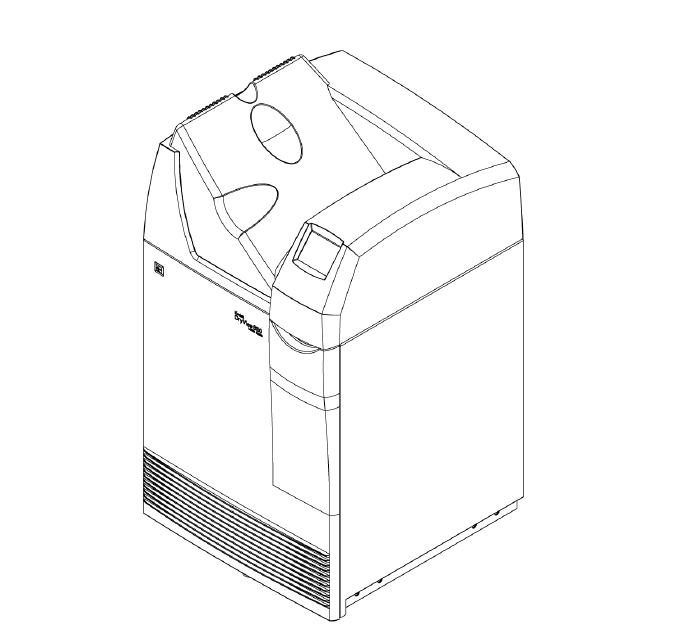
Kodak DryView
8150 Laser Imager
Safety Manual

Eastman Kodak Company
343 State Street
Rochester, NY 14650
© Eastman Kodak Company, 2004
Kodak and DryView are trademarks.
7F3779
Catalog number 1415014
Rev. A

September 27, 2004 i
Table of Contents
1 Safety and Related Information
Safety, Warnings, and Cautions........................................................................................................................1-1
Safety Labels.............................................................................................................................................1-5
Safety and Health Compliance..........................................................................................................................1-8
Safety........................................................................................................................................................1-8
EMC..........................................................................................................................................................1-9
EU Directives..........................................................................................................................................1-16
CE Marking.............................................................................................................................................1-17
Note........................................................................................................................................................1-18

ii September 27, 2004
Table of Contents
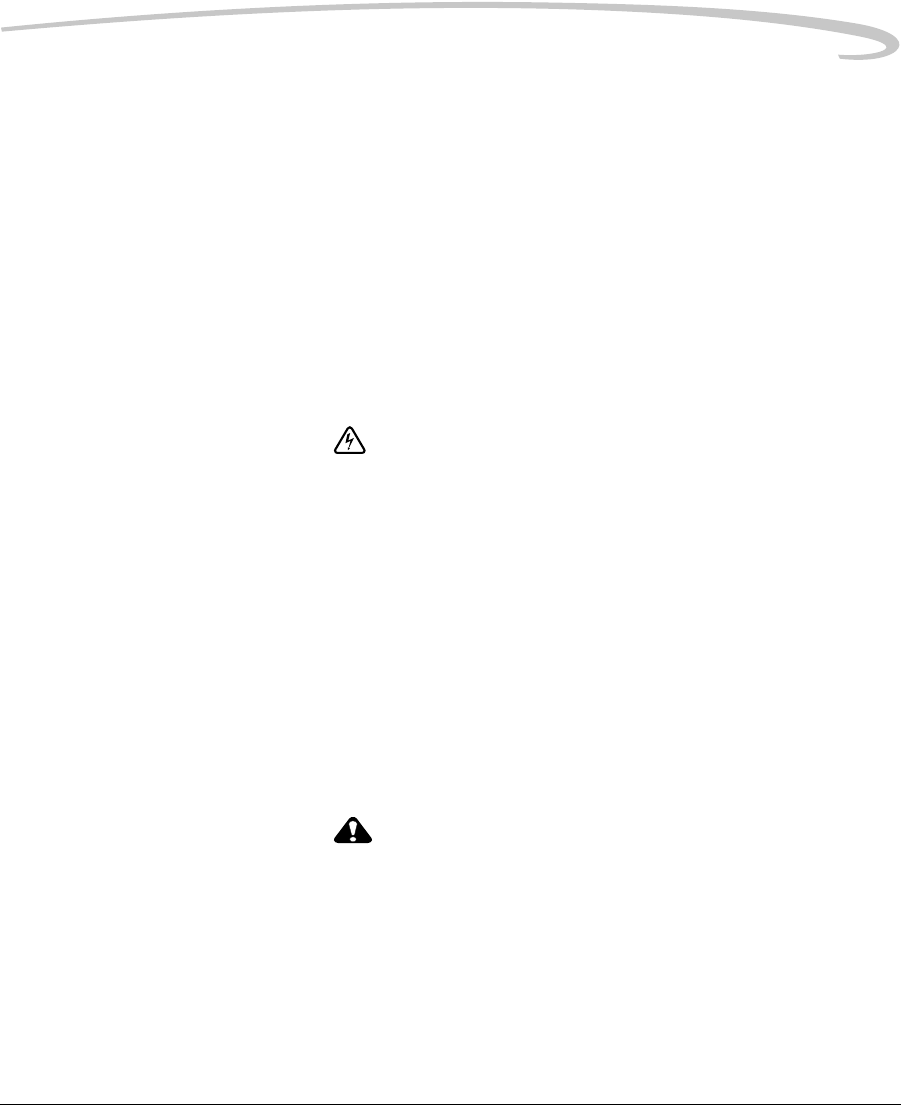
September 27, 2004 7F3779 1-1
1
Safety and Related
Information
Safety, Warnings, and Cautions
Please read and understand all instructions before using the Kodak
DryView 8150 Laser Imager.
RISK OF ELECTRIC SHOCK:
This equipment is operated with hazardous voltage which can shock,
burn or cause death.
• Remove wall plug before servicing equipment. Never pull on cord to
remove from outlet. Grasp plug and pull to disconnect. Only an
Authorized Service Provider of Kodak products may perform
service maintenance on this equipment.
• Do not operate equipment with a damaged power cord.
• Do not use an extension cord to power this equipment.
• Do not operate equipment with any of the safety interlocks overridden.
• Position the power cord so it will not be tripped over or pulled.
• Connect this equipment to a grounded wall outlet.
• Do not operate equipment with the covers open.
WARNING:
This equipment contains moving parts that may be
accessible to the user. Loose clothing, jewelry or long hair
may cause personal injury or damage to the equipment.
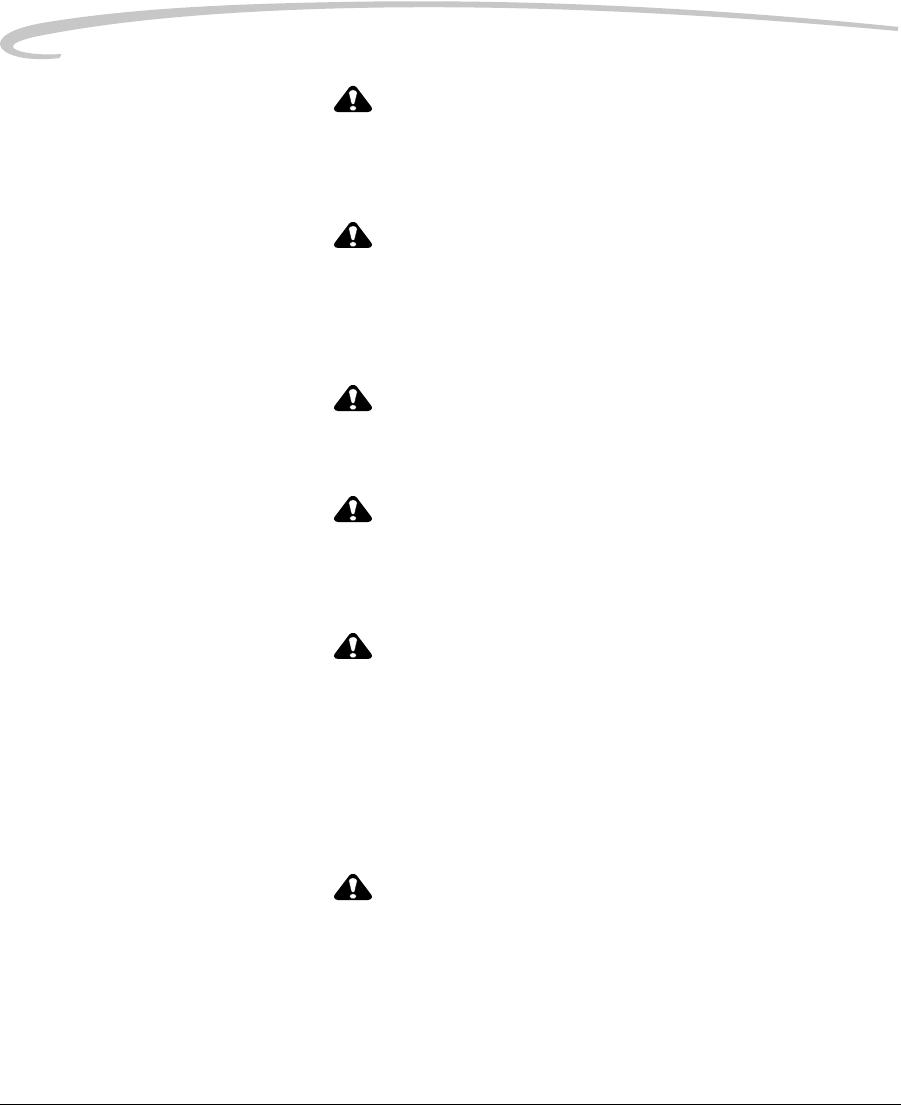
1-2 7F3779 September 27, 2004
Safety and Related Information
WARNING:
This equipment is not contained in a sealed cabinet. Do
not use this equipment in locations where it can come in
contact with liquids, including body fluids.
CAUTION:
This equipment is intended to connect to other medical
devices. Only an Authorized Service Provider of Kodak
products or Customer’s Qualified Service Personnel may
install this equipment.
CAUTION:
Only an Authorized Service Provider of Kodak products may
perform service maintenance on this equipment.
CAUTION:
Do not use a cell phone within 2 meters (6.56 feet) of this
equipment even if you are separated by a wall from this
equipment.
CAUTION:
Do not use a microwave oven within 4 meters (13.12 feet) of
this equipment. Electromagnetic radiation from a microwave
oven is only an issue if after the oven door is closed and
latched, the seal does not maintain an electromagnetic tight
fit between the oven door and oven main housing.
Determining if the seal has an electromagnetic tight fit
requires special detection equipment.
CAUTION:
Do not use in the presence of flammable anesthetics, oxygen,
or nitrous oxide. This equipment does not have a gas-sealed
electronics enclosure and could ignite any flammable or
explosive gases present in its environment.
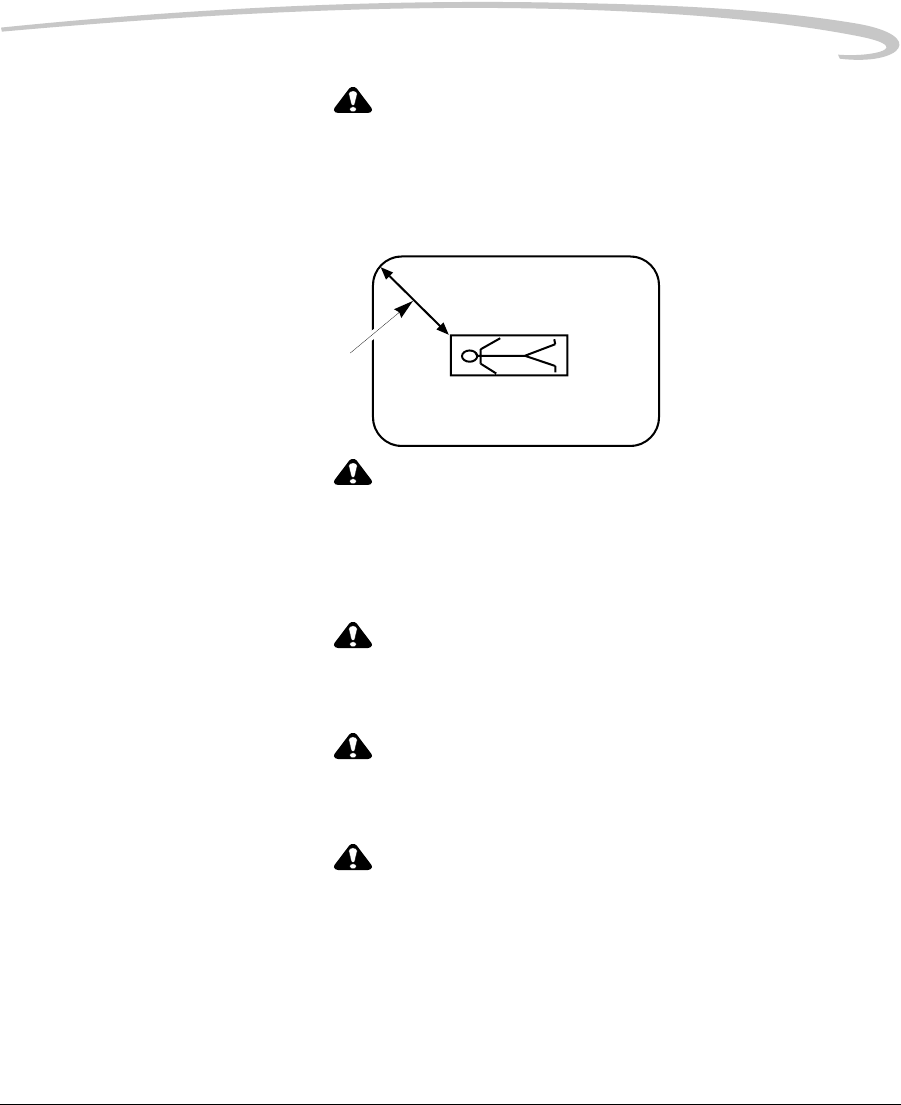
Safety and Related Information
September 27, 2004 7F3779 1-3
CAUTION:
This equipment should not be located within the patient
environment. Therefore, do NOT locate this equipment
closer than 1.83 meters (6 feet) from a patient bed or chair.
CAUTION:
This equipment should not be used in close contact with MRI
devices, due to possible very high magnetic fields near an
MRI unit. The magnetic field in the area where this
equipment is installed must be less than 50 Gauss.
CAUTION:
Do not substitute or modify any part of this equipment
without prior written approval of Eastman Kodak Company.
CAUTION:
(USA Only)
Federal law prohibits dispensing without a prescription.
CAUTION:
FCC (USA Only)
This equipment has been tested and found to comply with
the limits for a class A digital device, pursuant to part 15 of
the FCC Rules. These limits are designed to provide
reasonable protection against harmful interference when the
equipment is operated in a commercial environment. This
equipment generates, uses, and can radiate radio frequency
energy and, if not installed and used in accordance with the
1.83 m
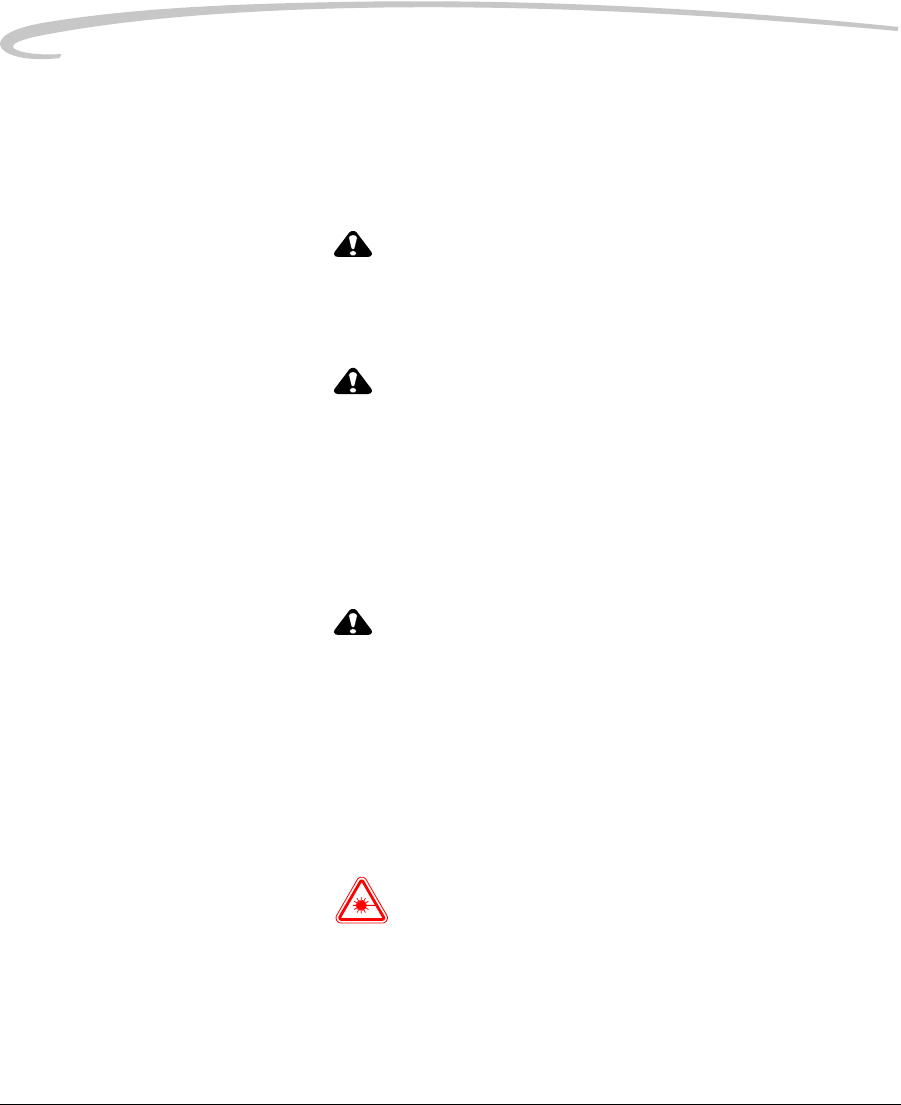
1-4 7F3779 September 27, 2004
Safety and Related Information
instruction manual, may cause harmful interference to radio
communications. Operation of this equipment in a
residential area is likely to cause harmful interference in
which case the user will be required to correct the
interference at his own expense.
CAUTION:
Do not use isopropyl alcohol to clean the exterior surfaces
of this equipment because alcohol can dissolve the exterior
paint on the equipment.
CAUTION:
Filters are considered to be non-hazardous waste according
to the US Environmental Protection Agency Resource
Conservation Recovery Act (RCRA). You may dispose of
filters in a landfill or incinerator with energy recovery in a
municipal, commercial or industrial facility. Contact your
state or local government to determine if additional disposal
requirements apply.
CAUTION:
This equipment contains lead and mercury. The lead is
located in the solder on the circuit boards. Mercury is
located in the back light of the local panel. Disposal of
components containing these materials may be regulated
due to environmental considerations. For disposal or
recycling information at the end of usable service, please
contact your local authorities or visit the Electronics
Industry Alliance Web site at: http://www.eiae.org.
LASER WARNING:
The equipment uses a 50-milliwatt invisible laser. Laser
radiation may be present behind this back panel. The back
panel may only be removed by an Authorized Service
Provider of Kodak products or Customer’s Qualified
Service Personnel. EXPOSURE TO LASER ENERGY MAY
RESULT IN EYE DAMAGE.
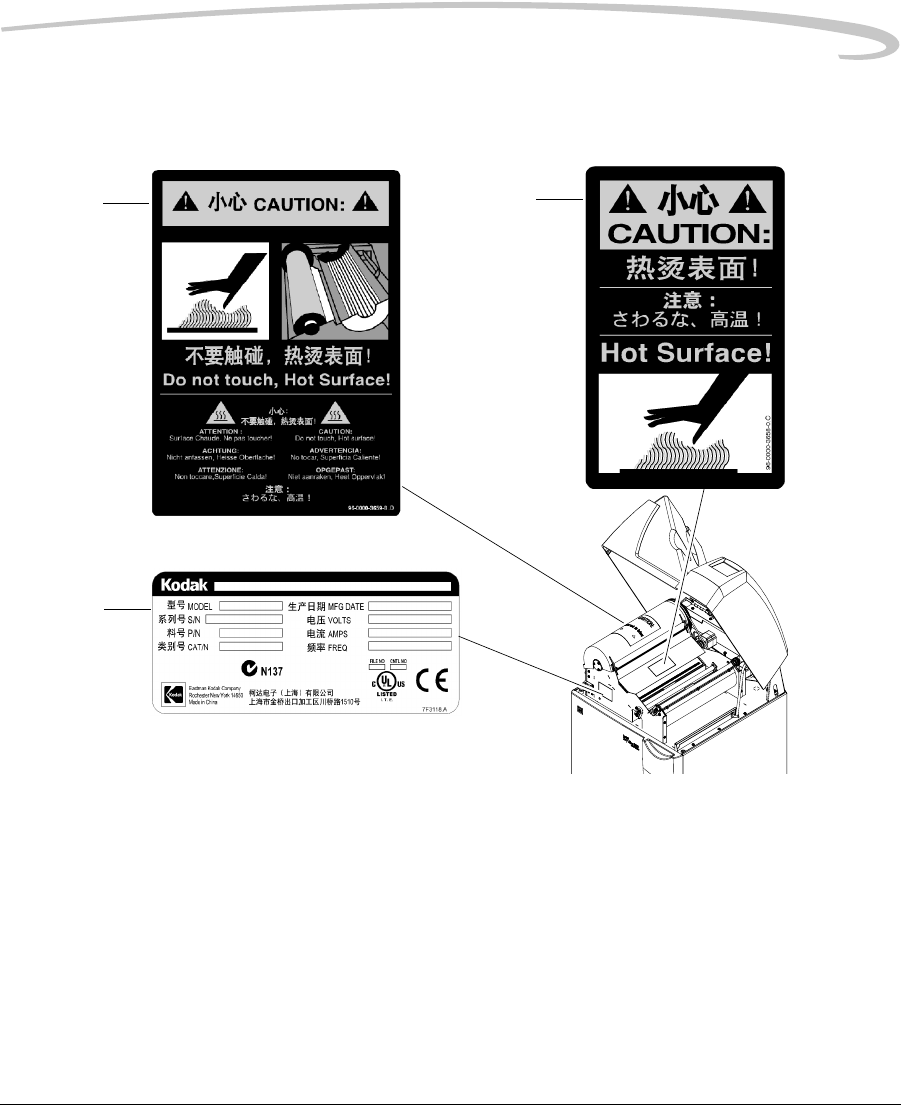
Safety and Related Information
September 27, 2004 7F3779 1-5
Safety Labels Safety labels are attached to this equipment in compliance with
international standards.
Processor Drum Cover Labels
8150
8150001
7F1000
6551261
January 2004
100/120/230 V
12/10/7 A
50/60 Hz
12
3
1Processor Drum Cover label - Warns operators to avoid hot
surfaces when the processor drum cover is open.
2Caution Hot Surface label - Warns operators to use care near the
processor drum to avoid possible burns.
3Serial Plate label - Shows the serial number and model number of
this equipment along with several other important data items.
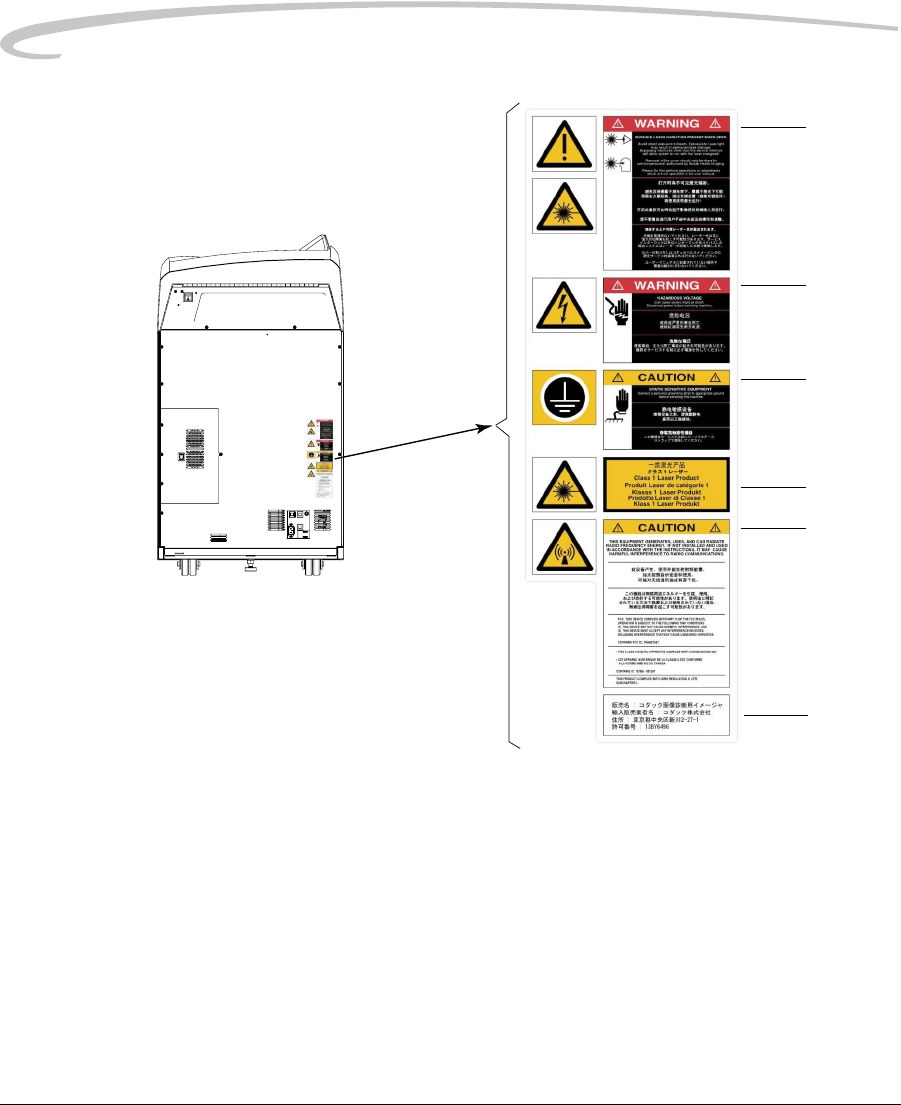
1-6 7F3779 September 27, 2004
Safety and Related Information
Rear Panel - Warning and Caution Labels
1
2
3
4
5
6
1Invisible Laser Radiation Present When Open label - Warns
operators that invisible laser radiation is present under the panel
where the label is attached. Only an Authorized Service Provider of
Kodak products or Customer’s Qualified Service Personnel should
attempt access.
2Hazardous Voltage label - Warns operators that high voltage is
present under panels where the label is attached. Only the an
Authorized Service Provider of Kodak products or Customer’s
Qualified Service Personnel should attempt access.

Safety and Related Information
September 27, 2004 7F3779 1-7
3Static Sensitive Equipment label - Identifies static-sensitive
components. Connect a personal grounding strap to appropriate
ground before servicing this equipment. Only an Authorized
Service Provider of Kodak products may perform service
maintenance on this equipment.
4Class 1 Laser Product - Indicates that this equipment complies with
IEC requirements for a Class 1 Laser Product.
5Radio Frequency Energy - Indicates that this equipment can radiate
radio frequency energy. If not installed and used in accordance
with the instructions, this equipment may cause harmful
interference to radio communications.
6Japanese Import License - Not safety-related.

1-8 7F3779 September 27, 2004
Safety and Related Information
Safety and Health Compliance
This equipment has been tested for and complies with the following Safety
and Emissions Standards. Certificates of Compliance and Declarations of
Conformity have been issued as shown below.
Safety United States
Canada
Europe
21 CFR 1040.10 Class I: FDA CDRH Code of Federal Regulations Title 21
Food and Drugs, Volume 8 - Food and Drugs, Part 1040 - Performance
Standards for Light Emitting Products, Section 10 - Laser Products.
FDA 95-415 Premarket Notification 510(K): Regulatory Requirements For
Medical Devices.
UL 60950-1: Safety of Information Technology Equipment. (3rd Edition)
UL 60601-1-1: Medical electrical equipment - Part 1: General
requirements for safety - Section 1: Collateral standard: Safety
requirements for medical electrical systems, Clause 19.
IEC 60825-1: Safety of laser products - Part 1: Equipment classification,
requirements and user’s guide.
C22.2 NO 60950-1 CAN/CSA, Safety of Information Technology Equipment,
Including Electrical Business Equipment (Gen Instr 1) (UL 1950-95).
IEC 60825-1: Safety of Laser products - Part 1: Equipment classification,
requirements and user’s guide.
EN60950-1: Safety of Information Technology Equipment, Including
Electrical Business Equipment (2000).
EN60601-1-1: Medical electrical equipment - Part 1: General
requirements for safety - Section 1: Collateral standard: Safety
requirements for medical electrical systems, Clause 19.
EN60825-1: Safety of laser products - Part 1: Equipment classification,
requirements and user's guide.

Safety and Related Information
September 27, 2004 7F3779 1-9
Rest of World
EMC United States
Canada
IEC 60950-1: Safety of information technology equipment.
IEC 60601-1-1: Medical electrical equipment - Part 1: General
requirements for safety - Section 1: Collateral standard: Safety
requirements for medical electrical systems, Clause 19.
IEC 60825-1: Safety of laser products - Part 1: Equipment classification,
requirements and user's guide.
FCC Rules and Regulations, Title 47, Part 15, Subpart B, Class A: Radio
Frequency Devices: Unintentional Radiators.
This equipment has been tested and been found to comply with the limits
for a Class A digital device pursuant to part 15 of the FCC rules. Those limits
are designed to provide reasonable protection against harmful
interference in a commercial environment. This equipment generates,
uses, and can radiate radio frequency energy and, if not installed and used
in accordance with the instruction manual, may cause harmful
interference to radio communications. Operation of this equipment in a
residential area is likely to cause harmful interference in which case the
user will be required to correct the interference at his own expense.
FCC Rules and Regulations, Title 47, Part 15, Subpart C, Radio Frequency
Devices: Intentional Radiators. “FCC ID: PA481507E2537"
CAN/CSA-C108.6-M91, Class A: Limits and Methods of Measurement of
Electromagnetic Disturbance Characteristics of Industrial, Scientific and
Medical (ISM) Radio-Frequency Equipment. (CISPR 11,Class A
(EN55011)).
RSS-210, Issue 5:2001, Section 6.2.2(e): Low Power License-exempt
Radio Communication Devices (All Frequency Bands), a Spectrum
Management and Telecommunications Policy, Radio Standard
Specification.
Intentional Radiation “IC: 1016B-8150”

1-10 7F3779 September 27, 2004
Safety and Related Information
Europe
Rest of World
Japan
This Class A digital apparatus complies with Canadian ICES-003.
CET APPAREIL NUM ENRIQUE DE CLASSE A EST CONFORME A LA NORME
NMB–003 DU CANADA.
This Class A digital apparatus meets all requirements of the Canadian
Interference-Causing Equipment Regulations.
European Telecommunication Standard (ETS) EN300 330:
Electromagnetic Compatibility and Radio Spectrum Matters (ERM); Short
Range Devices (SRD); Technical Characteristics and Test Methods for
Radio Equipment in the Frequency Range 9 kHz to 25 MHz and Inductive
loop Systems in the Frequency Range 9 kHz to 30 MHz.
European Telecommunication Standard (ETS) EN300 489-3:
Electromagnetic Compatibility and Radio Spectrum Matters (ERM) -
Electromagnetic compatibility (EMC) standard for radio equipment and
services - Part 3: specific conditions for short-range devices (SRD)
operating on frequencies between 9 kHz and 40 GHz.
IEC 60601-1-2: Medical electrical equipment - Part 1-2: General
requirements for safety - Collateral standard: Electrical compatibility -
Requirements and tests.
VCCI V.3/2001.04: Agreement of Voluntary Control Council for
Interference by Information Technology Equipment Technical
Requirements.
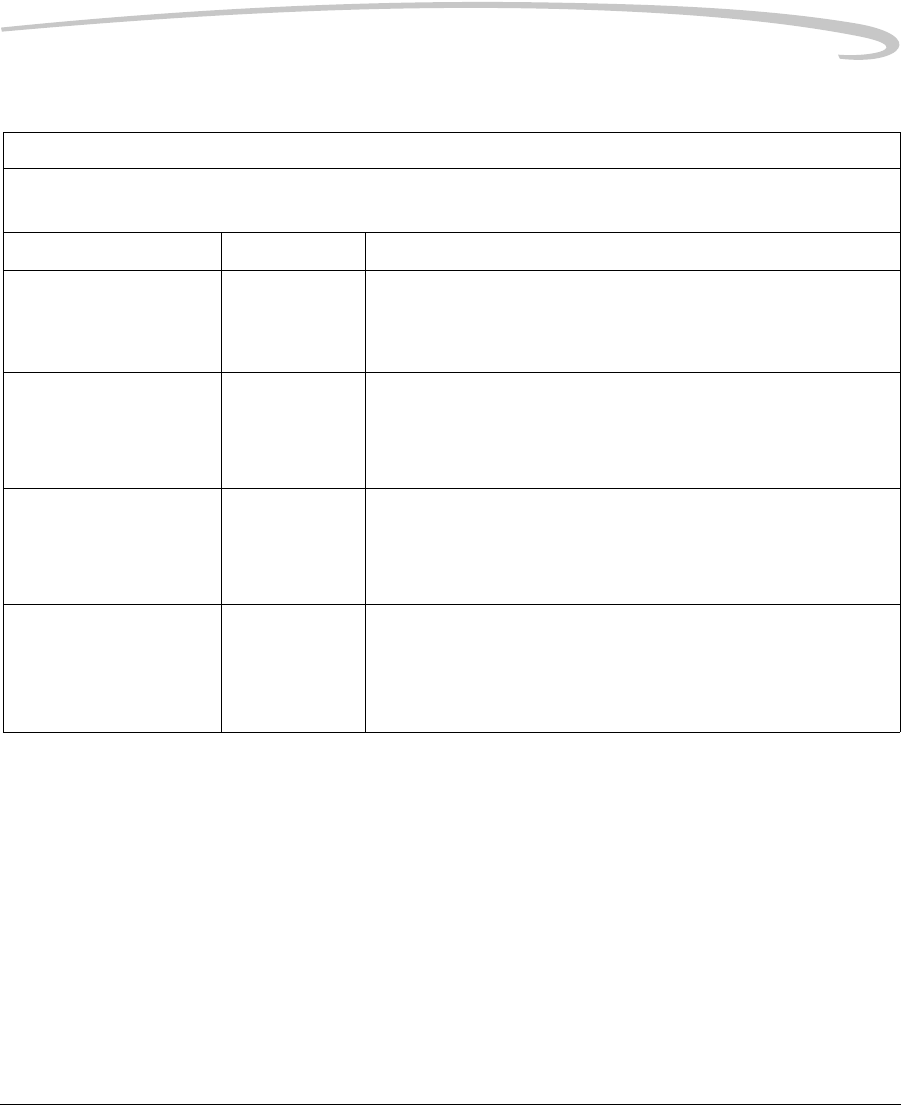
Safety and Related Information
September 27, 2004 7F3779 1-11
Europe and the Rest of the World
Guidance and Manufacturer’s Declaration for Electromagnetic Emissions
The Kodak DryView 8150 Laser Imager is intended for use in the electromagnetic environment specified below. The
customer or user of the Kodak DryView 8150 Laser Imager should assure that it is used in such an environment.
Emissions Test Compliance Electromagnetic Environment - Guidance
RF emissions:
• EN55011
•CISPR 11
Group 1 The Kodak DryView 8150 Laser Imager uses RF energy only for its
internal function. Therefore, its RF emissions are very low and are not
likely to cause any interference in nearby electronic equipment.
RF emissions:
• EN55011
•CISPR 11
Class A The Kodak DryView 8150 Laser Imager is suitable for use in all
establishments other than domestic and those directly connected to
the public low-voltage power supply network that supplies buildings
used for domestic purposes.
Harmonics emissions:
• EN61000-3-2
• IEC 61000-3-2
Class A The Kodak DryView 8150 Laser Imager is suitable for use
everywhere, including those establishments directly connected to the
public low-voltage power supply network that supplies buildings used
for domestic purposes.
Voltage fluctuations and
flicker emissions:
• EN61000-3-3
• IEC 61000-3-3
Complies The Kodak DryView 8150 Laser Imager is suitable for use
everywhere, including those establishments directly connected to the
public low-voltage power supply network that supplies buildings used
for domestic purposes.
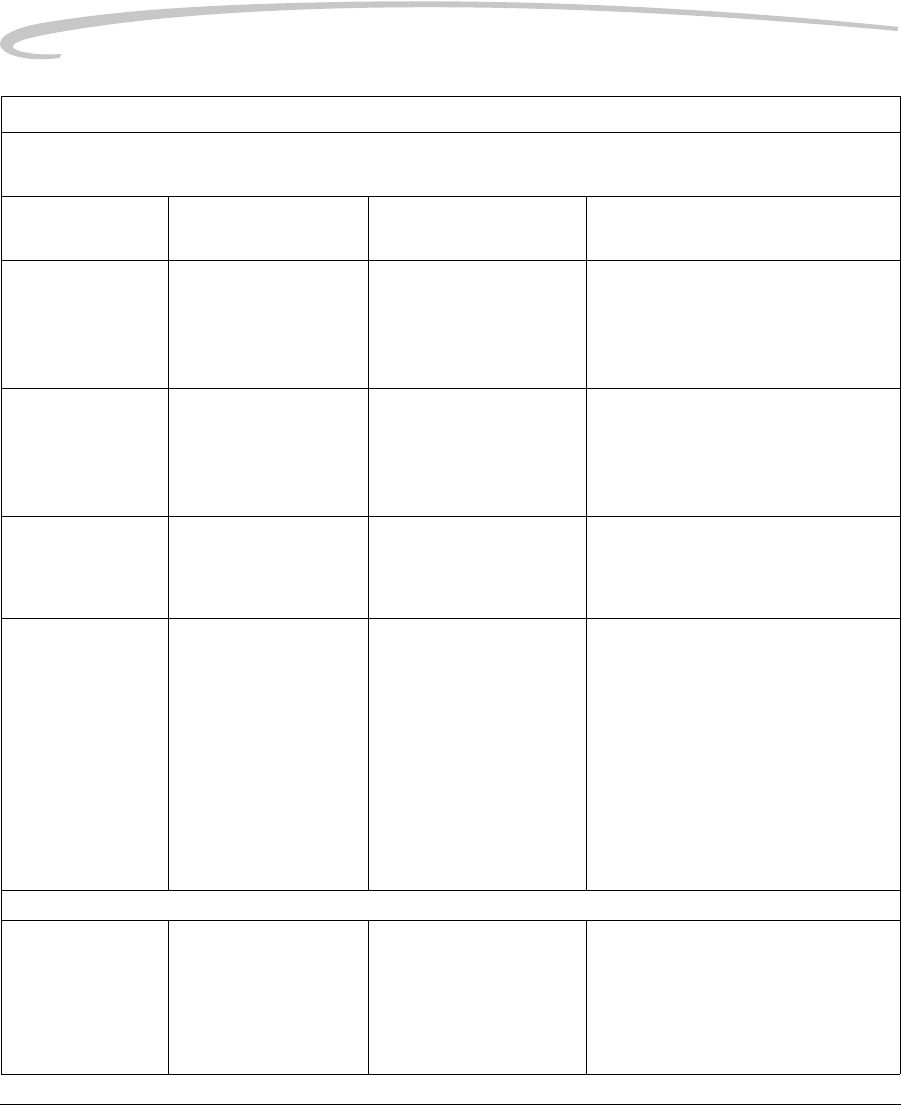
1-12 7F3779 September 27, 2004
Safety and Related Information
Guidance and Manufacturer’s Declaration for Electromagnetic Immunity
The Kodak DryView 8150 Laser Imager is intended for use in the electromagnetic environment specified below. The
customer or user of the Kodak DryView 8150 Laser Imager should assure that it is used in such an environment.
Immunity Test IEC 60601 Test Level Compliance Level Electromagnetic Environment -
Guidance
Electrostatic
discharge (ESD):
• EN61000-4-2
• IEC 61000-4-2
± 6 kV contact
± 8 kV air ± 6 kV contact
± 8 kV air Floors should be wood, concrete, or
ceramic tile. If floors are covered with
synthetic material, the relative humidity
should be at least 30%.
Electrical fast
transient/burst:
• EN61000-4-4
• IEC 61000-4-4
± 2 kV for power supply
lines
± 1 kV for input/output
lines
± 2 kV for power supply
lines
± 1 kV for input/output
lines
Mains power quality should be that of a
typical commercial or hospital
environment.
Surge:
• EN61000-4-5
• IEC 61000-4-5
± 1 kV differential mode
± 2 kV common mode ± 1 kV differential mode
± 2 kV common mode Mains power quality should be that of a
typical commercial or hospital
environment.
Voltage dips, short
interruptions and
voltage variations
on power supply
lines:
• EN61000-4-11
• IEC 61000-4-11
<5% Uτ* (>95% dip in
Uτ*) for 0.5 cycle
40% Uτ* (60% dip in
Uτ*) for 5 cycles
70% Uτ* (30% dip in
Uτ*) for 25 cycles
<5% Uτ* (>95% dip in
Uτ*) for 5 sec.
<5% Uτ* (>95% dip in
Uτ*) for 0.5 cycle
40% Uτ* (60% dip in
Uτ*) for 5 cycles
70% Uτ* (30% dip in
Uτ*) for 25 cycles
<5% Uτ* (>95% dip in
Uτ*) for 5 sec.
Mains power quality should be that of a
typical commercial or hospital
environment. If the user of the Kodak
DryView 8150 Laser Imager requires
continued operation during power
mains interruptions, it is recommended
that the Kodak DryView 8150 Laser
Imager be powered from an
uninterruptible power supply or a
battery.
NOTE: * Uτ is the a.c. mains voltage prior to application of the test level.
Power frequency
(50/60 Hz)
magnetic field:
• EN61000-4-8
• IEC 61000-4-8
3 A/m 3 A/m Mains power quality should be that of a
typical commercial or hospital
environment.
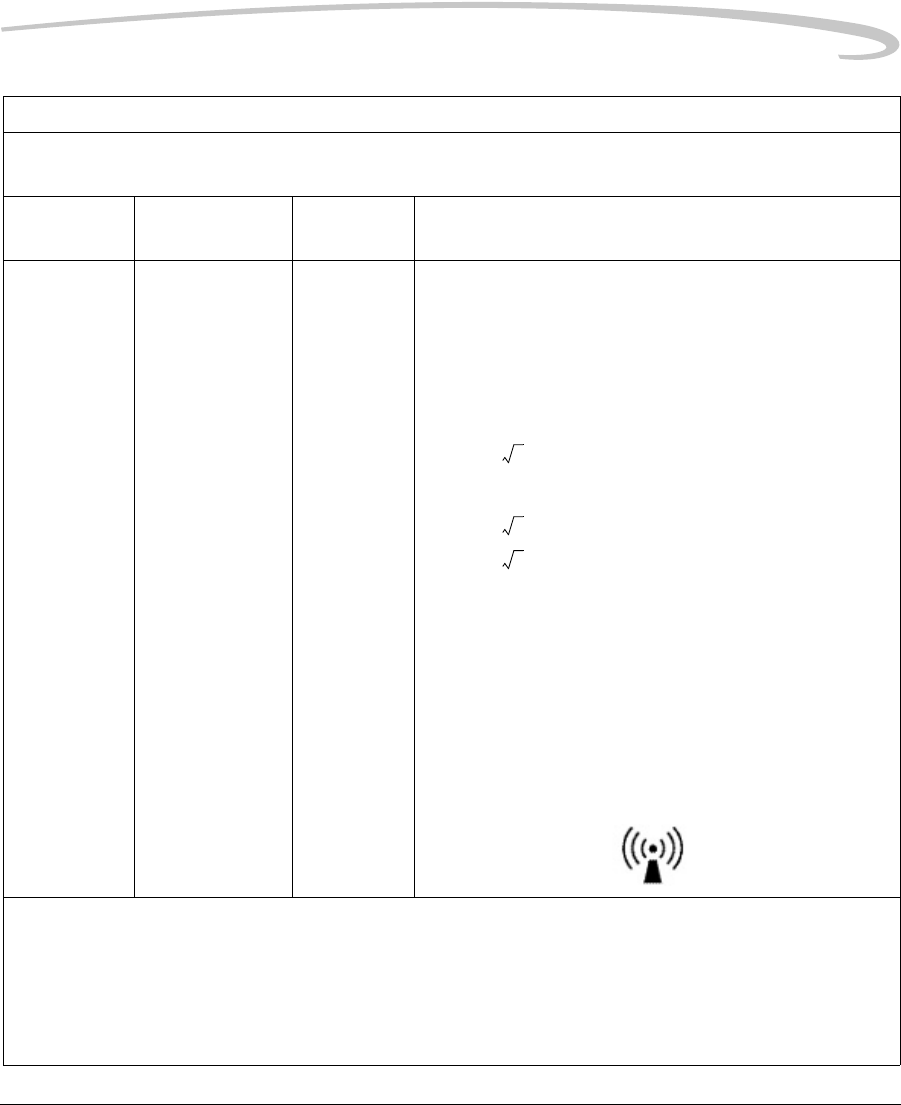
Safety and Related Information
September 27, 2004 7F3779 1-13
Guidance and Manufacturer’s Declaration for Electromagnetic Immunity
The Kodak DryView 8150 Laser Imager is intended for use in the electromagnetic environment specified below. The
customer or user of the Kodak DryView 8150 Laser Imager should assure that it is used in such an environment.
Immunity
Test IEC 60601 Test
Level Compliance
Level Electromagnetic Environment - Guidance
Portable and mobile RF communications equipment should be
used no closer to any part of the Kodak DryView 8150 Laser
Imager, including cables, than the recommended separation
distance calculated from the equation applicable to the
frequency of the transmitter.
Recommended Separation Distance:
Conducted RF
IEC 61000-4-6 3 Vrms
150 kHz to 80 MHz 3 Vrms
Radiated RF
IEC 61000-4-3 3 v/m
80 MHz to 2.5 GHz 3 v/m 80 MHz to 800 MHz
800 MHz to 2.5 GHz
d is the recommended separation distance in meters (m).
P is the maximum output rating of the transmitter in watts (W)
according to the transmitter manufacturer.
Field strengths from fixed RF transmitters, as determined by an
electromagnetic site survey a, should be less than the
compliance level in each frequency range b.
Interference may occur in the vicinity of equipment marked
with the following symbol:
NOTE:
• At 80 MHz and 800 MHz, the higher frequency range applies.
• These guidelines may not apply in all situations. Electromagnetic propagation is affected by absorption and
reflection from structures, objects and people.
a See Note 1 on next page.
b See Note 2 on next page.
d1.17 P=
d1.17 P=
d2.33 P=
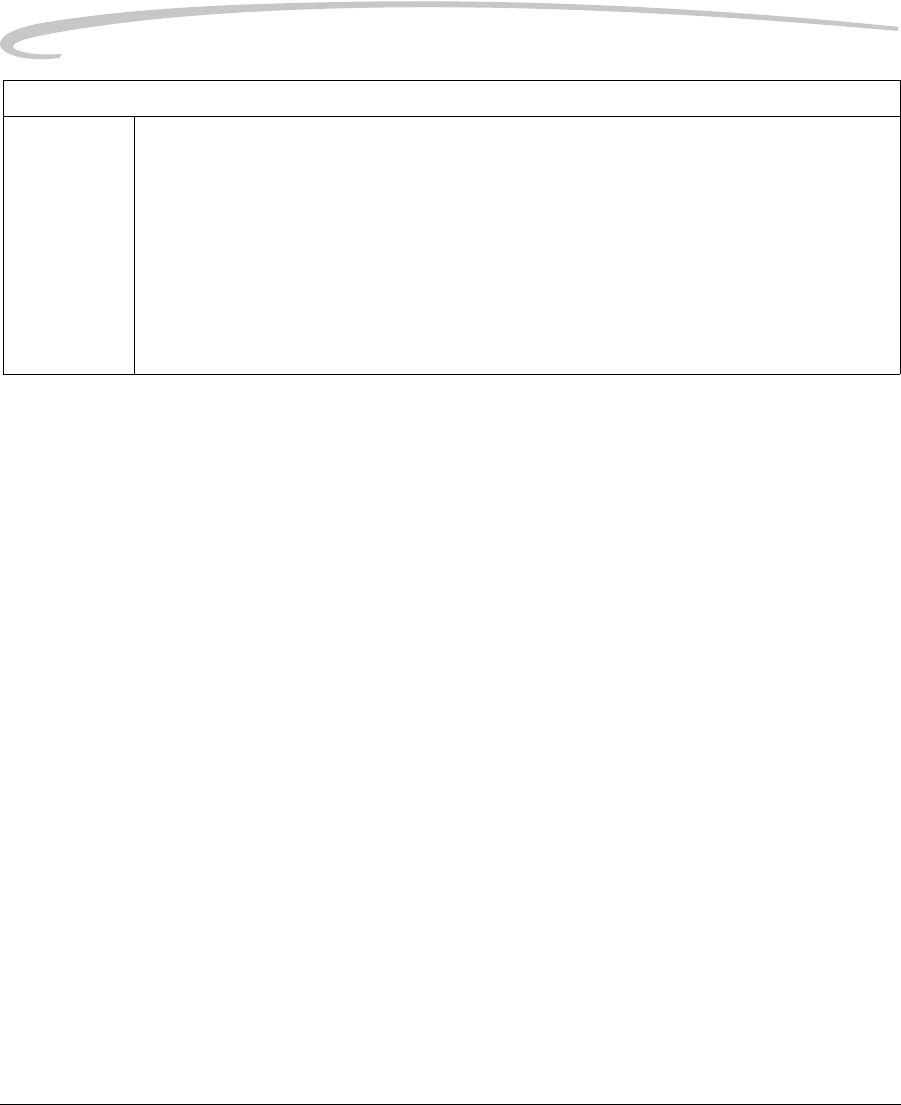
1-14 7F3779 September 27, 2004
Safety and Related Information
Note 1 Field strengths from fixed transmitters, such as base station for radio (cellular/cordless) telephones
and land mobile radios, amateur radio, AM and FM radio broadcast and TV broadcast cannot be
predicted theoretically with accuracy. To assess the electromagnetic environment due to fixed RF
transmitters, an electromagnetic site survey should be considered. If the measured field strength in
the location in which the Kodak DryView 8150 Laser Imager is used exceeds the applicable RF
compliance level on the previous page, the Kodak DryView 8150 Laser Imager should be observed
to verify normal operation. If abnormal performance is observed, additional measures may be
necessary, such as reorienting or relocating the Kodak DryView 8150 Laser Imager.
Note 2 Over the frequency range 150 kHz to 80 MHz, field strengths should be less than 3 v/m.
Guidance and Manufacturer’s Declaration for Electromagnetic Immunity
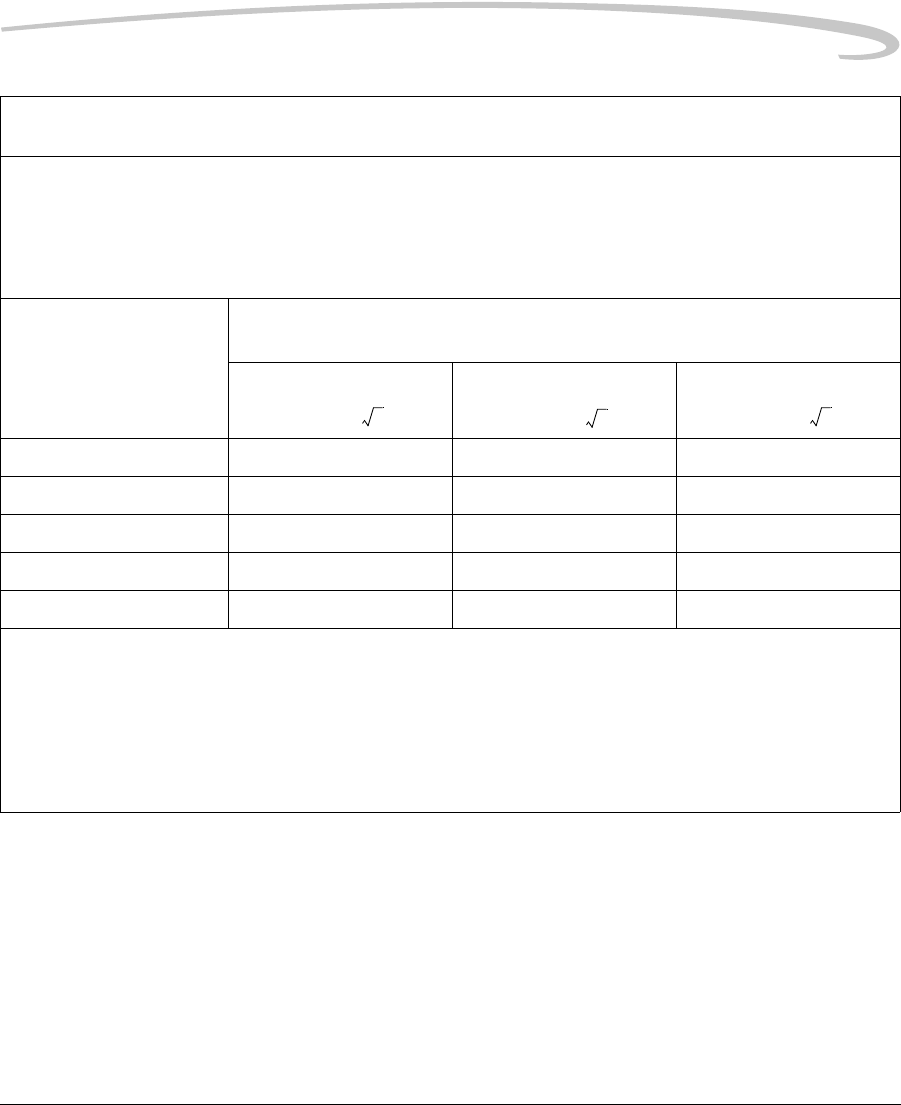
Safety and Related Information
September 27, 2004 7F3779 1-15
Recommended separation distance between portable and mobile RF communications
equipment and the Kodak DryView Model 8150 Laser Imager
The Kodak DryView 8150 Laser Imager is intended for use in an electromagnetic environment in which radiated RF
disturbances are controlled. The customer or the user of the Kodak DryView 8150 Laser Imager can help prevent
electromagnetic interference by maintaining a minimum distance between portable and mobile RF communication
equipment (transmitters) and the Kodak DryView 8150 Laser Imager as recommended below, according to the
maximum output of the communications equipment.
Rated maximum output
power of transmitter (P)
in Watts (W)
Separation distance (d) according to frequency of transmitter
in meters (m)
150 kHz to 80 MHz 80 MHz to 800 MHz 800 MHz to 2.5 GHz
0.01
0.1
1
10
100
For transmitters rated at a maximum output power not listed above, the recommended separation distance d in meters
(m) can be estimated using the equation applicable to the frequency of the transmitter, where P is the maximum output
power rating of the transmitter in watts (W) according to the transmitter manufacturer.
NOTE 1: At 80 MHz and 800 MHz, the separation distance for the higher frequency range applies.
NOTE 2: These guidelines may not apply in all situations. Electromagnetic propagation is affected by absorption and
reflection from structures, objects and people.
d1.17 P=d1.17 P=d2.33 P=

1-16 7F3779 September 27, 2004
Safety and Related Information
EU Directives 93/42/EEC Title: Council Directive Concerning Medical Devices.
99/05/EEC Title: Council Directive Concerning Radio and
Telecommunications Terminal Equipment.
73/23/EEC Title: Council Directive on the Harmonization of the Laws of
Member States Relating to Electrical Equipment Designed for Use within
Certain Voltage Limits.
89/336/EEC Title: Council Directive on the Approximation of the Laws of the
Member States Relating to Electromagnetic Compatibility.

Safety and Related Information
September 27, 2004 7F3779 1-17
CE Marking Documents concerning the conformance of this product to Council
Directive 93/42/EEC of 14 June 1993 concerning Medical Devices can be
obtained from the Eastman Kodak Company, Health Imaging Systems
European Representative at:
Kodak GmbH
Product Safety
70323 Stuttgart
Germany
Phone: ++49 711 406 2993
Fax: ++49 711 406 3513

1-18 7F3779 September 27, 2004
Safety and Related Information
Note The information contained herein is based on the experience and
knowledge relating to the subject matter gained by Eastman Kodak
Company prior to publication. No patent license is granted by this
information. Eastman Kodak Company reserves the right to change this
information without notice and makes no warranty, express or implied, with
respect to this information. Kodak shall not be liable for any loss or
damage, including consequential or special damages, resulting from the
use of this information, even if loss or damage is caused by Kodak's
negligence or other fault.

Eastman Kodak Company
343 State Street
Rochester, NY 14650
© Eastman Kodak Company, 2004
TI READER MODULE
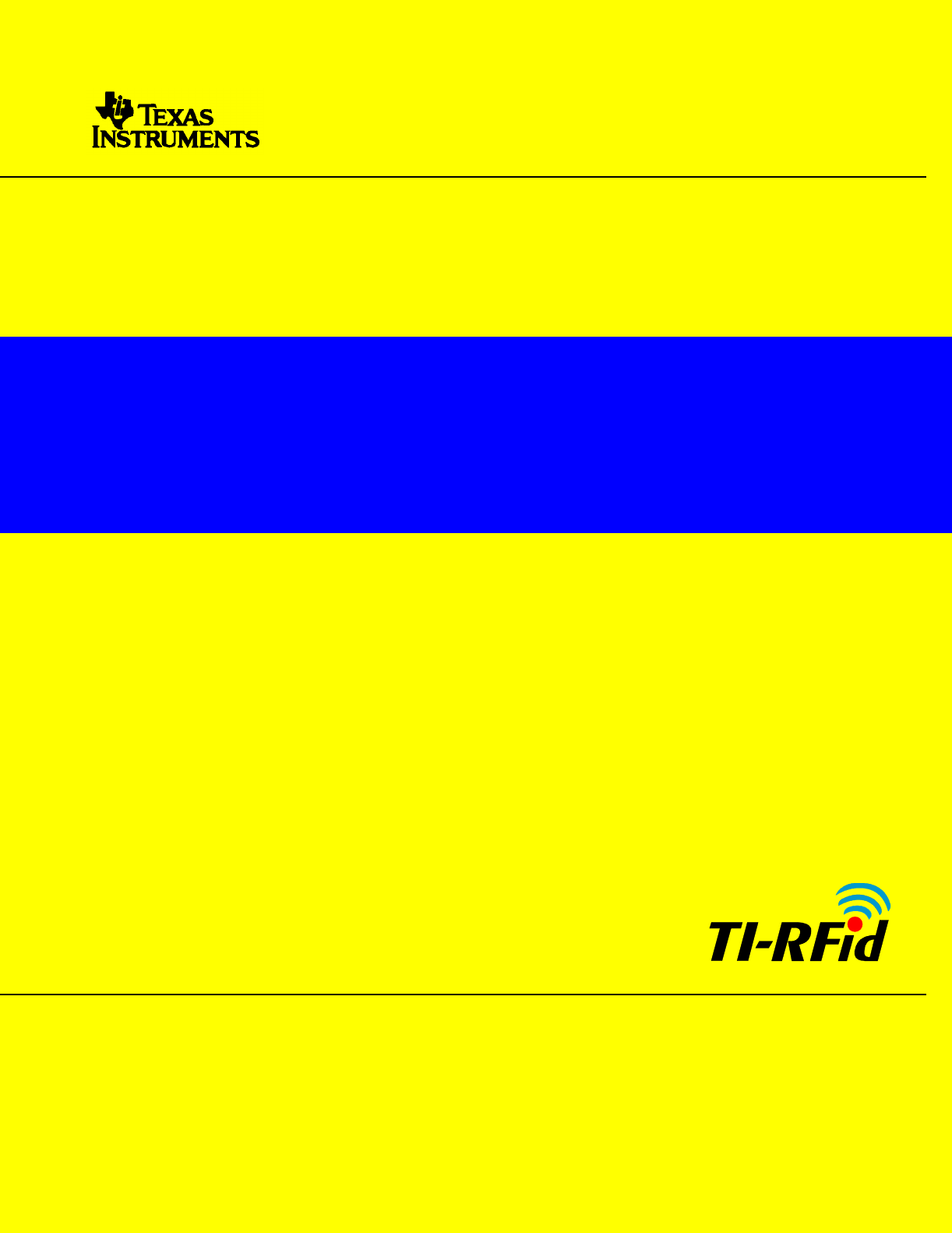
1
HF Reader System Series 6000
S6350 Midrange Reader Module
RI-STU-TRDC-02
Reference Guide
11-06-21-700 September 2002 A TEXAS INSTRUMENTS TECHNOLOG
Y

September 2002 S6350 Midrange Reader Module - Reference Guide
2
Third Edition - September 2002
This is the third edition of this manual. It describes the following product:
S6350 Midrange Reader Module RI-STU-TRDC-02
Firmware Version 1.44
Major Changes: - Addition of Baud Rate Configuration Command
- Note to ISO Read Multiple Blocks Command
Texas Instruments (TI) reserves the right to make changes to its products or services or
to discontinue any product or service at any time without notice. TI provides customer
assistance in various technical areas, but does not have full access to data concerning
the use and applications of customer’s products
Therefore, TI assumes no liability and is not responsible for customer applications or
product or software design or performance relating to systems or applications
incorporating TI products. In addition, TI assumes no liability and is not responsible for
infringement of patents and/or any other intellectual or industrial property rights of third
parties, which may result from assistance provided by TI.
TI products are not designed, intended, authorized or warranted to be suitable for life
support applications or any other life critical applications which could involve potential
risk of death, personal injury or severe property or environmental damage.
The TIRIS and TI-RFid logo, the words TIRIS, TI-RFid, TI-RFID and Tag-it are
trademarks or registered trademarks of Texas Instruments Incorporated (TI).
Copyright © 2002 Texas Instruments Incorporated (TI).
This document may be downloaded onto a computer, stored and duplicated as
necessary to support the use of the related TI products. Any other type of duplication,
circulation or storage on data carriers in any manner not authorized by TI represents a
violation of the applicable copyright laws and shall be prosecuted.
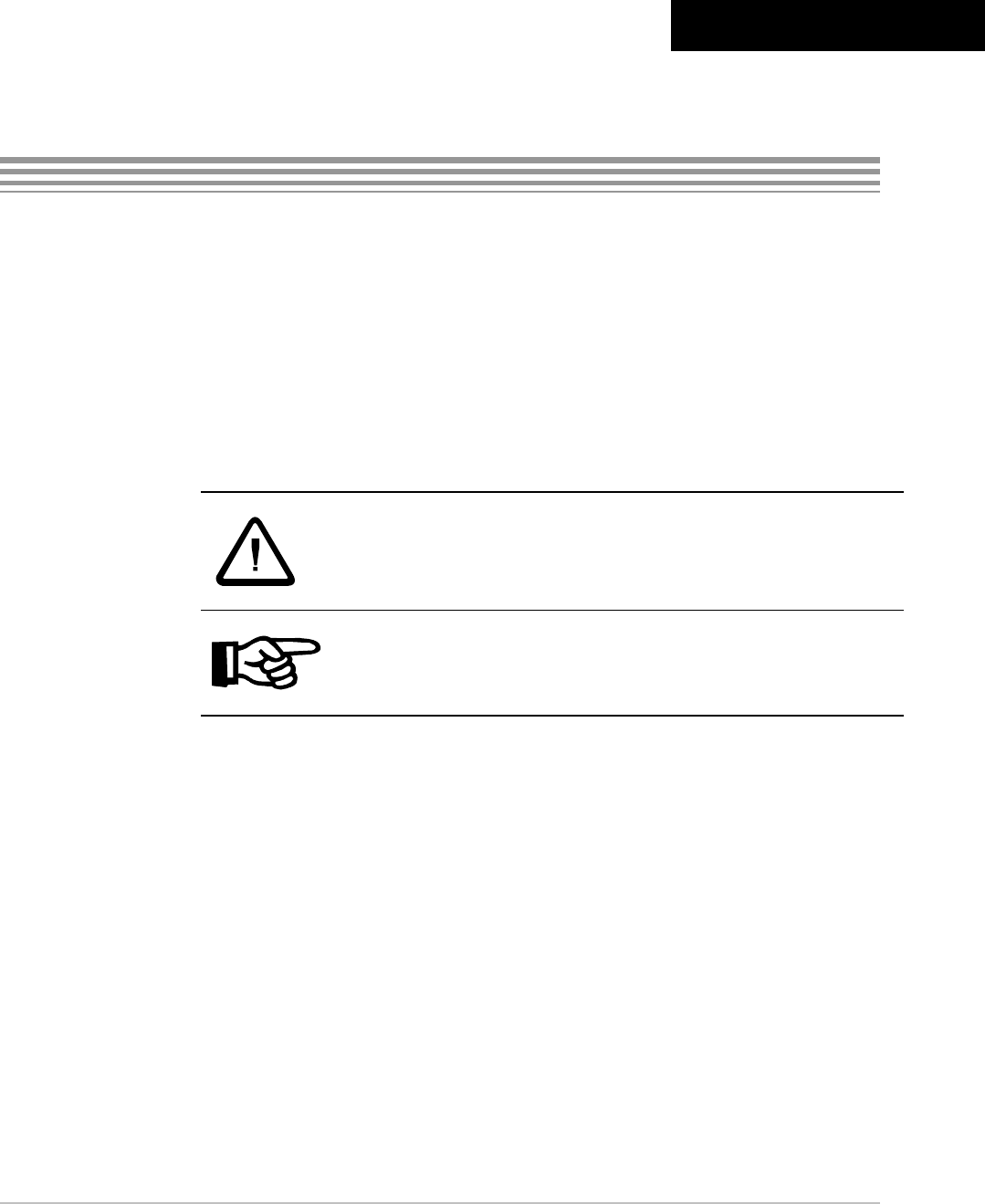
3
Read This First
About This Manual
This reference guide for the S6350 Midrange Reader Module is designed for use by TI
customers who are engineers experienced with RFID Systems and Radio Frequency
Identification Devices (RFID).
Regulatory, safety and warranty notices that must be followed are provided in
Chapter 4.
Conventions
The following pictograms and designations are used in these operating instructions:
CAUTION:
This indicates information on conditions, which must be
met, or a procedure, which must be followed, which if not
needed could cause permanent damage to the system.
Note:
Indicates conditions, which must be met, or procedures which must
be followed, to ensure proper functioning.
Preface

September 2002 S6350 Midrange Reader Module - Reference Guide
4
If You Need Assistance
For more information, please contact the sales office or distributor nearest you. This
contact information can be found on our web site at:
http://www.ti-rfid.com
Terms and Abbreviations
The terms and abbreviations used in this manual can be found in the Terms and
Abbreviations Manual, document number 11-03-21-002. This manual can be found in
the document center on our web site at:
http://www.ti-rfid.com
Numerical Representations
Unless otherwise noted, numbers are represented as decimal.
Hexadecimal numbers are represented with the suffix hex, e.g. A5F1hex
Binary numbers are represented with the suffix 2, e.g. 10112
Byte representations: the least significant bit (lsb) is bit 0 and the most significant bit
(msb) is bit 7.

September 2002 S6350 Midrange Reader Module - Reference Guide
5
Document Overview
Chapter 1: Introduction ............................................................................................................. 6
1.1 Description ......................................................................................................... 7
1.2 Programming Interface ...................................................................................... 7
Chapter 2: Hardware Description............................................................................................. 8
2.1 General Specification......................................................................................... 9
2.1.1 Functional Requirements............................................................................. 9
2.1.2 Power Supply............................................................................................... 9
2.1.3 Output Power ............................................................................................... 9
2.1.4 RF Physical Layer...................................................................................... 10
2.1.5 Required Antenna Parameters .................................................................. 10
2.1.6 Input / output pins (CN1 pins 3 and 4) ....................................................... 10
2.1.7 Baseband receiver..................................................................................... 11
2.1.8 Connector Details ...................................................................................... 12
2.1.9 16-pin Header Connector CN1 .................................................................. 12
2.1.10 RI-STU-TRDC-02 (CN1) Pin Assignments............................................... 13
2.2 Mechanical Specifications................................................................................ 14
2.2.1 RI-STU-TRDC-02 with 16-pin Straight Header Connector ........................ 14
Chapter 3: Reader Protocol .................................................................................................... 15
3.1 Serial Protocol Definition.................................................................................. 16
3.1.1 Request Packet Format (Host to Reader) ................................................. 16
3.1.2 Response Packet Format (Reader to Host) .............................................. 17
3.1.3 Command Flags Request .......................................................................... 17
3.1.4 Command Flags Response ....................................................................... 18
3.1.5 BCC ........................................................................................................... 18
3.1.6 Example Request Packet .......................................................................... 18
3.2 Command Definitions....................................................................................... 19
3.2.1 Tag-it HF Command Definitions ................................................................ 19
3.2.2 Miscellaneous Commands......................................................................... 22
3.2.3 ISO/IEC 15693 Part 3 Transmission Protocol ........................................... 26
3.2.3.1 ISO/IEC 15693-3 Command Codes ....................................................... 26
3.2.3.2 Request/Response Packet Format for ISO/IEC 15693-3....................... 27
3.2.3.3 Mandatory Commands ........................................................................... 30
3.2.3.4 Optional Commands ............................................................................... 32
Chapter 4: Regulatory and Warrenty Notices ....................................................................... 42
4.1 Regulatory Notes ............................................................................................. 43
4.2 FCC Notices (U.S.A.)....................................................................................... 43
4.3 R&TTE Conformity (Europe)........................................................................... 43
4.4 Warranty and Liability ...................................................................................... 43
Appendix A: Downloading Data to FLASH Memory ............................................................. 44
Appendix B: Error Codes......................................................................................................... 45
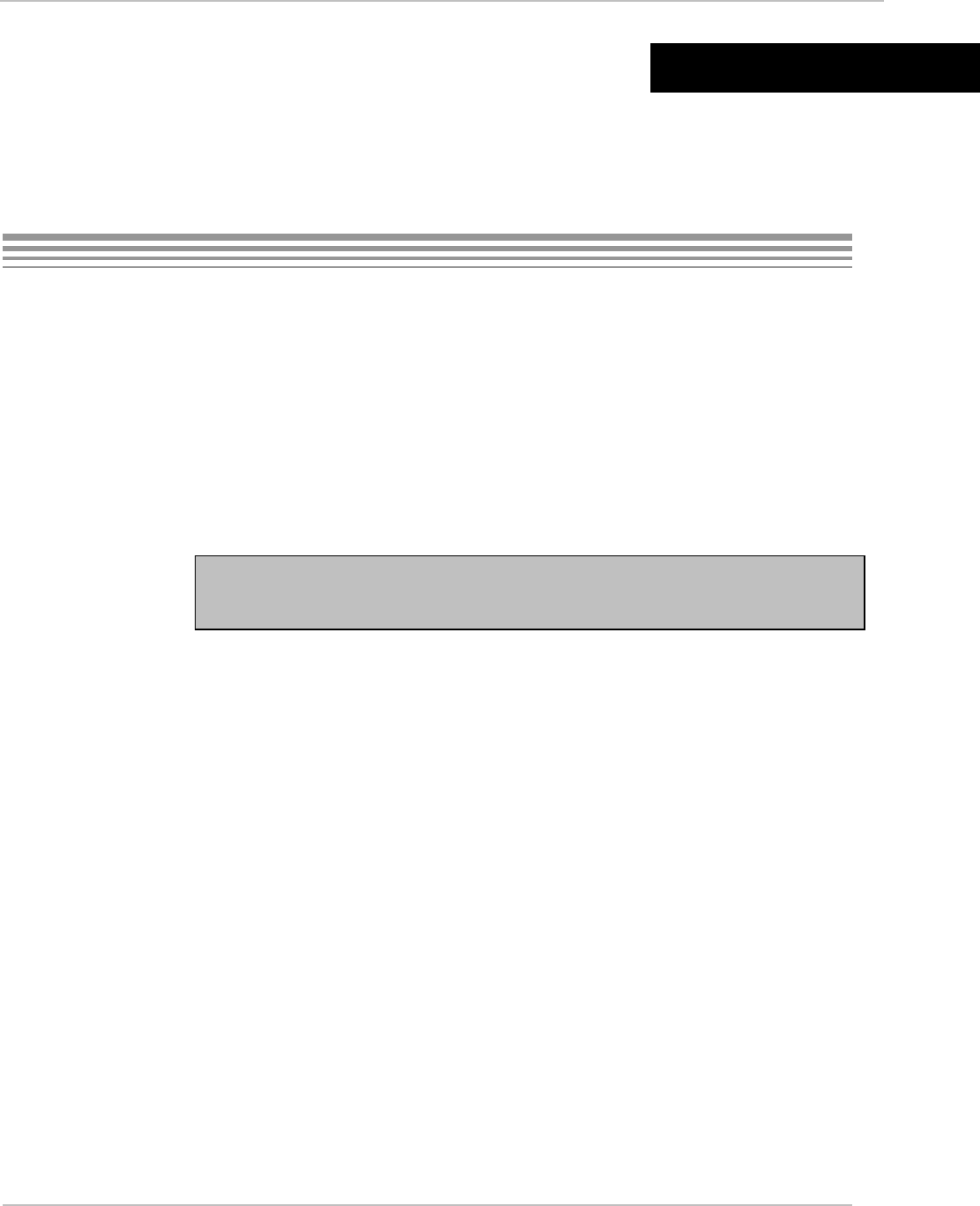
September 2002 S6350 Midrange Reader Module - Reference Guide
6
Introduction
Topic Page
1.1 Product Description............................................................................................ 7
1.2 Programming Interface ...................................................................................... 7
Chapter 1
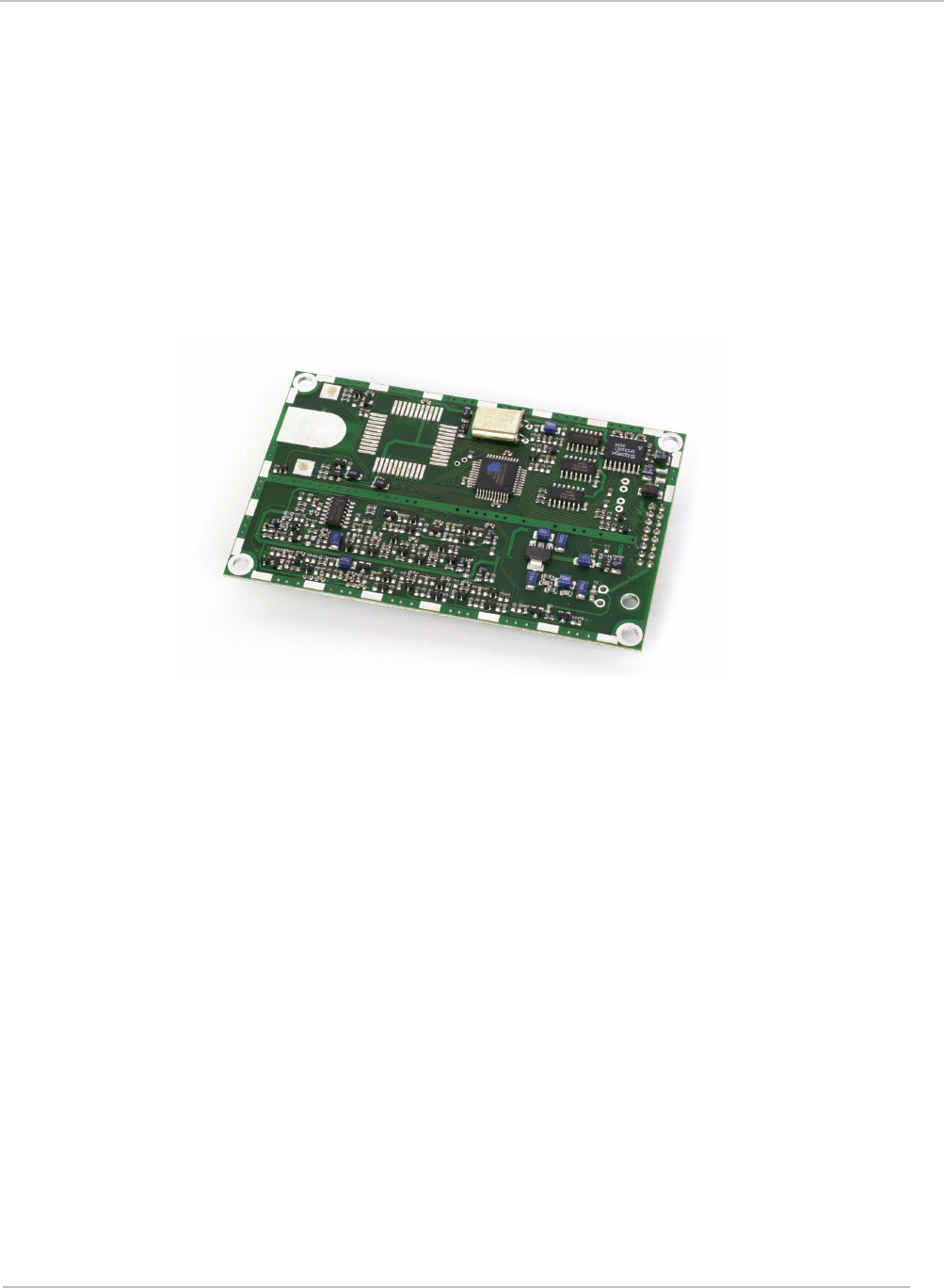
September 2002 S6350 Midrange Reader Module - Reference Guide
7
1.1 Description
This document describes the features and operational characteristics of the S6350 Midrange Reader
Module as shown in Figure 1. The S6350 Reader operates at a frequency of 13.56MHz and handles
all RF and digital functionsin in order to communicate with Tag-it HF, Tag-it HF-I (ISO15693
compliant) and all other ISO15693 compliant transponders from various suppliers. This reference
guide provides the details that are necessary to properly interface and use the reader as a part of an
integrated system.
Figure 1: S6350 High Frequency Reader
1.2 Programming Interface
The S6350 Reader is designed to operate as a part of a host-based reader system, which essentially
relegates the reader to be a slave to the host. Host-to-Reader serial communications are
accomplished within data packets whereby communications from the host to the reader are known as
requests, and replies from the reader to the host are known as responses. This communication
occurs at RS-232 levels using 1 start bit, 8 data bits, 1 stop bit, no parity and the baud rate is
configurable to 9600, 19200, 38400 and 57600baud. By definition, the host is always the primary
station and initiates all communication sequences. These sequences consist of request/response
pairs where the host waits for a response prior to continuing.
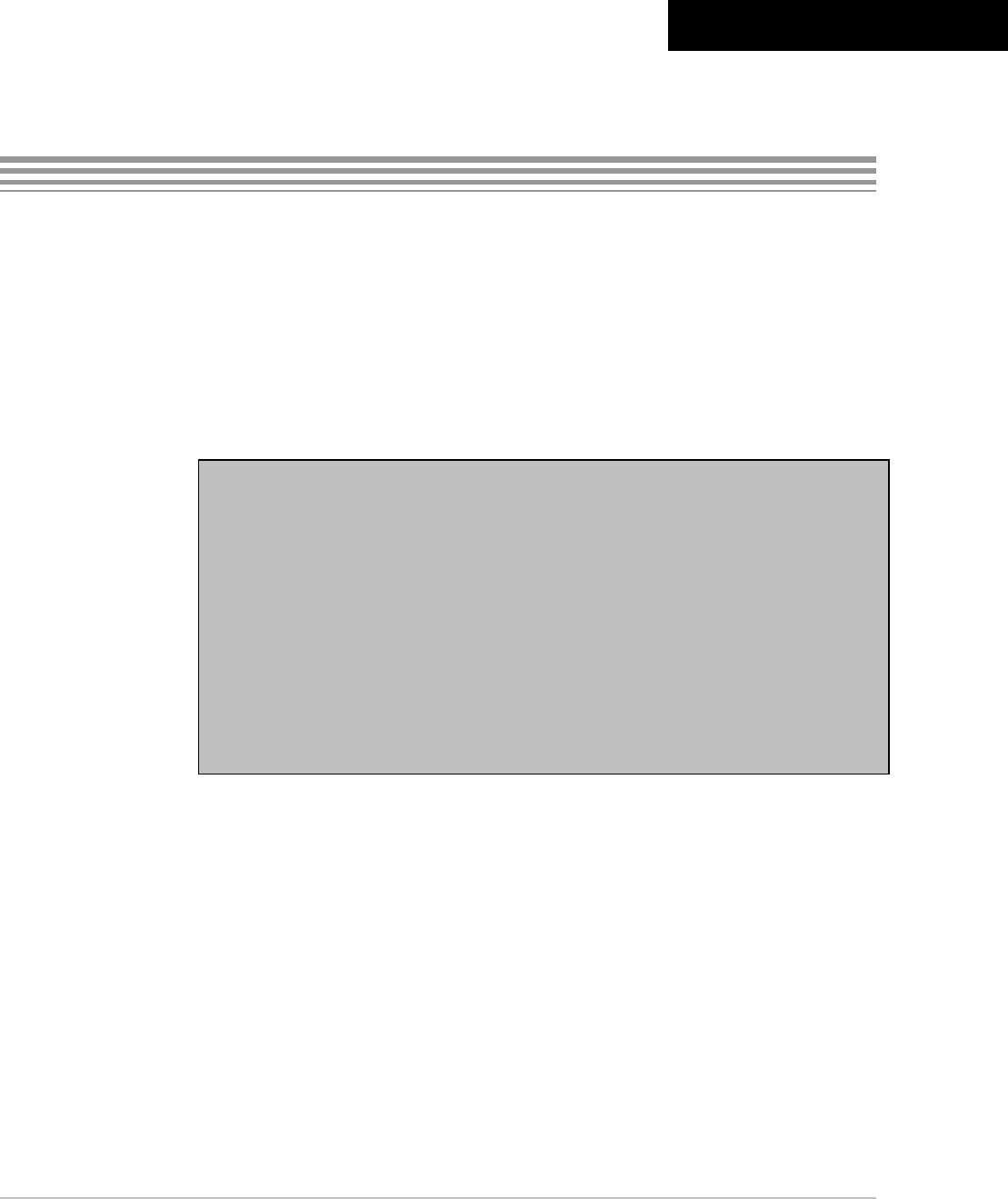
8
Hardware Description
Topic Page
2.1 General Specification........................................................................................ 9
2.1.1 Functional Requirements............................................................................. 9
2.1.2 Power Supply............................................................................................... 9
2.1.3 Output Power ............................................................................................... 9
2.1.4 RF Physical Layer...................................................................................... 10
2.1.5 Required Antenna Parameters .................................................................. 10
2.1.6 Input / output pins (CN1 pins 3 and 4) ....................................................... 10
2.1.7 Baseband receiver..................................................................................... 11
2.1.8 Connector Details ...................................................................................... 12
2.1.9 16-pin Header Connector CN1 .................................................................. 12
2.1.10 RI-STU-TRDC-02 (CN1) Pin Assignments............................................... 13
2.2 Mechanical Specifications................................................................................ 14
2.2.1 RI-STU-TRDC-02 with 16-pin Straight Header Connector ........................ 14
Chapter 2
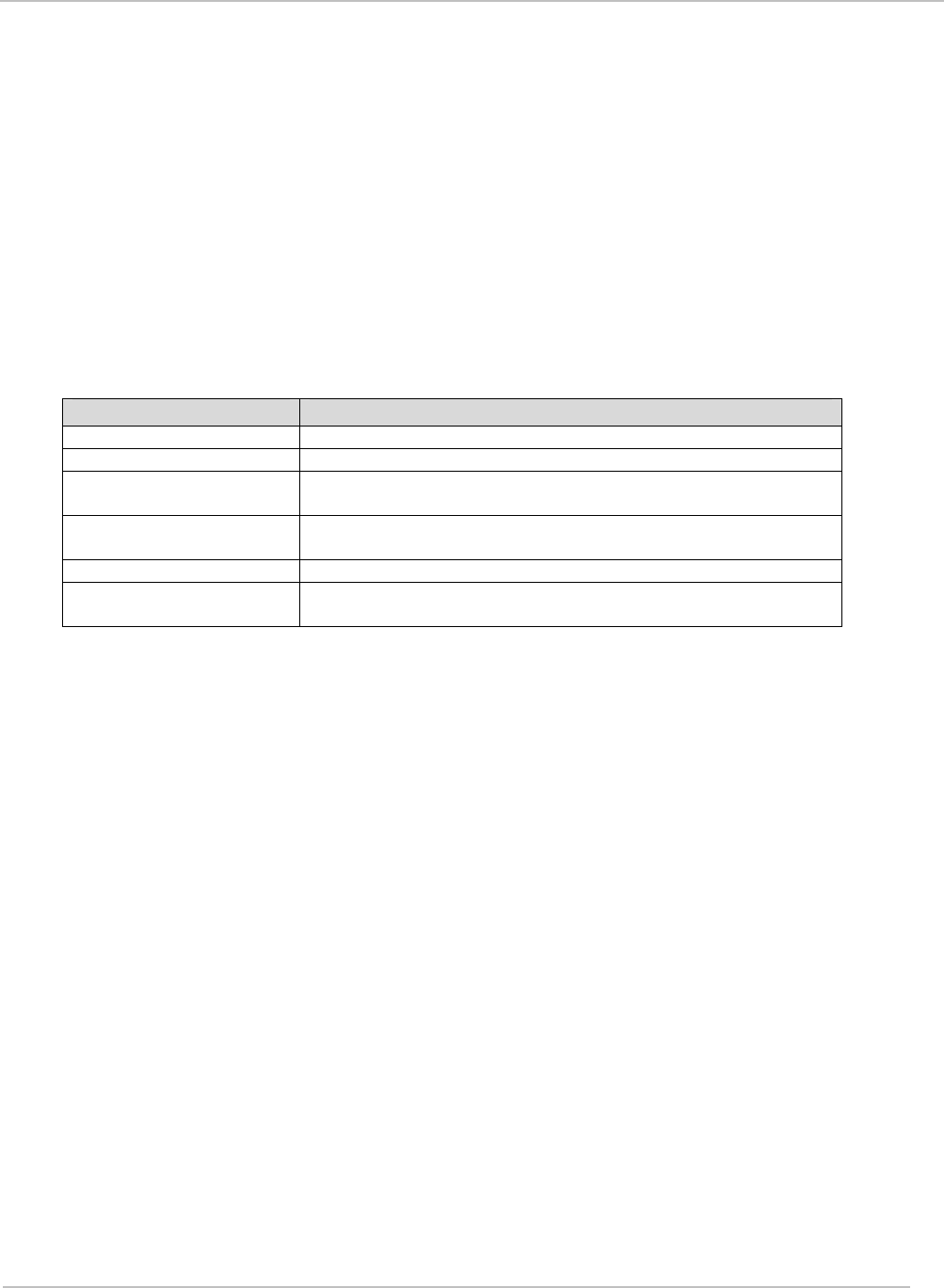
September 2002 S6350 Midrange Reader Module - Reference Guide
9
2.1 General Specification
This chapter describes the electrical and mechanical specifications of the S6350 Midrange Reader
Module (RI-STU-TRDC-02). Operating at a frequency of 13.56 MHz, this low profile, low power device
is designed to be easily integrated into many systems as an embedded device. All reader I/O is
accomplished through the use of a 16-pin header connector (labeled as CN1), to include all
communication, which is asynchronous RS232 as controlled by a host system.
2.1.1 Functional Requirements
The following parameters define the functional requirements and operational environment of the
S6350 reader.
Parameter Specifications
Operating temperature -20oC to +70o C
Storage temperature -40oC to +85oC
Mechanical shock According to MIL STD-801E, Method 516.3
(5 Gs at 10 ms, half sinusoidal waves, 6 axes)
Vibration According to MIL-STD-810E, Method 514.4
(15 Hz to 500 Hz, 1 g peak, 30 minutes sweep, logarithmic
Operating frequencies 13.56 MHz
Supported
Transponder types
Tag-it HF
Tag-it HF-I and all other ISO15693 compliant transponders
2.1.2 Power Supply
Input Voltage 5 ± 0.5 VDC
Average quiescent current 90mA
Average current during read 200mA (for Tag-it HF tags)
(Dependent on read rate)
Maximum current during read 250mA
2.1.3 Output Power
Output Power 120mW into 50 Ohms (Typical)
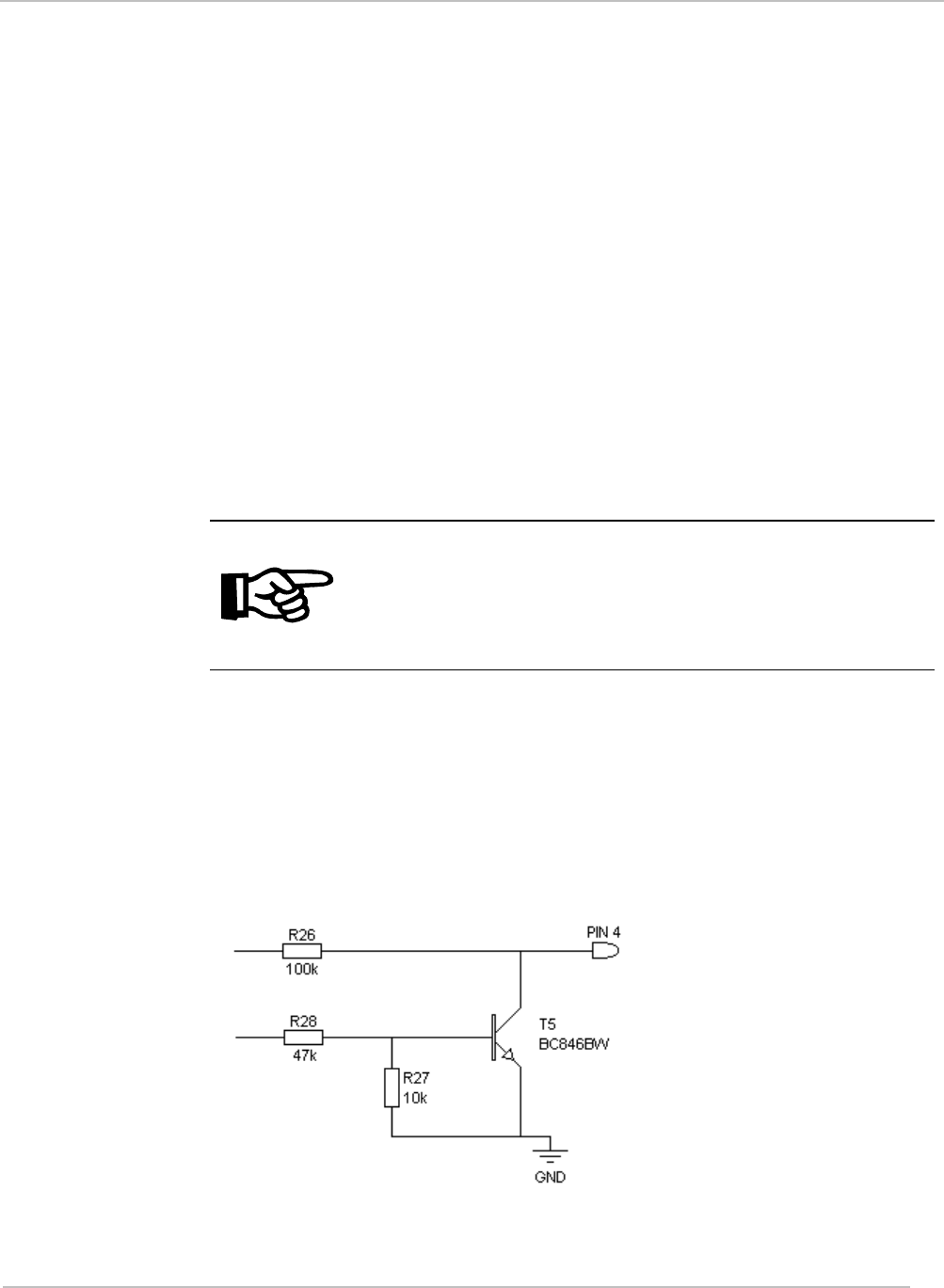
September 2002 S6350 Midrange Reader Module - Reference Guide
10
2.1.4 RF Physical Layer
Reader to Transponder: 10% - 30% (nominally set at 20%) or 100% modulation (set by
software) - ASK.
Data Coding Mode: 1 / 4 or 1 / 256.
Transponder to Reader: FSK / Fast Data Rate.
2.1.5 Required Antenna Parameters
Impedance 50Ω ± 5Ω at 13.56 MHz
Loaded Q 10 < Q < 30
Note:
As no standard antenna is provided by Texas Instruments for the
S6350 reader, the noted required antenna parameters must be
closely followed by the integrator for the reader to operate properly.
2.1.6 Input / output pins (CN1 pins 3 and 4)
Pins 3 and 4 on CN1 may be configured by software commands to read a logic level input or to
switch an external load to ground (no pull-up is provided). See Figure 2.
Figure 2: Example Circuit Diagram of an IO pin
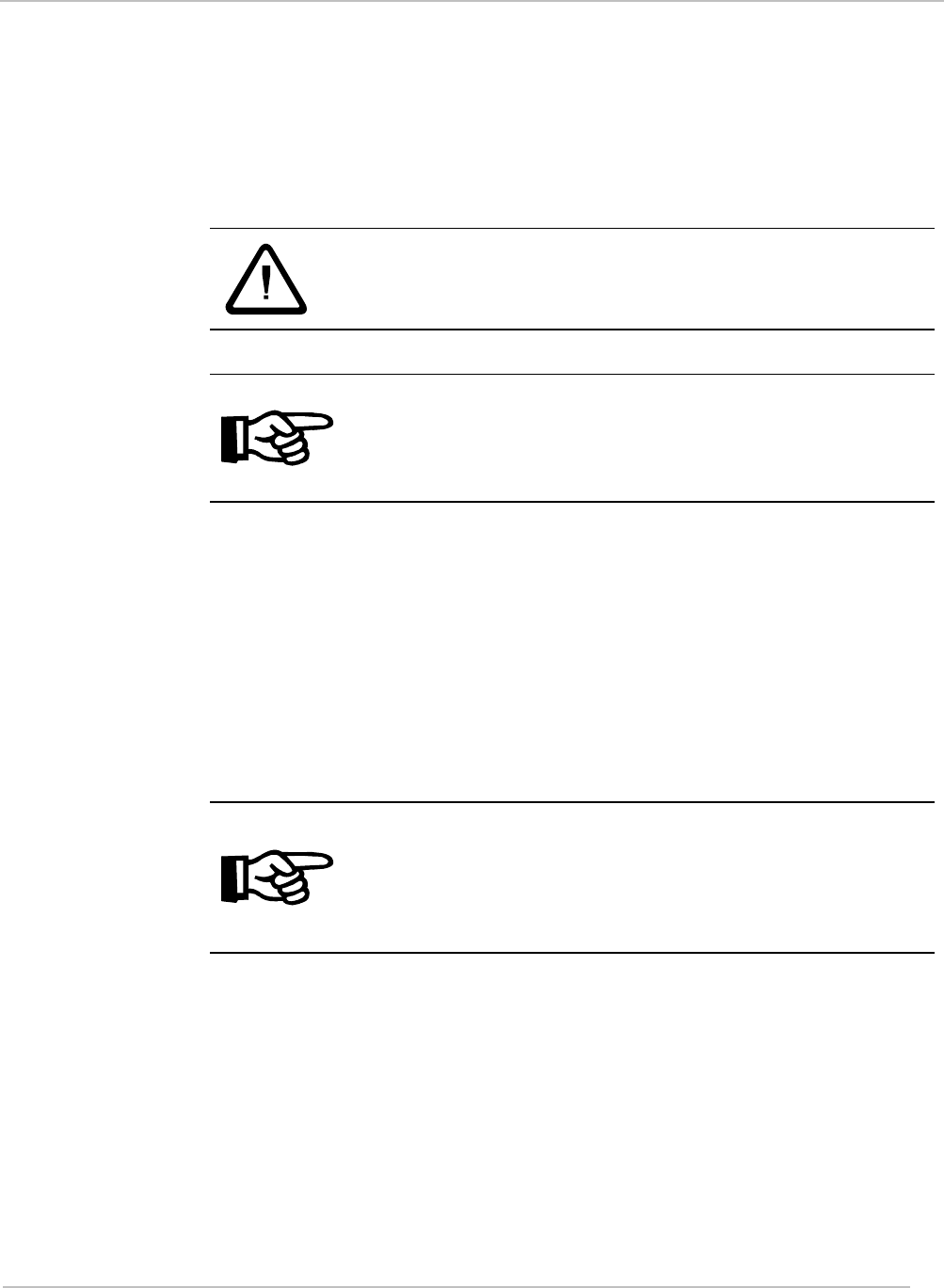
September 2002 S6350 Midrange Reader Module - Reference Guide
11
When used as a switch to ground the following ratings should not be exceeded:
Maximum voltage 20V
Maximum current 50mA
CAUTION:
Exceeding this Voltage and Current limit could cause
permanent damage to the reader.
Note:
That if an output has been set by a software command the state will
always read back as a logic 0.
2.1.7 Baseband receiver
Minimum data pulse width 5µs
Maximum data pulse width 500µs
Typical settling time 50µs from the first transition
Note:
The receiver extracts the mean level of the incoming data stream as
a reference. This takes approximately 50µs; therefore the data output
of the receiver is not valid until after this time.
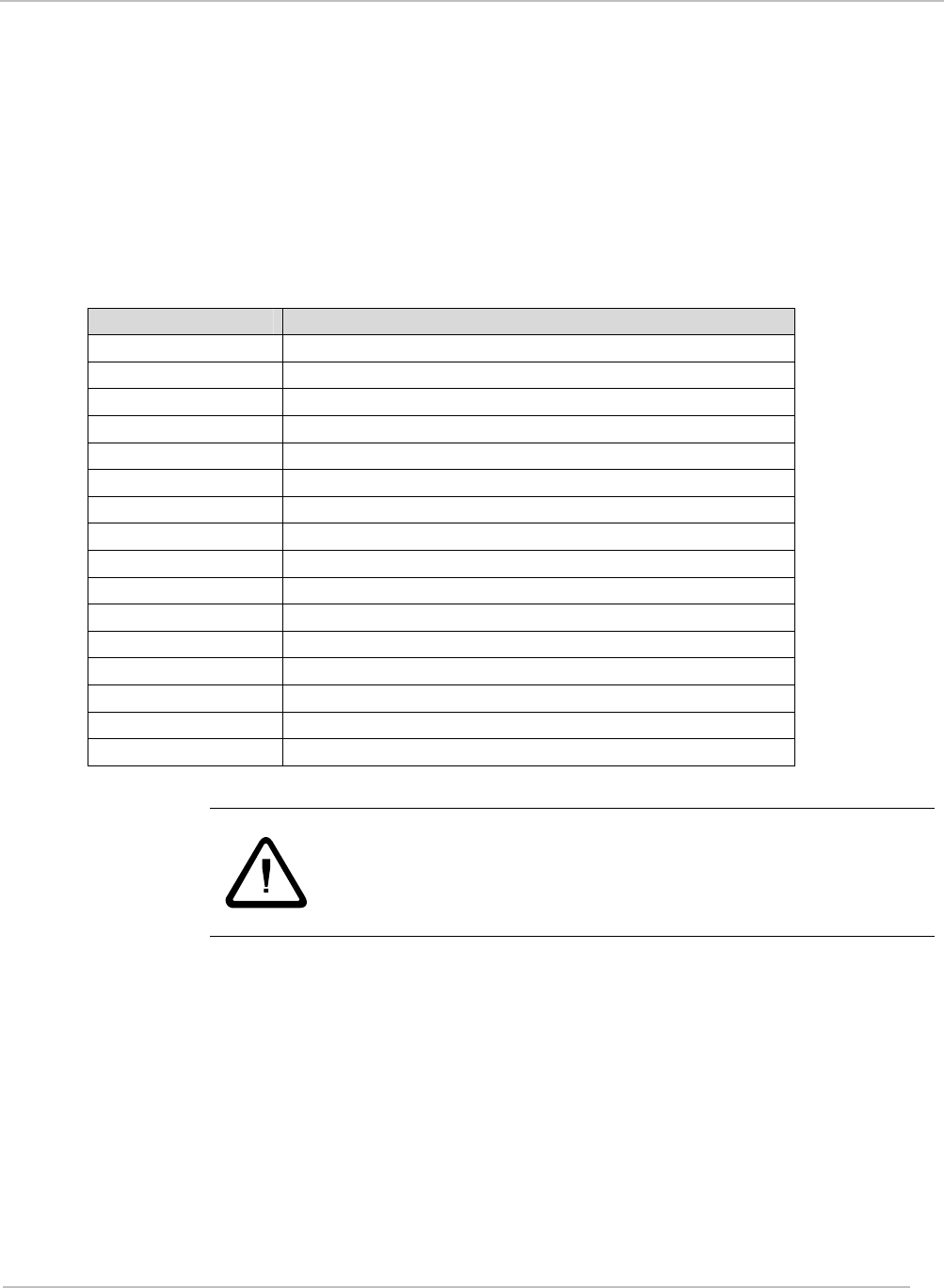
September 2002 S6350 Midrange Reader Module - Reference Guide
12
2.1.8 Connector Details
All reader input and output is provided through a 16-pin header connector that is mounted on the
backside of the RI-STU-TRDC-02 reader. The details and orientation of each connector pin are
provided in the following tables.
2.1.9 16-pin Header Connector CN1
Pin Function
1 0 Volts
2 +5 Volts
3 Open collector output / data input 2
4 Open collector output / data input 1
5 RS232 TxD (output from reader)
6 RS232 RxD (input to reader)
7 No connection (antenna guard)
8 Antenna screen
9 Antenna signal
10 No connection (antenna guard)
11 RS232 ground
12 No connection (reserved for future expansion)
13 No connection (reserved for future expansion)
14 No connection (reserved for future expansion)
15 No connection (reserved for future expansion)
16 No connection (reserved for future expansion)
CAUTION:
Only pins 8 and 9 of connector CN1 should be used for
the antenna connection.
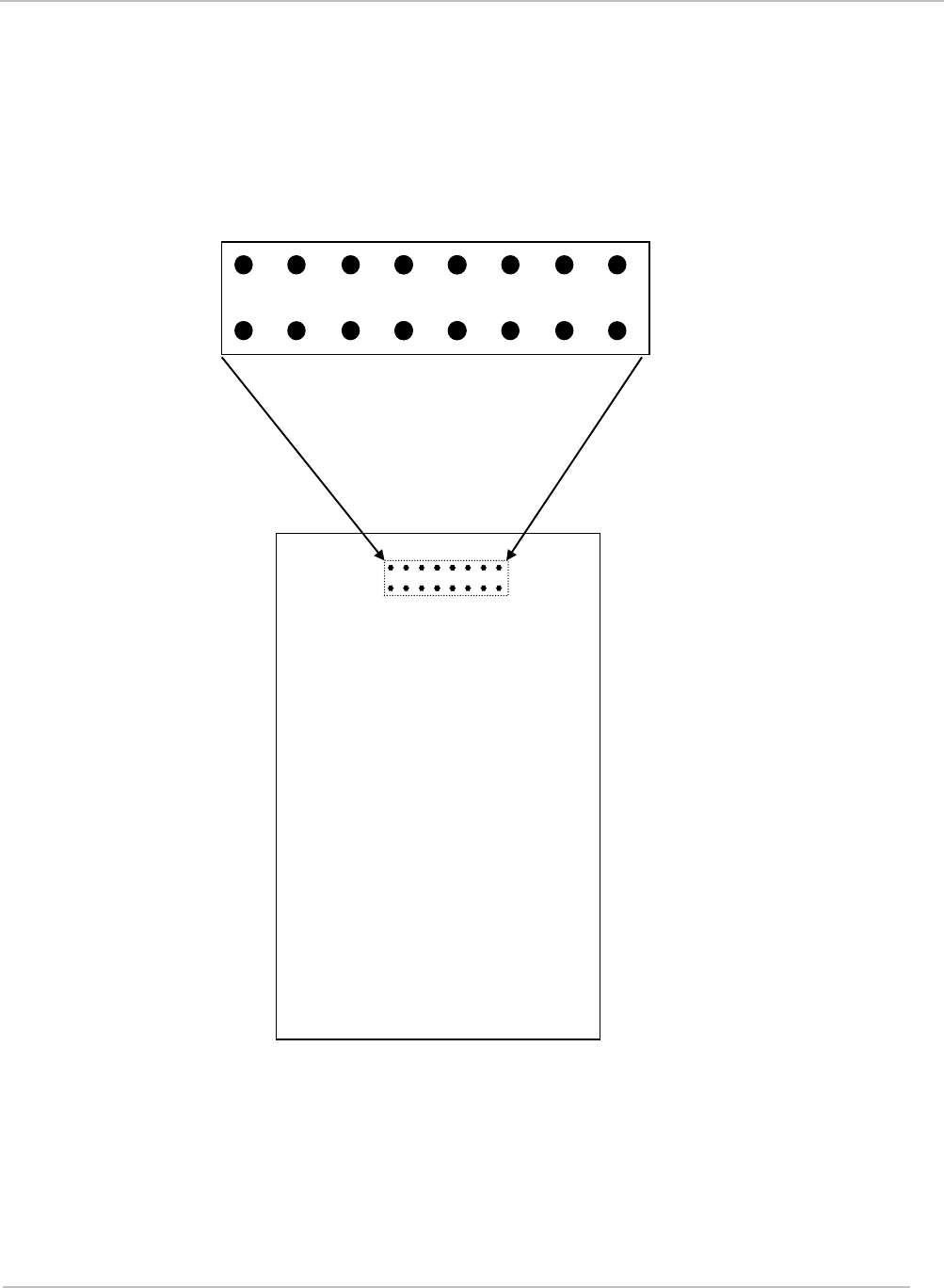
September 2002 S6350 Midrange Reader Module - Reference Guide
13
2.1.10 RI-STU-TRDC-02 (CN1) Pin Assignments
`
1 2 3 4 5 6 7 8
16 15 14 13 12 11 10 9
Figure 4: 16-pin Header Connector
(CN1)
viewed from component side.
COMPONENT SIDE
1
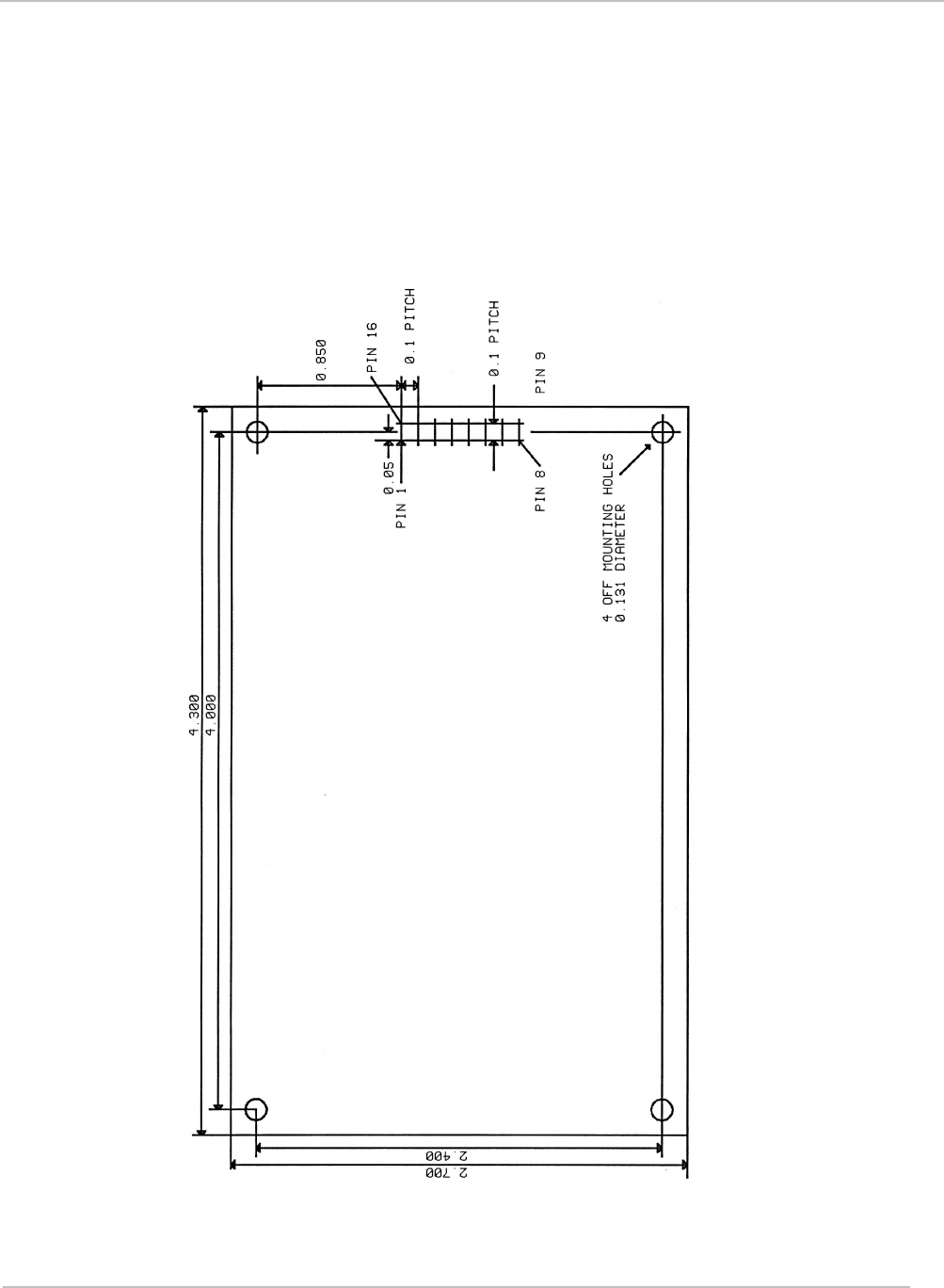
September 2002 S6350 Midrange Reader Module - Reference Guide
14
2.2 Mechanical Specifications
2.2.1 RI-STU-TRDC-02 with 16-pin Straight Header Connector
Figure 6: Note: All dimensions are in inches
COMPONENT SIDE
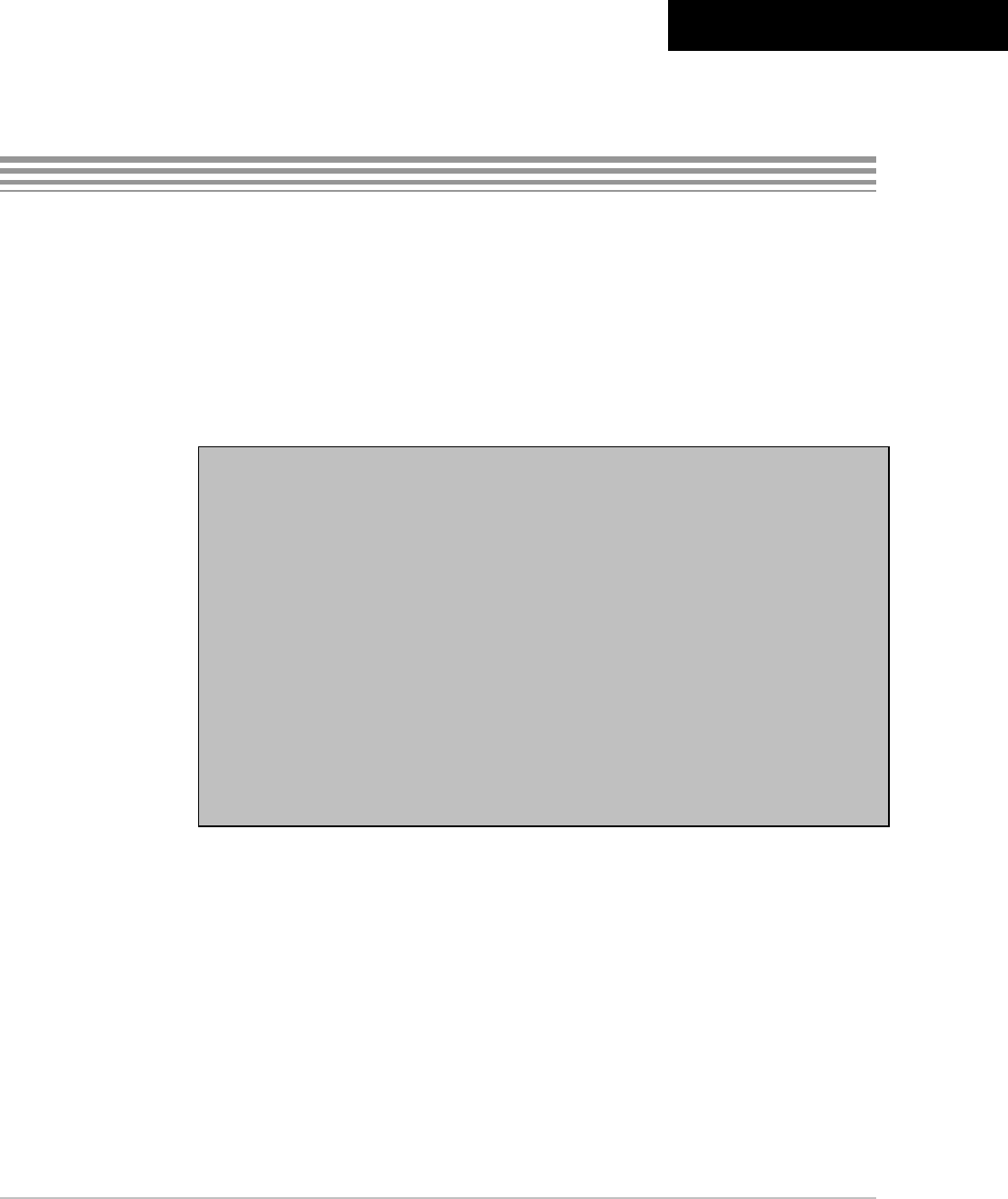
15
Reader Protocol
Topic Page
3.1 Serial Protocol Definition ................................................................................. 16
3.1.1 Request Packet Format (Host to Reader) ................................................. 16
3.1.2 Response Packet Format (Reader to Host) .............................................. 17
3.1.3 Command Flags Request .......................................................................... 17
3.1.4 Command Flags Response ....................................................................... 18
3.1.5 BCC ........................................................................................................... 18
3.1.6 Example Request Packet .......................................................................... 18
3.2 Command Definitions ...................................................................................... 19
3.2.1 Tag-it™ HF Command Definitions............................................................. 19
3.2.2 Miscellaneous Commands......................................................................... 22
3.2.3 ISO/IEC FCD 15693 Part 3 Transmission Protocol................................... 26
3.2.3.1 ISO/IEC 15693-3 Command Codes ....................................................... 26
3.2.3.2 Request/Response Packet Format for ISO/IEC 15693-3....................... 27
3.2.3.3 Mandatory Commands ........................................................................... 30
3.2.3.4 Optional Commands ............................................................................... 32
Chapter 3

September 2002 S6350 Midrange Reader Module - Reference Guide
16
3.1 Serial Protocol Definition
The S6350 Midrange Reader Module accepts and sends data at RS232 levels using 1 start bit,
8 data bits, 1 stop bit, no parity and the baud rate is configurable to 9600, 19200, 38400 and
57600baud. The data packet from the host to the reader is known as the request and the reply
from the reader to the host as the response. The host is always the primary station and initiates
all communication sequences. These consist of request/response pairs where the host waits for
a response before continuing. The S6350 Midrange Reader Module does not use the node
address.
3.1.1 Request Packet Format (Host to Reader)
Field Name SOF
Field Size 1 byte
Field Value 01hex
Purpose Start of Frame
Field Name Length
Field Size 2 byte LSB first
Field Value Packet dependent
Purpose Describes the length of the whole packet including SOF
Field Name Node Address
Field Size 2 byte LSB first
Field Value 0000hex
Purpose Must be 0000hex for upward compatibility
Field Name Command flags
Field Size 1 byte
Field Value Varies by command
Purpose Specifies the action to be taken by the reader
Field Name Command
Field Size 1 byte
Field Value Varies by command
Purpose Specifies the action to be taken by the reader
Field Name Data
Field Size 0 to xx bytes
Field Value Command dependent
Purpose Contains the parameters and data for the command
Field Name BCC
Field Size 2 bytes
Field Value 16 bit LRC of the preceding packet including the SOF
Purpose Allows the reader to validate the correct reception of the request
packet

September 2002 S6350 Midrange Reader Module - Reference Guide
17
3.1.2 Response Packet Format (Reader to Host)
Field Name SOF
Field Size 1 byte
Field Value 01hex
Purpose Start of Frame
Field Name Length
Field Size 2 byte LSB first
Field Value Packet dependent
Purpose Describes the length of the whole packet including SOF
Field Name Node Address
Field Size 2 byte LSB first
Field Value 0000hex
Purpose always 0000hex
Field Name Command flags
Field Size 1 byte
Field Value Varies by command
Purpose Specifies the action just taken by the reader
Field Name Command
Field Size 1 byte
Field Value Varies by command
Purpose Specifies the action just taken by the reader
Field Name Data
Field Size 0 to 23 bytes
Field Value Command dependent
Purpose Contains the parameters and data for the command just processed
Field Name BCC
Field Size 2 bytes
Field Value 16 bit LRC of the preceding packet including the SOF
Purpose Allows the host to validate the correct reception of the response
packet
3.1.3 Command Flags Request
The command flags in the request packet control the actions of the reader. The meanings of the
bits are defined below.
Bits 0-3 Reserved for future use and should be set to ‘0’ for upward
compatibility.
Bit 4 Is the address flag and if set, the command is only performed on
transponders whose address matches the data section of the packet.
Bits 5-7 Reserved for future use and should be set to ‘0’ for upward
compatibility.

September 2002 S6350 Midrange Reader Module - Reference Guide
18
3.1.4 Command Flags Response
The command flags in the response packet report the actions of the reader. The meanings of
the bits are defined below.
Bits 0-3 Reserved for future use.
Bit 4 Error flag. If this flag is set the command was unsuccessful and the
data section of the response packet contains the error code. (See
section Appendix B for a list of error codes.)
Bits 5-7 Reserved for future use.
3.1.5 BCC
A Block Check Character (BCC) is used for error detection and is attached to the end of the
packet. The 16 bit BCC is calculated on all the bytes of the packet including the SOF. The BCC
consists of two parts: the LSbyte is a Longitudinal Redundancy Check (LRC) and the MSbyte is
the ones compliment of the LRC. The LRC is calculated by performing a cumulative Exclusive-
OR operation on all the bytes of the packet.
3.1.6 Example Request Packet
01 hex SOF
0A hex LSbyte of length
00 hex MSbyte of length
00 hex LSbyte of node address
00 hex MSbyte of node address
00 hex Command flags (Not addressed)
02 hex Command (Tag-itTM Read block)
01 hex Data (Block number 1)
08 hex LSbyte of Checksum
F7 hex MSbyte of Checksum
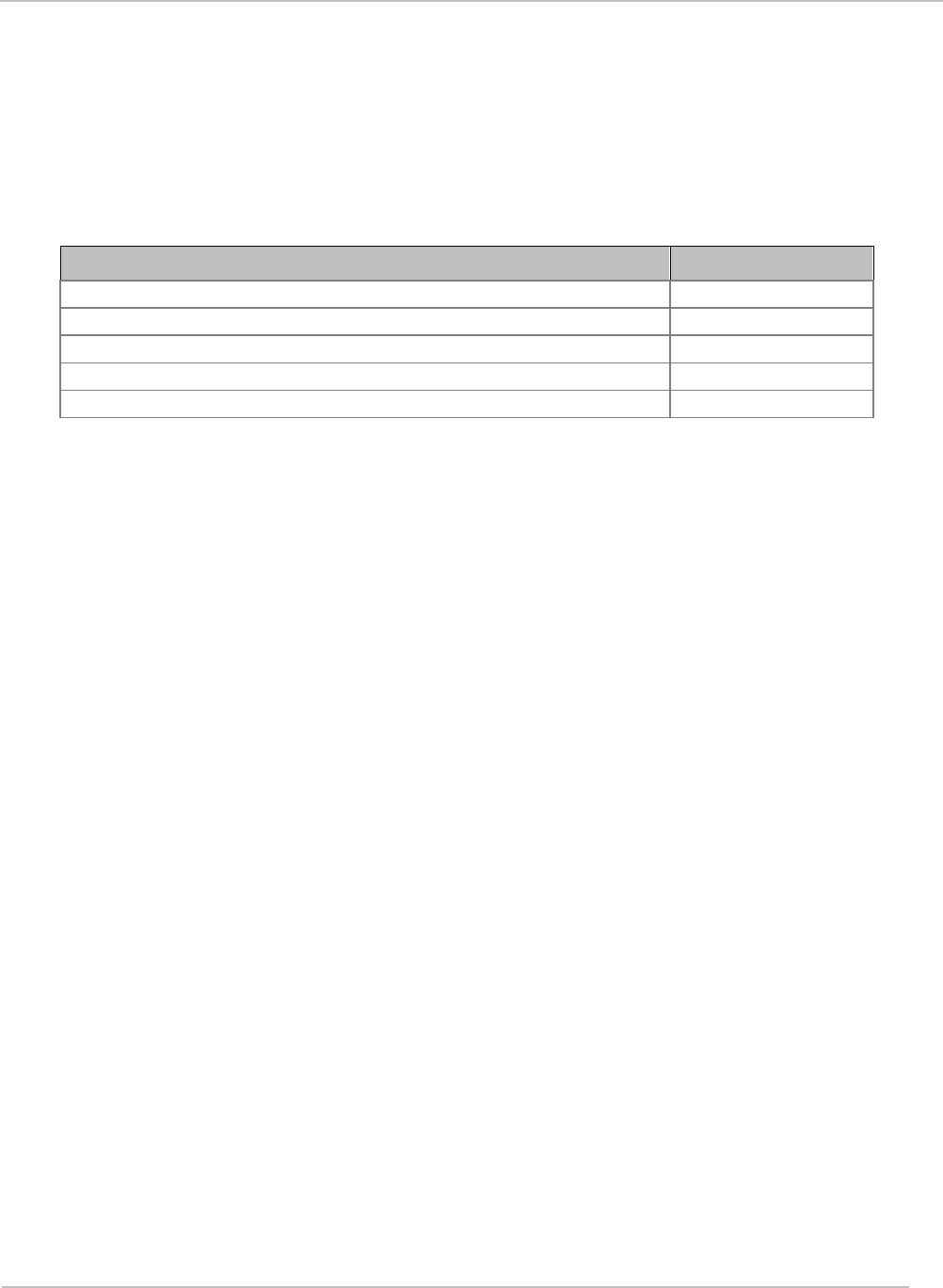
September 2002 S6350 Midrange Reader Module - Reference Guide
19
3.2 Command Definitions
3.2.1 Tag-it HF Command Definitions
Command Function (Tag-it HF) Command Code
Read Single Non-addressed & Addressed Block 02hex
Write Single Non-addressed & Addressed Block 03hex
Lock Single Non-addressed & Addressed Block 04hex
Read Transponder Details 05hex
Special Read Block Command 0Fhex
Read Block Command (02hex)
Reads a single block of data from a Tag-it HF transponder. If the address flag is set,
the address forms the first part of the data section (LSbyte first), followed by a single
byte containing the block number to be read. If the address flag is clear the data
section only contains the block number.
Example
Read block 3 of a Tag-it HF transponder whose address is 0134A4D5hex
Request packet
01 0E 00 00 00 10 02 D5 A4 34 01 03 5A A5hex
The response packet is similar to the request packet, with the data section containing
the data received from the transponder (LSbyte first) followed by a single byte
indicating the lock status and then another single byte containing the block address.
The two LSB’s of the lock status byte reflect the two lock bits in the transponder.
Example
Response packet
01 0F 00 00 00 00 02 33 22 11 00 00 03 0F F0 hex
00112233hex read from unlocked block 3 of a Tag-itTM transponder.
Write Block Command (03hex)
Writes a single block of data to a Tag-it HF transponder. If the address flag is set, the
address forms the first part of the data section, followed by a single byte containing the
block number to be written. The data to be written follows the block number. If the
address flag is clear the data section only contains the block byte and the data to be
written.
Example
Write Block 4 of a Tag-it HF transponder whose address is 000134A4hex with data
01234567hex
Request packet
01 12 00 00 00 10 03 A4 34 01 00 04 67 45 23 01 95 6Ahex

September 2002 S6350 Midrange Reader Module - Reference Guide
20
The response packet is similar to the request packet; with the data section containing
00hex for a successful write operation.
Example
Response packet
01 0A 00 00 00 00 03 00 08 F7hex
Successful write.
Lock Block Command (04hex)
Locks a single block of data in a Tag-it HF transponder. If the address flag is set, the
address forms the first part of the data section, followed by a single byte containing the
number of the block to lock.
Example
Lock Block 4 of a Tag-it HF transponder whose address is 000134A4hex
Request packet
01 0E 00 00 00 10 04 A4 34 01 00 04 8E 71hex
The response packet is similar to the request packet, with the data section containing
00hex for a successful lock operation.
Example
Response packet
01 0A 00 00 00 00 04 00 0F F0hex
Successful lock.
Read Transponder Details Command (05hex)
Reads the details of a Tag-it HF transponder. If the address flag is set, the address
forms the data section.
Example
Read the details of a Tag-it HF transponder non-address
Request packet
01 09 00 00 00 00 05 0D F2hex
The response packet is similar to the request packet, with the data section containing
the transponder address (4 bytes), manufacturers code (1 byte), transponder version
number (2 bytes), the number of blocks (1 byte) and the number of bytes per block
(1byte).
Example
Response packet
01 12 00 00 00 00 05 A4 34 01 00 01 05 00 08 04 8F 70hex
Transponder ID 000134A4hex
Manufacturers Number 01hex
Version Number 0005hex
Number of blocks 08hex
Number of bytes per block 04hex

September 2002 S6350 Midrange Reader Module - Reference Guide
21
Special Read Block Command (0Fhex)
Reads blocks of data from a Tag-it HF transponder. The address flag should not be
used. The data section contains a single byte detailing the blocks to be read. Each bit
of this byte represents a block of data (bit 0 = block 0 etc) if a bit is set then that block
is read. If the data byte is zero then only the SID is returned. The SID is always
retrieved first and then used to read the selected blocks in addressed mode.
Example
Read blocks 0, 3 & 4 of a Tag-it HF transponder (data byte = 00011001bin = 19hex)
Request packet
01 0A 00 00 00 00 0F 19 1D E2hex
The data section of the response packet contains:
The SID address (LSbyte first),
Block 0 data (if selected) followed by a single byte indicating the lock status and then
another single byte containing the block address,
Block 1 data (if selected) followed by a single byte indicating the lock status and then
another single byte containing the block address,
Block 7 data (if selected) followed by a single byte indicating the lock status and then
another single byte containing the block address,
(The two LSB’s of the lock status bytes reflect the blocks two lock bits in the
transponder.)
Example
Response packet
01 1F 00 00 00 00 0F 23 4F 10 00 EF CD AB 89 00 00 33 22 11 00 00 03
67 45 23 01 00 04 6A 95 hex
00104F23hex SID
89ABCDEFhex read from unlocked block 0 of a Tag-it HF transponder.
00112233hex read from unlocked block 3 of a Tag-it HF transponder.
01234567hex read from unlocked block 4 of a Tag-it HF transponder.
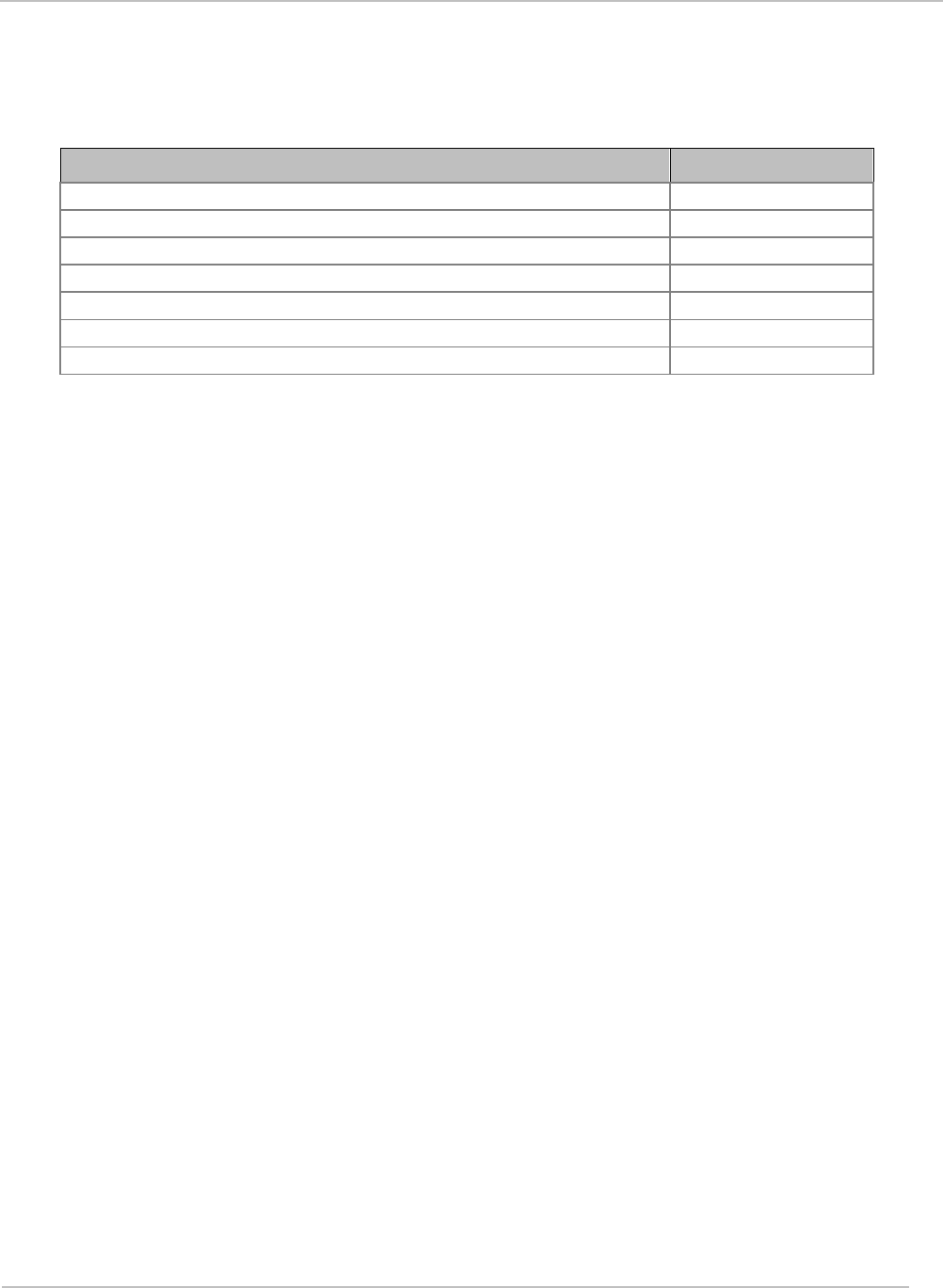
September 2002 S6350 Midrange Reader Module - Reference Guide
22
3.2.2 Miscellaneous Commands
Command Function Command Code
Initiate FLASH Loader Command D0hex
Send Data to FLASH Command D8hex
Reader Version Command F0hex
Read Inputs Command F1hex
Write Reader Outputs Command F2hex
RF Carrier on/off Command F4hex
Baud Rate Configuration Command FFhex
Initiate FLASH Loader Command (D0 hex)
This command is used to initialize and transfer control to the FLASH loader software.
Example
Request packet
01 09 00 00 00 00 D0 D8 27hex
The response packet is similar to the request packet with the data section containing
‘00’ if successful.
Example
Response packet
01 0A 00 00 00 00 D0 00 DB 24hex
FLASH loader initialised and control transferred.
Send Data to FLASH Command (D8hex)
This command is used to load data into the FLASH memory.
Example
Request packet
01 8D 00 00 00 00 D8 <132 bytes of data> <2 byte checksum> hex
The Data section must always contain 132 bytes
The response packet data section contains ‘00’ if successful.
Example
Response packet
01 0A 00 00 00 00 D8 00 D3 2Chex
The section of FLASH memory was programmed correctly.
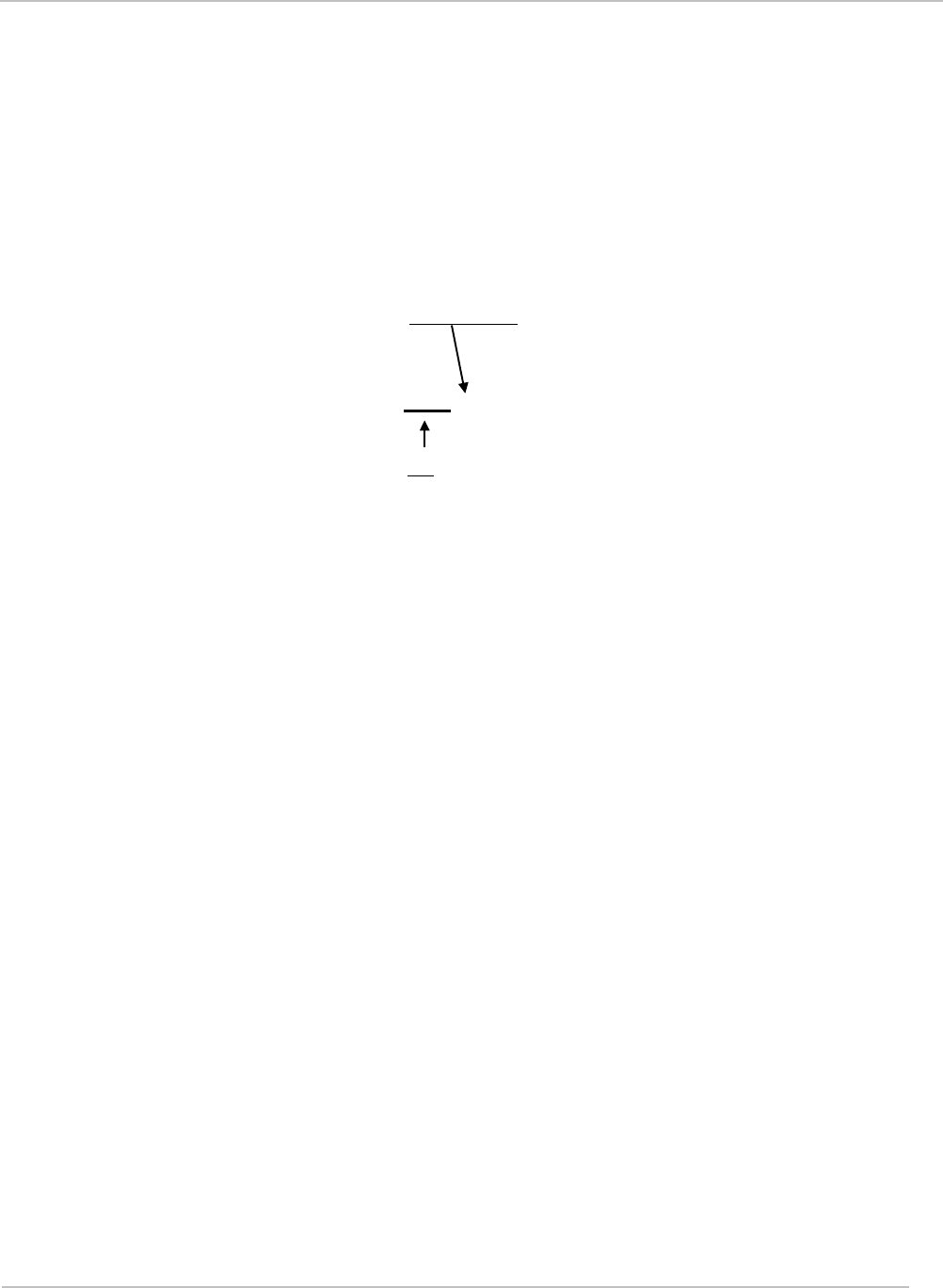
September 2002 S6350 Midrange Reader Module - Reference Guide
23
Reader Version Command (F0hex)
Requests the version number of the reader. The flags are ignored for this command.
Example
Get the version number of the reader.
Request packet
01 09 00 00 00 00 F0 F8 07hex
The response packet is similar to the request packet with the data section containing
the 2 byte version number LSB first followed by a single byte representing the reader
type.
Reader Type
Example
Response packet
01 0C 00 00 00 00 F0 40 01 07 BB 44hex
The version number is 1.4
The reader type response can be defined as follows:
Type 07 = Indicates that the reader has been successfully loaded with the noted
application firmware version number (in this example, version 1.4).
Type 00 = Indicates that the reader has not been loaded with application firmware, but
does have the boot-loader firmware in place with which to download the appropriate
application firmware. (Please refer to Appendix A: Downloading Data to FLASH
Memory)
Reader inputs Command (F1hex)
Reads the state of the reader inputs. The flags are ignored for this command.
Example
Get the status of the reader inputs.
Request packet
01 09 00 00 00 00 F1 F9 06hex
The response packet is similar to the request packet with the data section containing a
byte representing the state of the inputs. Bit 0 of this byte represents input 1 and bit 1
represents input 2 all other bits are reserved.
Example
Response packet
01 0A 00 00 00 00 F1 01 FB 04hex
Input 1 is at Logic 1
Input 2 is at Logic 0

September 2002 S6350 Midrange Reader Module - Reference Guide
24
Write reader outputs Command (F2hex)
Writes the state of the reader outputs. The flags are ignored for this command.
The data section contains 1 byte with bits defined as follows:
Bit 0 1 = Output 1 switched on (output is pulled to ground)
Bit 1 1 = Output 2 switched on (output is pulled to ground)
Bit 2 Reserved
Bit 3 Reserved
Bit 4 1 = Bit 0 enabled (output 1 is controlled)
Bit 5 1 = Bit 1 enabled (output 2 is controlled)
Bit 6 Reserved
Bit 7 Reserved
Example
Switch output 2 on without affecting output 1.
Request packet
01 0A 00 00 00 00 F2 22 DB 24hex
The response packet is similar to the request packet with the data section containing
‘00hex’ for a successful write operation.
Example
Response packet
01 0A 00 00 00 00 F2 00 F9 06hex
Write successful.
RF Carrier on/off Command (F4hex)
Switches the RF carrier on or off. The data section contains one byte FFhex to turn the
carrier on or 00hex to turn the carrier off.
Example
Switch the carrier on.
Request packet
01 0A 00 00 00 00 F4 FF 00 FFhex
The response packet is similar to the request packet with the data section containing
‘00hex’ for a successful operation.
Example
Response packet
01 0A 00 00 00 00 F4 00 FF 00hex
Command successful.
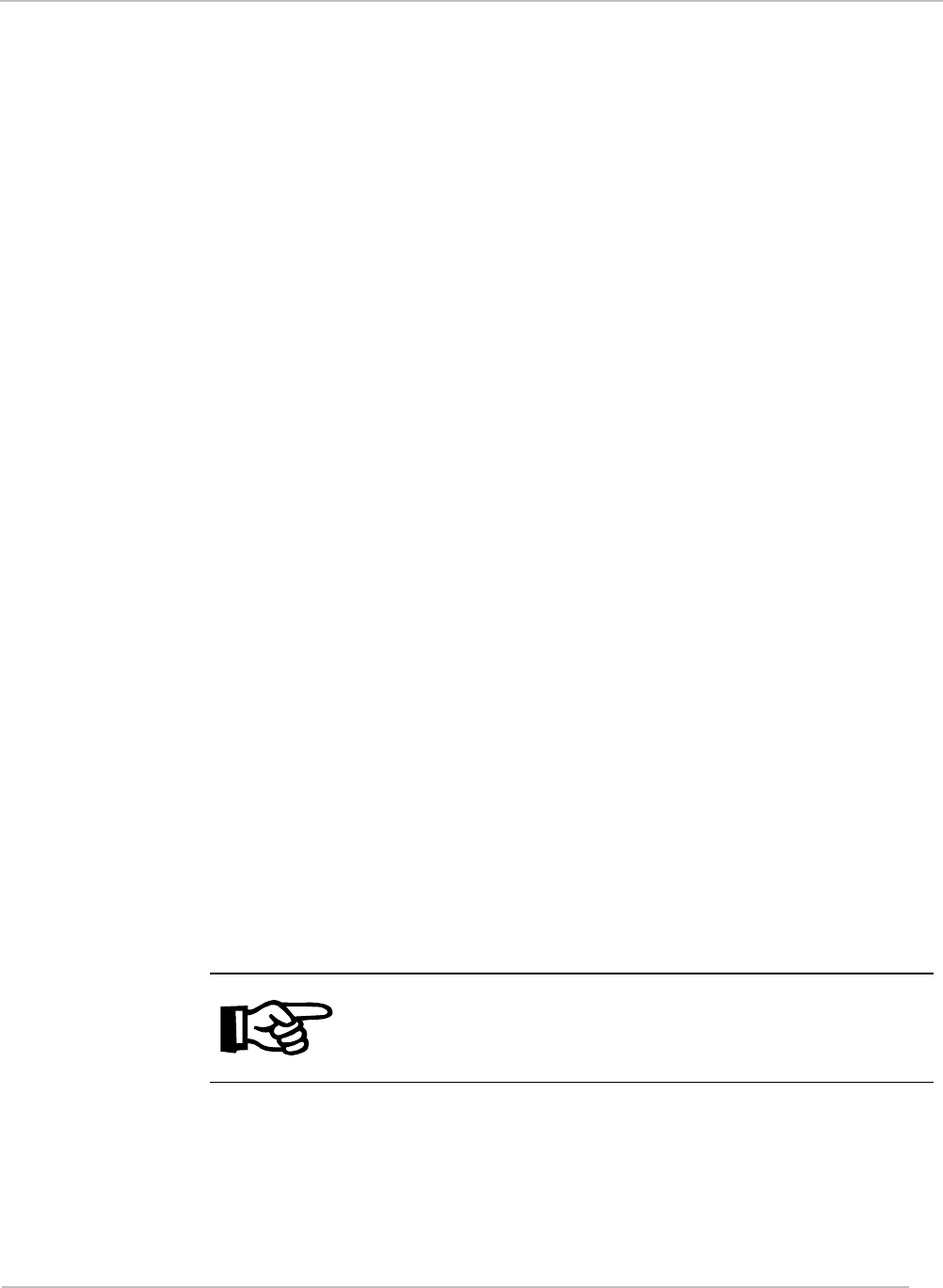
September 2002 S6350 Midrange Reader Module - Reference Guide
25
Baud Rate Configuration Command (FF hex)
This command is used to change the baud rate of the reader.
Data Byte (1byte) = Baud rate code
09 = 57600 baud (default)
08 = 38400 baud
07 = 19200 baud
06 = 9600 baud
Example
Set Baud rate to 57600baud.
Request packet
01 0A 00 00 00 00 FF 09 FD 02hex
Set Baud rate to 38400baud.
Request packet
01 0A 00 00 00 00 FF 08 FC 03hex
Set Baud rate to 19200baud.
Request packet
01 0A 00 00 00 00 FF 07 F3 0Chex
Set Baud rate to 9600baud.
Request packet
01 0A 00 00 00 00 FF 06 F2 0Dhex
The response packet is similar to the request packet with the data section containing
‘00hex’ for a successful operation.
Example
Response packet
01 0A 00 00 00 00 FF 00 F4 0Bhex
Command successful.
Note:
Changing this parameter only becomes effective after a power-on
reset of the reader.
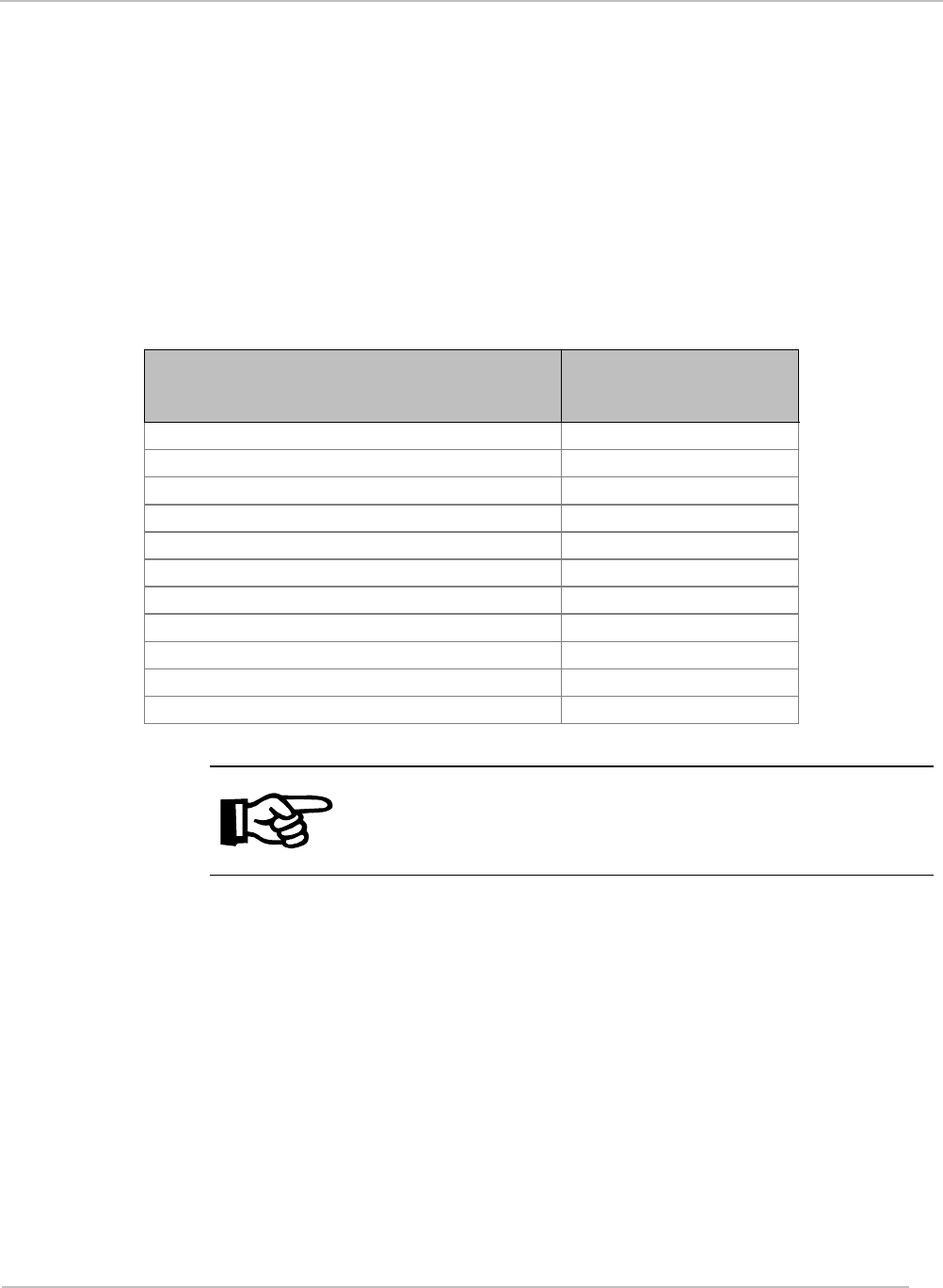
September 2002 S6350 Midrange Reader Module - Reference Guide
26
3.2.3 ISO/IEC 15693 Part 3 Transmission Protocol
In addition to supporting the Tag-it HF transponder protocol outlined within the preceding
section, the S6350 Midrange Reader Module complies with the standard RF interface and
transmission protocol of ISO/IEC 15693-2, -3. Please note that each of the ISO protocol
command and response packets outlined within the following sections are contained within the
standard reader protocol as outlined within Section 3.1.
The ISO 15693-3 commands that are specifically applicable to the S6350 Reader are defined
within the following table.
3.2.3.1 ISO/IEC 15693-3 Command Codes
Command Function Command Code
Inventory (Mandatory Command) 01hex
Stay Quiet (Mandatory Command) 02hex
Read Single Block 20hex
Write Single Block* 21hex
Lock Block* 22hex
Read Multiple Blocks 23hex
Write AFI* 27hex
Lock AFI* 28hex
Write DSFID* 29hex
Lock DSFID* 2Ahex
Get Multiple Block Security Status 2Chex
Note:
* Bit 7 of the ISO 15693 protocol Option_Flag must be set to 1 for
all Write and Lock commands to respond properly.
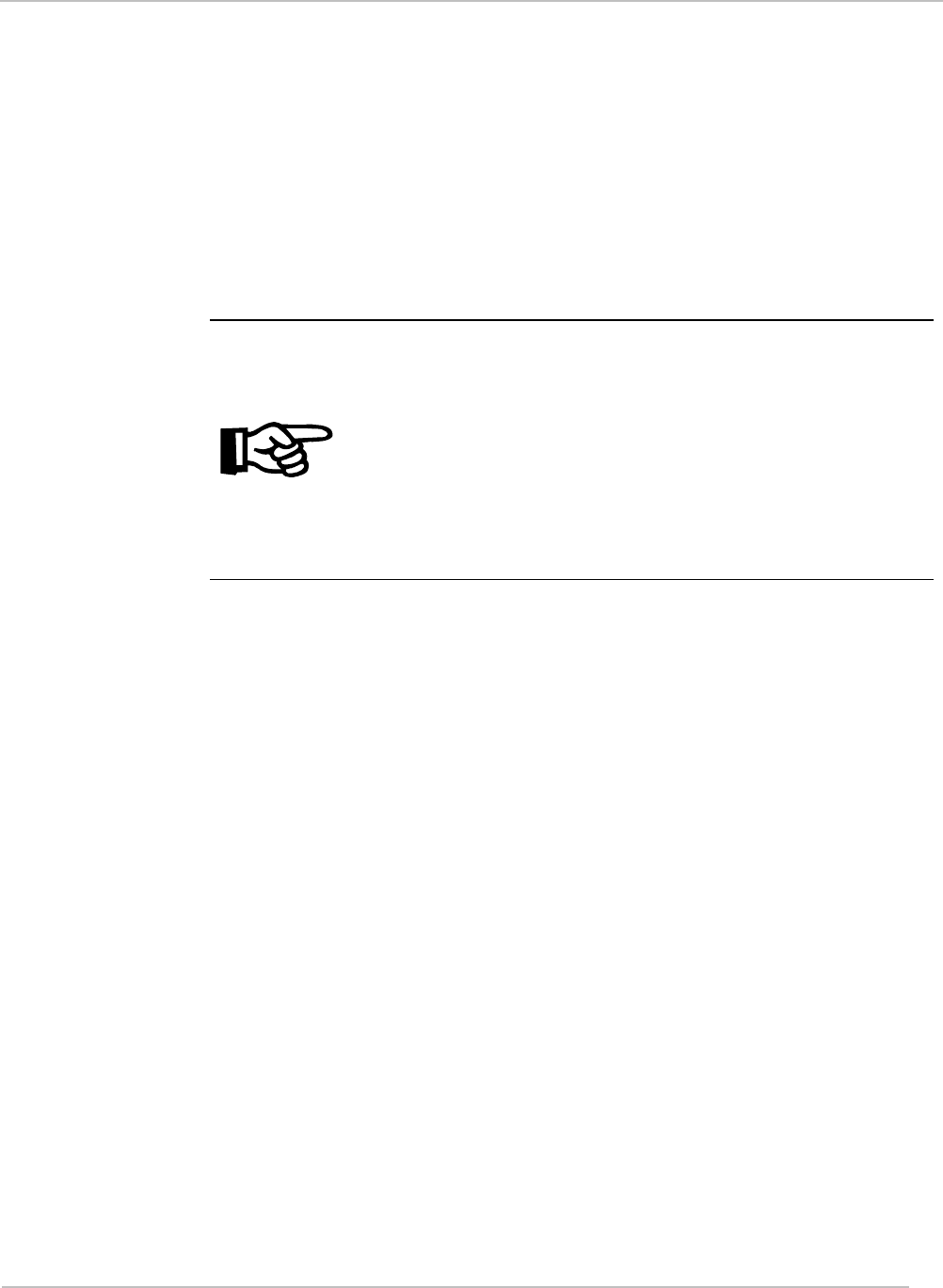
September 2002 S6350 Midrange Reader Module - Reference Guide
27
3.2.3.2 Request/Response Packet Format for ISO/IEC 15693-3
The data packet from the host to the reader is known as the request and the reply from the
reader to the host as the response. The host is always the primary station and initiates all
communication sequences. These consist of request/response pairs where the host waits for a
response before continuing. All ISO/IEC 15693-3 command request packets are contained
within the standard reader command request packet format. In all cases, reader command 60hex
is used to pass through ISO 15693 Part 3 commands to the reader.
Note:
The Reader’s RF Physical Layer is defined as:
Reader to Transponder: 10% - 30% (nominally set at 20%) or
100% modulation (set by software) - ASK. Data Coding Mode: 1 / 4
or 1 / 256
Transponder to Reader: FSK / Fast Data Rate.
The Configuration Byte (ISO Command Data Byte 0)
As detailed in ISO/IEC 15693-2, the Configuration Byte (ISO Command Data Byte 0) is an 8-
bit byte that is used to configure the Data Coding Mode and Modulation Depth of the reader.
Modulation Depth
Bit 4 of the Configuration Byte is used to set Modulation Depth. When set high the
reader is configured for 100% Modulation Depth, when set low the reader will operate
at 10% to 30% (with a 20% nominal setting) Modulation Depth.
Data Coding Mode
Bit 0 of the Configuration Byte is used to set the Data Coding Mode. When set high
the reader is configured for Data Coding Mode 1 / 4; when set low the reader is
configured for Data Coding Mode 1 / 256.
Request Packet Format for ISO/IEC 15693-3
The request packet consists of the header, packet length, node address, command
flags, reader command (60hex), ISO/IEC 15693-3 command/data bytes 0 to some
number “n” (where byte 0 is the configuration byte) and the checksum.
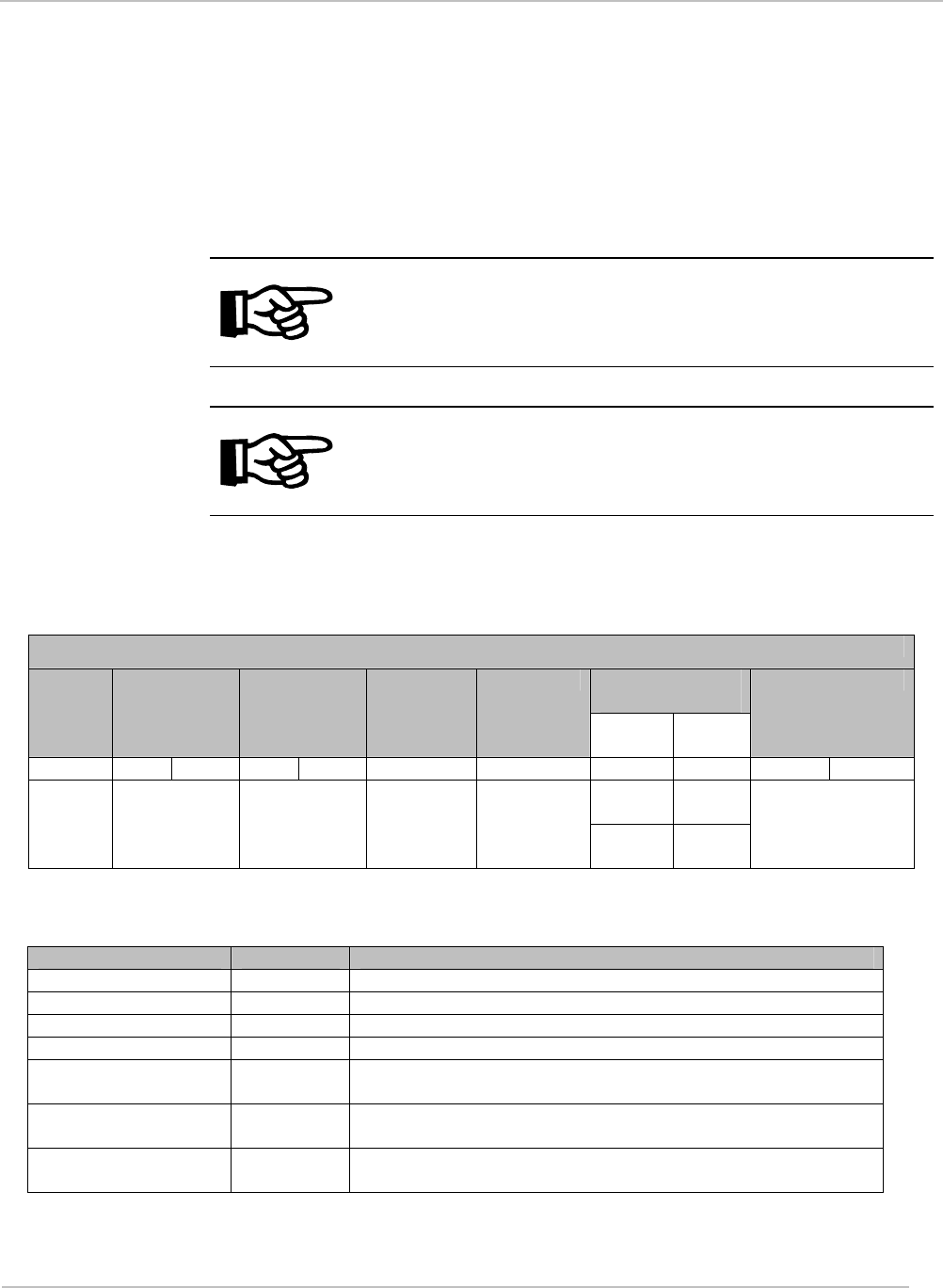
September 2002 S6350 Midrange Reader Module - Reference Guide
28
ISO 15693 Command Data Request Structure
The structure of the ISO 15693 Command Data Request is contained within the Data
section of the ISO Command Data, bytes 1 - n. Specific to the S6350 Midrange Reader
Module, the ISO 15693 SOF, CRC16 and EOF fields must not be included in the
message data packet. Please refer to ISO/IEC 15693-3 for details about the ISO
packet format. Specific to the S6350 reader, the ISO 15693 SOF, CRC16 and EOF
fields must not be included.
Note:
The protocol of S6350 Midrange Reader Modue does not use the
ISO 15693 SOF, CRC16 and EOF fields within its message packet.
Note:
Please refer to ISO/IEC 15693-3 for details about the ISO message
packet.
Request Packet Format
Standard reader Request Packet Format (See Section 3.1)
ISO Command
Data
Header Packet
Length
Node
Address
Command
Flag
Command
Config.
Byte
Data
Checksum
‘01hex’ LSB MSB LSB MSB Flags ‘60hex’ XXhex Data Byte 1 Byte 2
Byte 0 bytes
1 - n
1 byte 2 bytes 2 bytes 1 byte 1 byte
1 byte n
bytes
2 bytes
Request Packet Description
Field Length Description
Header 1 byte Defines the start of the packet (01hex).
Packet Length 2 bytes Defines the length of the packet, including checksum.
Node Address 2 bytes Defines the Node address of the reader.
Command Flags 1 byte Defines how a command will be executed.
Command 1 byte Defines the command for the reader to execute (60hex for
ISO 15693-3 commands)
Data 0 - n
bytes
Defines the data required by the reader for a command.
Checksum 2 bytes Byte 1 is an XOR checksum of all elements from the
header to the last byte
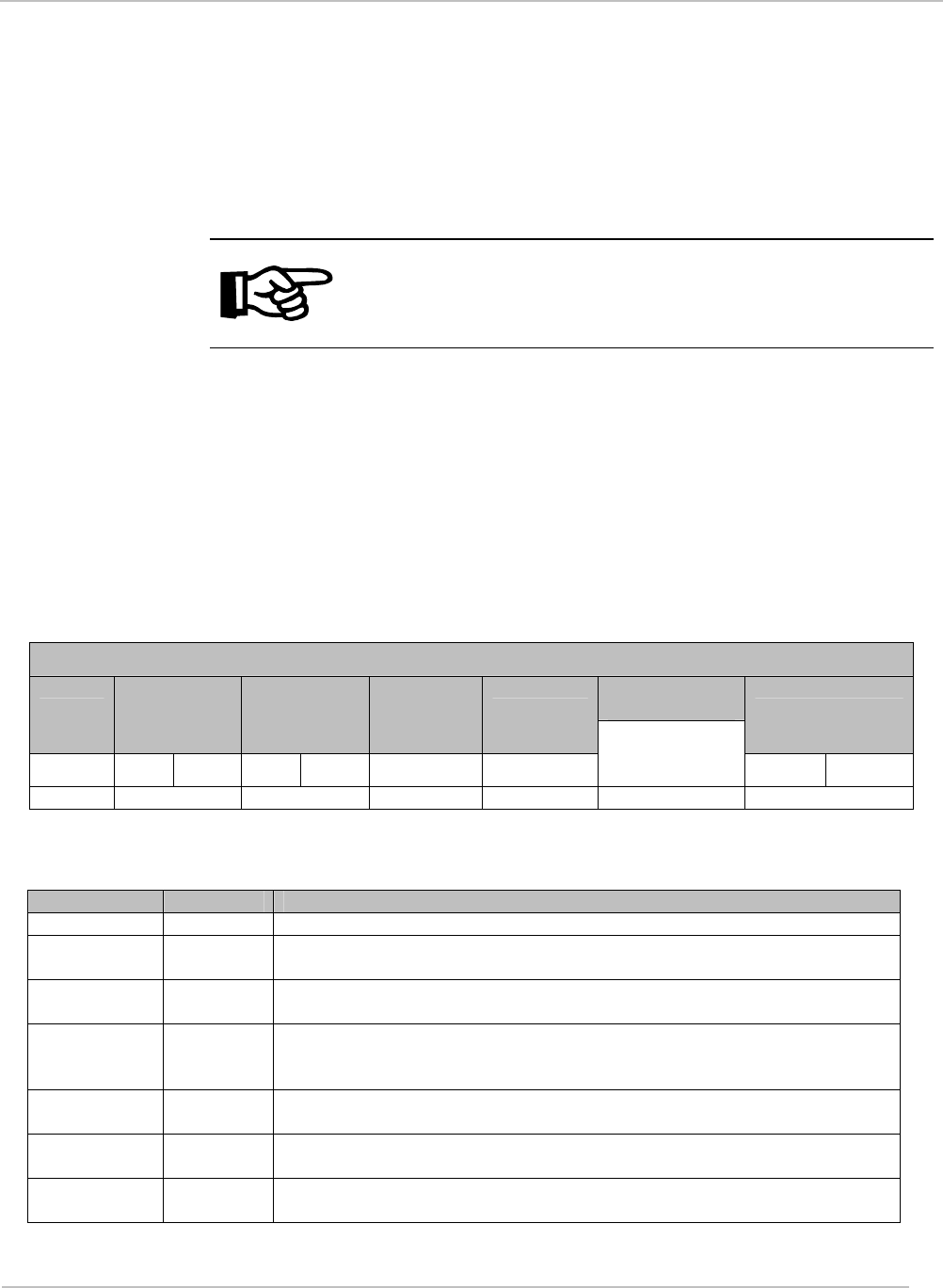
September 2002 S6350 Midrange Reader Module - Reference Guide
29
Response Packet Format for ISO/IEC 15693-3
Similar to the request packet, the response packet consists of the header, packet length, node
address, command flags, reader command (60hex), ISO/IEC 15693-3 command/data bytes 0 to
some number “m” and the checksum.
The ISO Response Data packet can come in one of two possible generic formats: (a) One for
the ISO Inventory Response, and (b) all other ISO responses. These will be highlighted in the
following sections.
Note:
With the exception of the ISO Inventory Response packet, the format
for each standard response packet is the same.
The Error Byte (ISO Response Data Byte 0)
There are three possible reader errors that can be generated in response to an ISO 15693
command. This error code will be returned within the Error Byte (Byte 0) of the ISO
Response Data. The error codes are as follows:
01hex Transponder not found
02hex Command not supported
04hex Invalid flags
Response Packet Format
Standard reader Response Packet Format (See Section 3.1)
ISO Response
Data
Header Packet
Length
Node
Address
Response
Flags
Command Checksum
‘01hex’ LSB MSB LSB MSB Flags ‘60hex’
Data
bytes
0 - ‘m’ Byte 1 Byte 2
1 byte 2 bytes 2 bytes 1 byte 1 byte ‘m’ bytes 2 bytes
Response Packet Description
Field Length Description
Header 1 byte Defines the start of the packet (01hex).
Packet
Length
2 bytes Defines the length of the packet, including checksum.
Node
Address
2 bytes Defines the Node address of the reader.
Response
Flags
1 byte Defines the response of the reader to the request. Bit 4 defines the
error status; a set value indicates that an error has occurred. (Other
values reserved for future use)
Command 1 byte Defines the command that the reader executed (60hex for ISO 15693-3
commands)
Data 0-m
bytes
Defines the data returned by the reader in response to a command.
Checksum 2 bytes Byte 1 is an XOR checksum of all elements from the header to the
last byte of the data field. Byte 2 is calculated as (FFhex) XOR (byte 1)
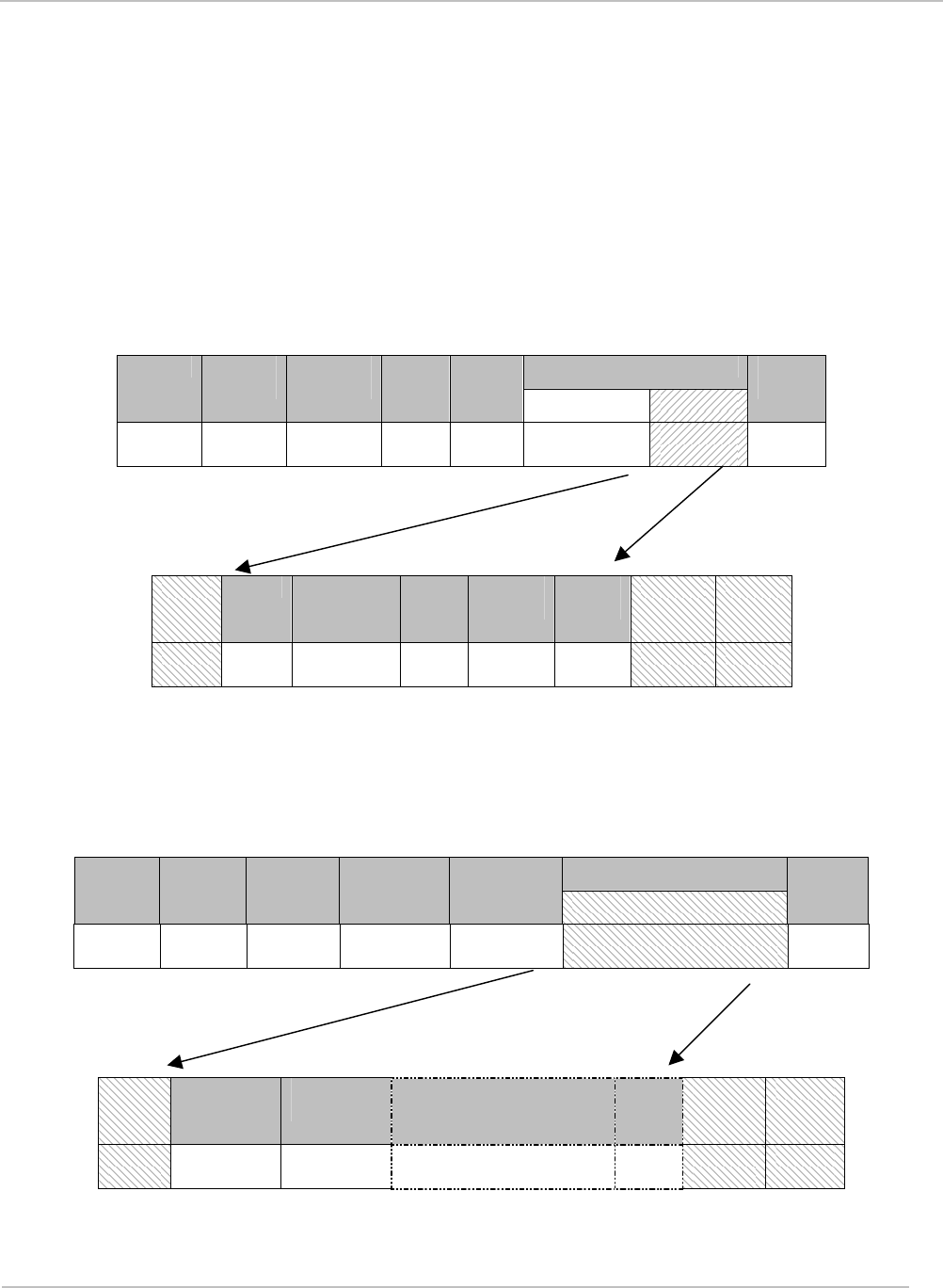
September 2002 S6350 Midrange Reader Module - Reference Guide
30
3.2.3.3 Mandatory Commands
The data packet from the host to the reader is known as the request and the reply from the
reader to the host as the response. The host is always the primary station and initiates all
communication sequences. These consist of request/response pairs where the host waits for a
response before continuing. All ISO/IEC 15693-3 command request packets are contained
within the standard reader command request packet format. In all cases, reader command 60hex
is used to pass through ISO 15693 Part 3 commands to the reader.
Inventory: Command Code (01hex)
ISO Inventory Request Command Packet
ISO Command Data Header Packet
Length
Node
Address
Cmd
Flag
Cmd
Config. Byte Data
Check
-sum
‘01hex’ 2 bytes 2 bytes 1
byte
‘60hex’ Byte 0 bytes
1 - n
2
bytes
ISO Inventory Request Format
SOF Flags Inventory
Command
Opt.
AFI
Mask
Length
Mask
Value
CRC16 EOF
Not
Used
1
byte
‘O1hex’ 1
byte
1 byte 0 - 7
bytes
Not
Used
Not
Used
ISO Inventory Response Packet
The inventory response packet format, while complying with ISO 15693, is unique to the
reader and is described within the following illustrations. All other ISO 15693 packet
responses contain ISO 15693 data as detailed within ISO/IEC 15693-3.
ISO Response Data Header Packet
Length
Node
Address
Response
Flags
Command
Data
Check
sum
‘01hex’ 2 bytes 2 bytes 1 byte ‘60hex’ bytes
0 - m
2 bytes
ISO Inventory Response Format
SOF Valid Data
Flags
Collision
Flags
80-bit response to
Inventory Command
Etc… CRC16 EOF
Not
Used
2 bytes
LSB/MSB
2 bytes
LSB/MSB
Data returned from 1st
valid time slot
Etc… Not
Used
Not
Used
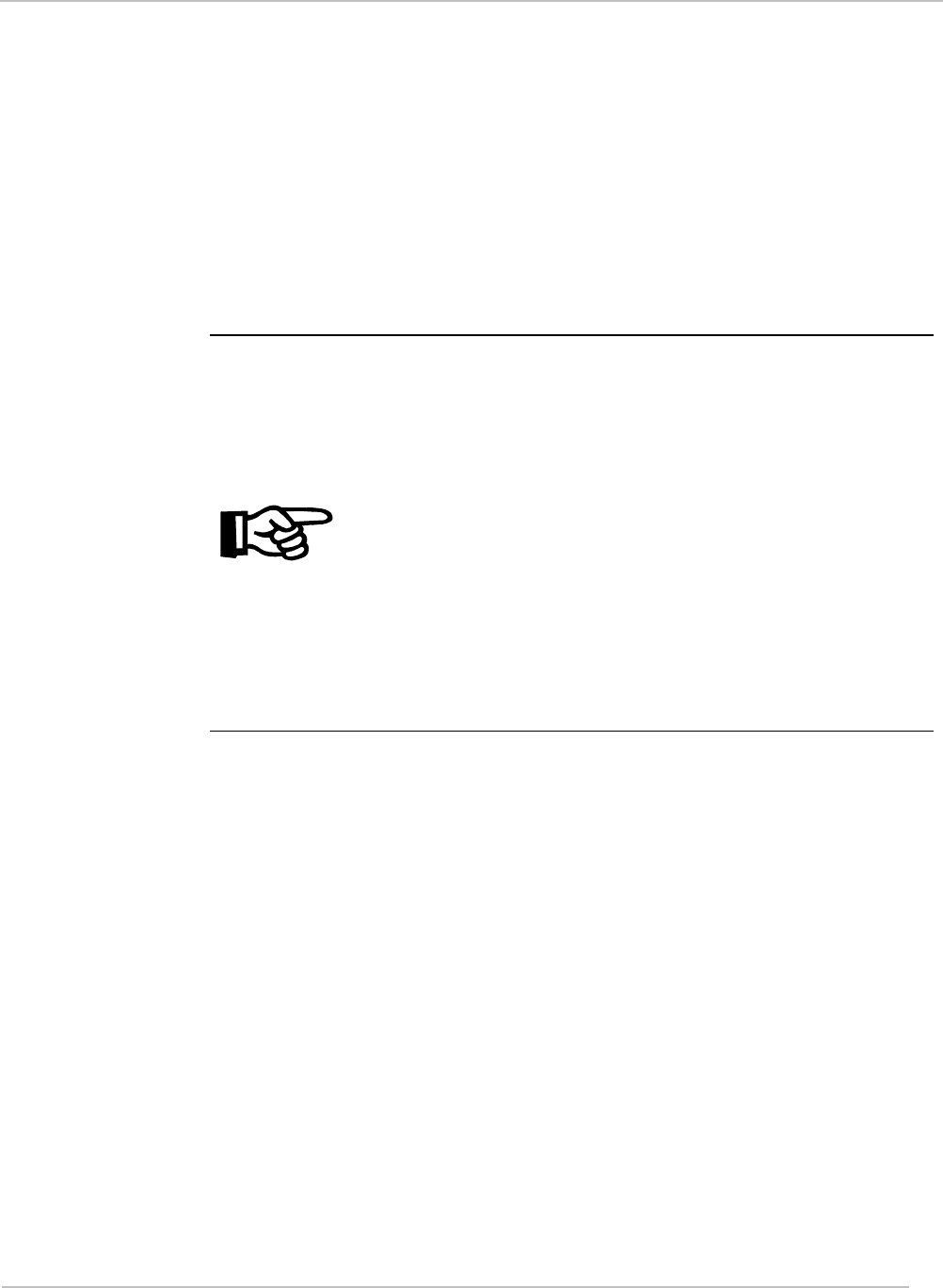
September 2002 S6350 Midrange Reader Module - Reference Guide
31
Valid Data & Collision Flags
Valid Data Flags: This 16-bit field corresponds to whether valid data was received in the 16
possible Time Slots. Bits 0 to 7 of the LSB respectively correspond to Time Slots 1 to 8,
while bits 0 to 7 of the MSB correspond to Time Slots 9 to 16 respectively. A set bit
corresponds to valid data being received in that particular Time slot.
Collision Flags: This 16-bit field corresponding to whether a collision occurred in the 16
possible Time Slots. Bits 0 to 7 of the LSB respectively correspond to Time Slots 1 to 8,
while bits 0 to 7 of the MSB correspond to Time Slots 9 to 16 respectively. A set bit
corresponds to a collision being detected in that particular Time Slot.
Note:
It is possible to issue the Inventory Command for just 1 Time Slot
instead of 16. In this case, the preceding packet structure is still
valid; the required Valid Data flag and Collision flag reside in bit 0
of the LSB of their respective fields. It follows that issuing the
Inventory Command for a single Time Slot will result in a
maximum of one 80-bit response being returned
If both a Valid Data flag and its corresponding Collision flag are
both clear then this indicates that no transponder was detected for
that particular Time Slot.
Starting from Time Slot 1 and progressing to Time Slot 16, for each
Time Slot where a transponder was successfully read (without
collision), its 80-bit data is appended to the Data section of the
message packet.
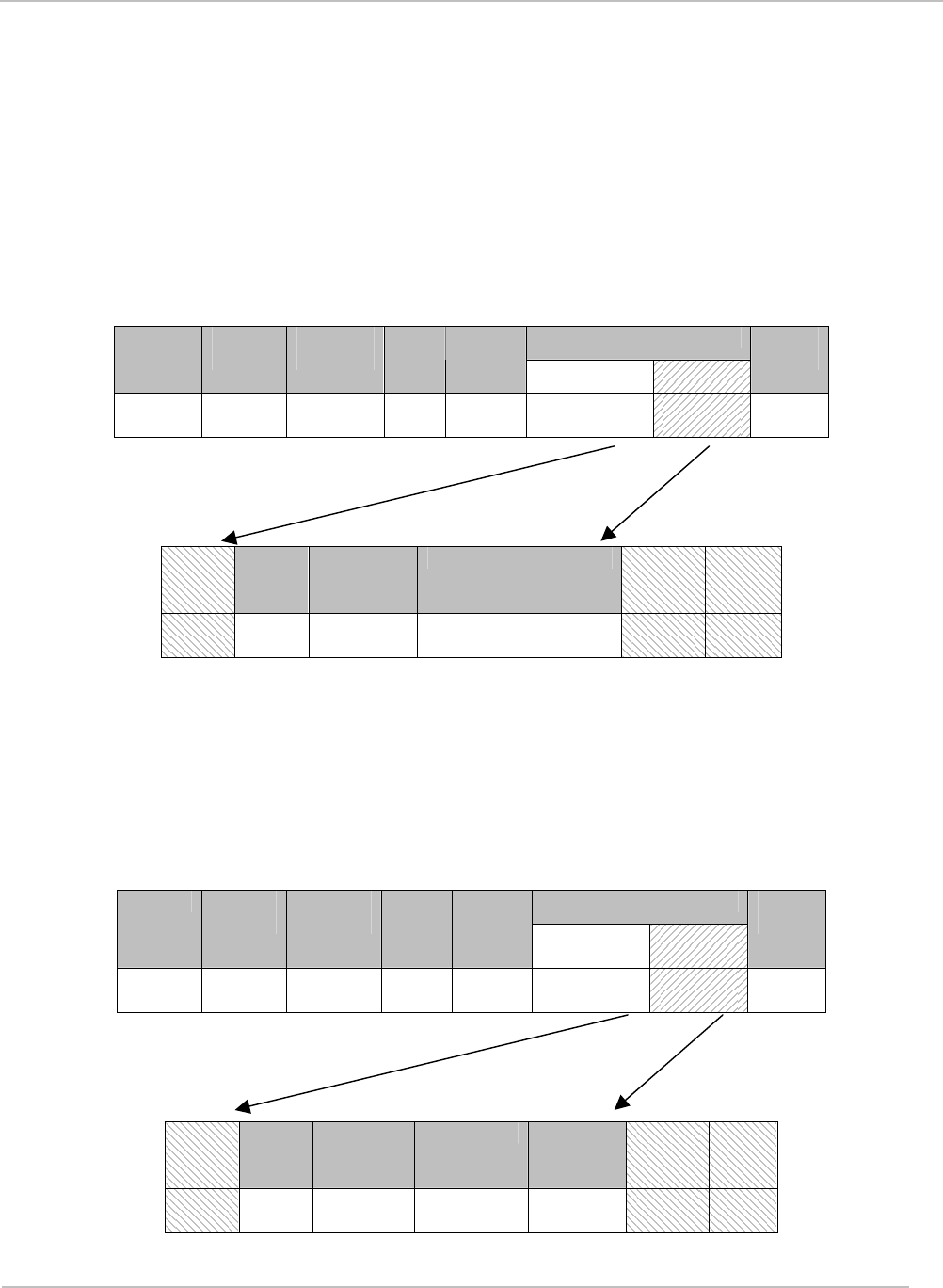
September 2002 S6350 Midrange Reader Module - Reference Guide
32
ISO Stay Quiet Request Command Packet: Command Code (02hex)
Upon receipt of the Stay Quiet command, the Tag-it HF-I (ISO15693) tag will enter the quiet
state and will not initiate a response.
Note: There is no response to the Stay Quiet command.
The Stay Quiet command is always executed in the Addressed mode:
Select_flag set to 0
Addressed_flag set to 1
ISO Command Data Header Packet
Length
Node
Address
Cmd
Flag
Cmd
Config. Byte Data
Check
-sum
‘01hex’ 2 bytes 2 bytes 1
byte
‘60hex’ Byte 0 bytes
1 - n
2
bytes
ISO Stay Quiet Request Format
SOF Flags Stay Quiet
Command
UID CRC16 EOF
Not
Used
1 byte ‘O2hex’ 8 bytes Not
Used
Not
Used
3.2.3.4 Optional Commands
Read Single Block: Command Code (20hex)
ISO Read Single Block Request Command Packet
ISO Command Data Header Packet
Length
Node
Address
Cmd
Flag
Cmd
Config.
Byte
Data
Check
-sum
‘01hex’ 2 bytes 2 bytes 1
byte
‘60hex’ Byte 0 bytes
1 - n
2
bytes
ISO Request Format
SOF Flags Read
Single
Block
UID Block
number
CRC16 EOF
Not
Used
1 byte ‘20hex’ 8 bytes 1 byte Not
Used
Not
Used
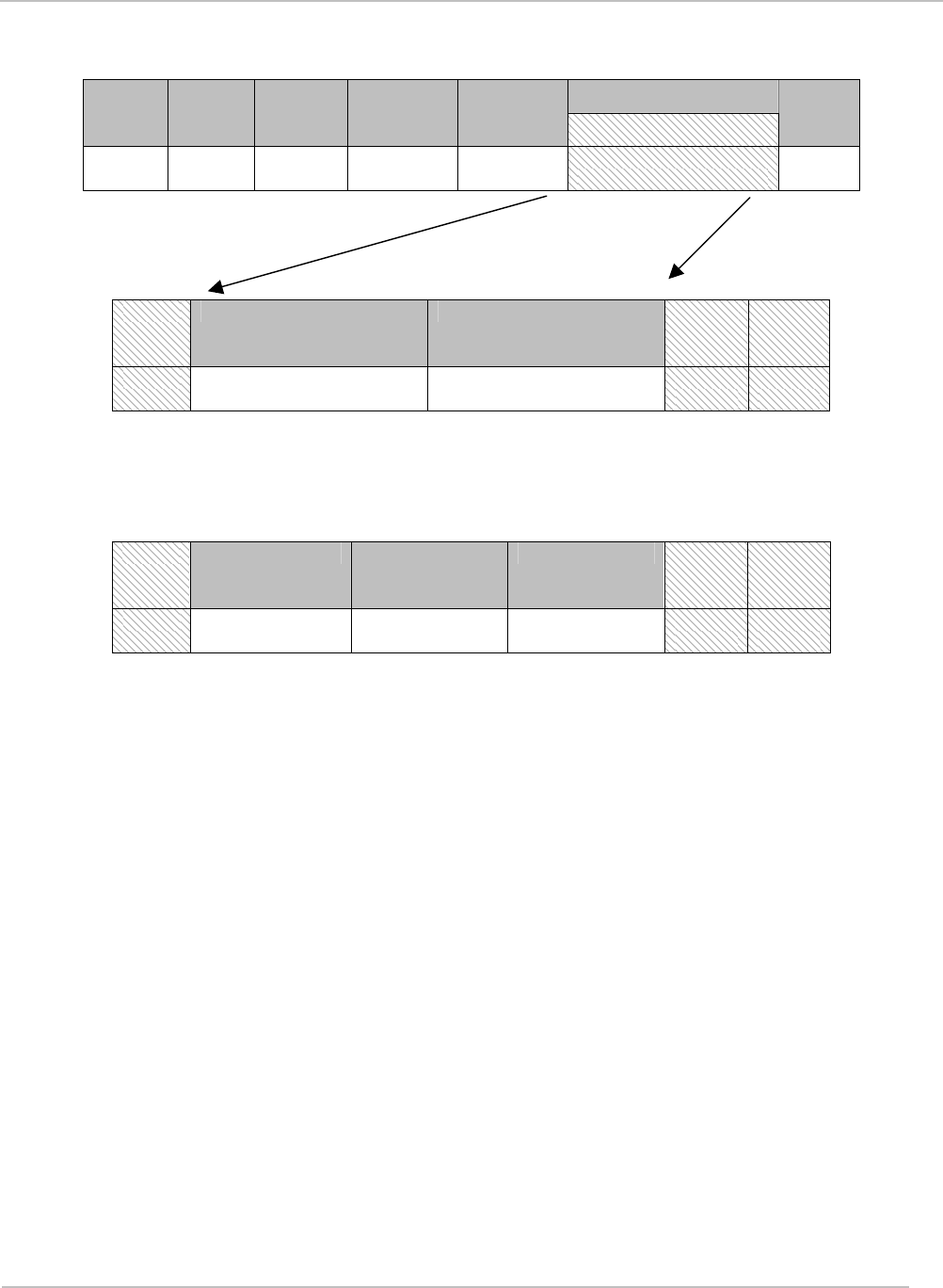
September 2002 S6350 Midrange Reader Module - Reference Guide
33
ISO Read Single Block Response Packet
ISO Response Data Header Packet
Length
Node
Address
Response
Flags
Command
Data
Check
sum
‘01hex’ 2 bytes 2 bytes 1 byte ‘60hex’ bytes
0 - m
2 bytes
Response when Error_flag is set
SOF Flags Error Code CRC16 EOF
Not
Used
1 byte 1 byte Not
Used
Not
Used
OR
Response when Error_flag is not set
SOF Flags Block Security
status
Data CRC16 EOF
Not
Used
1 byte 1 byte Block length Not
Used
Not
Used
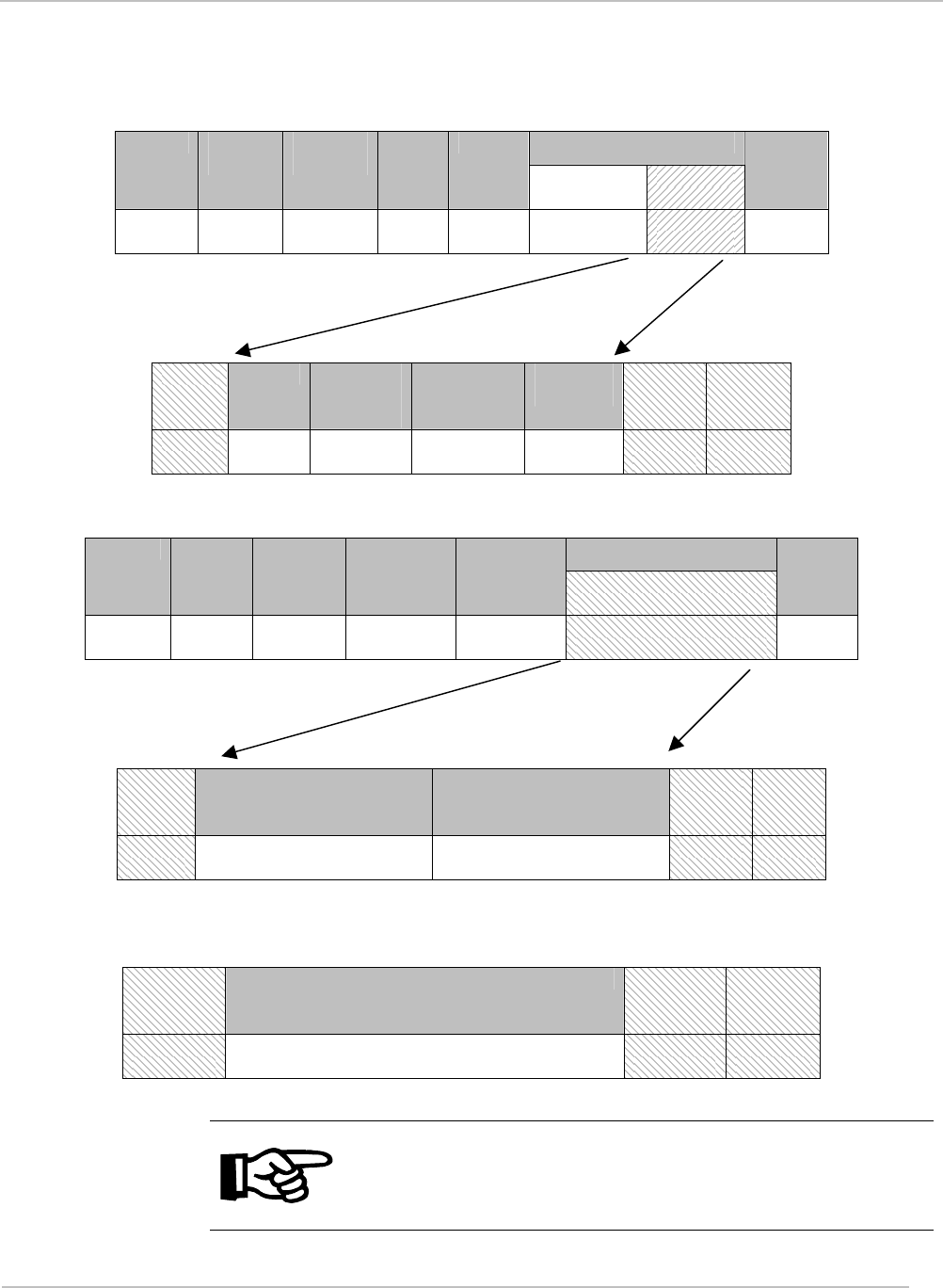
September 2002 S6350 Midrange Reader Module - Reference Guide
34
ISO Write Single Block: Command Code (21hex)
ISO Write Single Block Request Command Packet
ISO Command Data Header Packet
Length
Node
Address
Cmd
Flag
Cmd
Config.
Byte
Data
Check-
sum
‘01hex’ 2 bytes 2 bytes 1
byte
‘60hex’ Byte 0 bytes
1 - n
2 bytes
ISO Request Format
SOF *Flags Write
Single
Block
UID Block
number
CRC16 EOF
Not
Used
1 byte ‘21hex’ 8 bytes 1 byte Not
Used
Not
Used
ISO Write Single Block Response Packet
ISO Response Data Header Packet
Length
Node
Address
Response
Flags
Command
Data
Check
sum
‘01hex’ 2 bytes 2 bytes 1 byte ‘60hex’ bytes
1 - m
2 bytes
Response when Error_flag is set
SOF Flags Error Code CRC16 EOF
Not
Used
1 byte 1 byte Not
Used
Not
Used
OR
Response when Error_flag is not set
SOF Flags CRC16 EOF
Not
Used
1 byte Not
Used
Not
Used
Note:
* Bit 7 of the ISO 15693 protocol Option_Flag must be set to 1 for
all Write and Lock commands to respond properly.
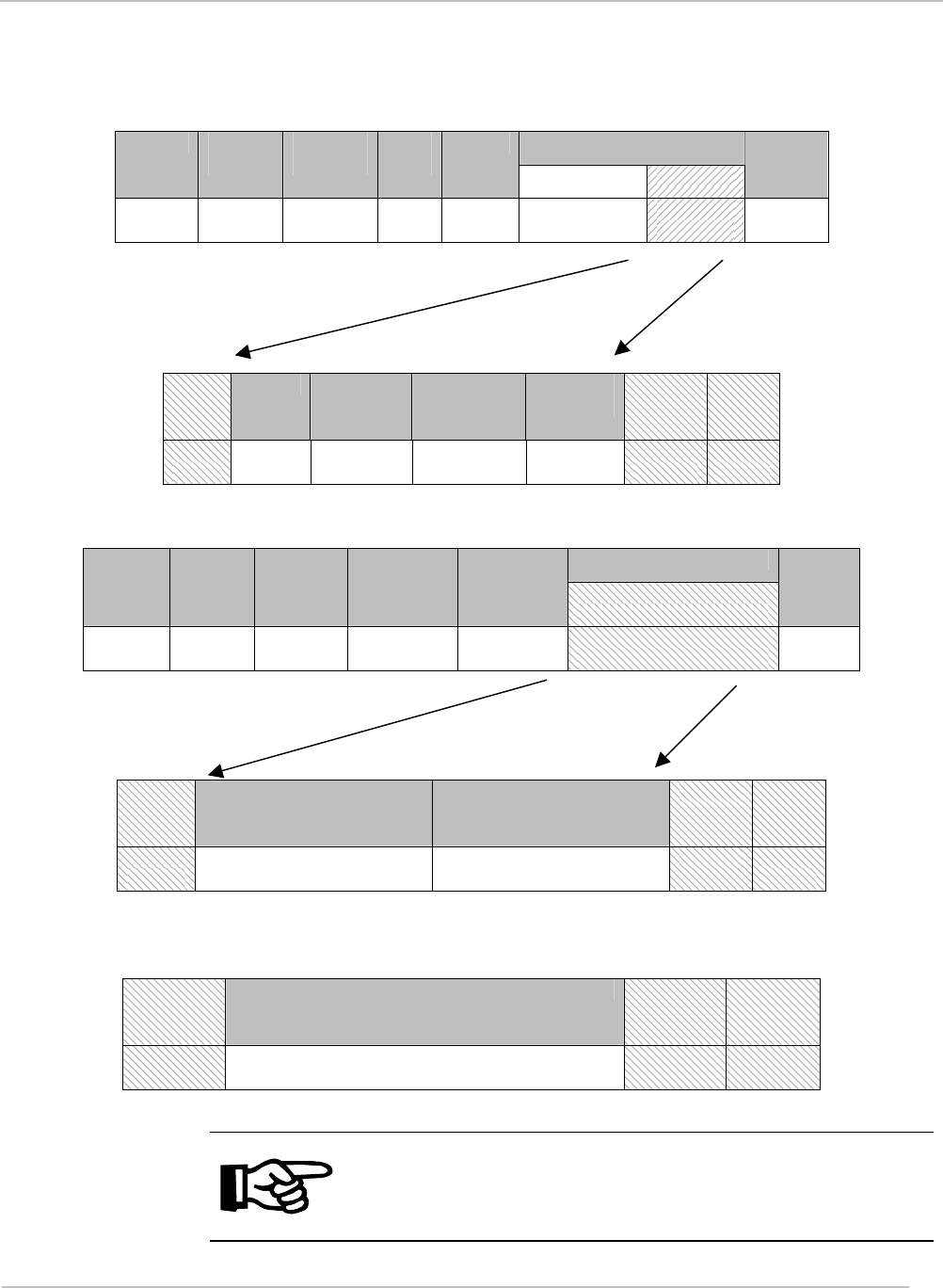
September 2002 S6350 Midrange Reader Module - Reference Guide
35
ISO Lock Block: Command Code (22hex)
ISO Lock Block Request Command Packet
ISO Command Data Header Packet
Length
Node
Address
Cmd
Flag
Cmd
Config. Byte Data
Check-
sum
‘01hex’ 2 bytes 2 bytes 1
byte
‘60hex’ Byte 0 bytes
1 - n
2 bytes
ISO Request Format
SOF *Flags Lock
Block
UID Block
number
CRC16 EOF
Not
Used
1 byte ‘22hex’ 8 bytes 1 byte Not
Used
Not
Used
ISO Lock Block Response Packet
ISO Response Data Header Packet
Length
Node
Address
Response
Flags
Command
Data
Check
sum
‘01hex’ 2 bytes 2 bytes 1 byte ‘60hex’ bytes
1 - m
2 bytes
Response when Error_flag is set
SOF Flags Error Code CRC16 EOF
Not
Used
1 byte 1 byte Not
Used
Not
Used
OR
Response when Error_flag is not set
SOF Flags CRC16 EOF
Not
Used
1 byte Not
Used
Not
Used
Note:
* Bit 7 of the ISO 15693 protocol Option_Flag must be set to 1 for
all Write and Lock commands to respond properly.
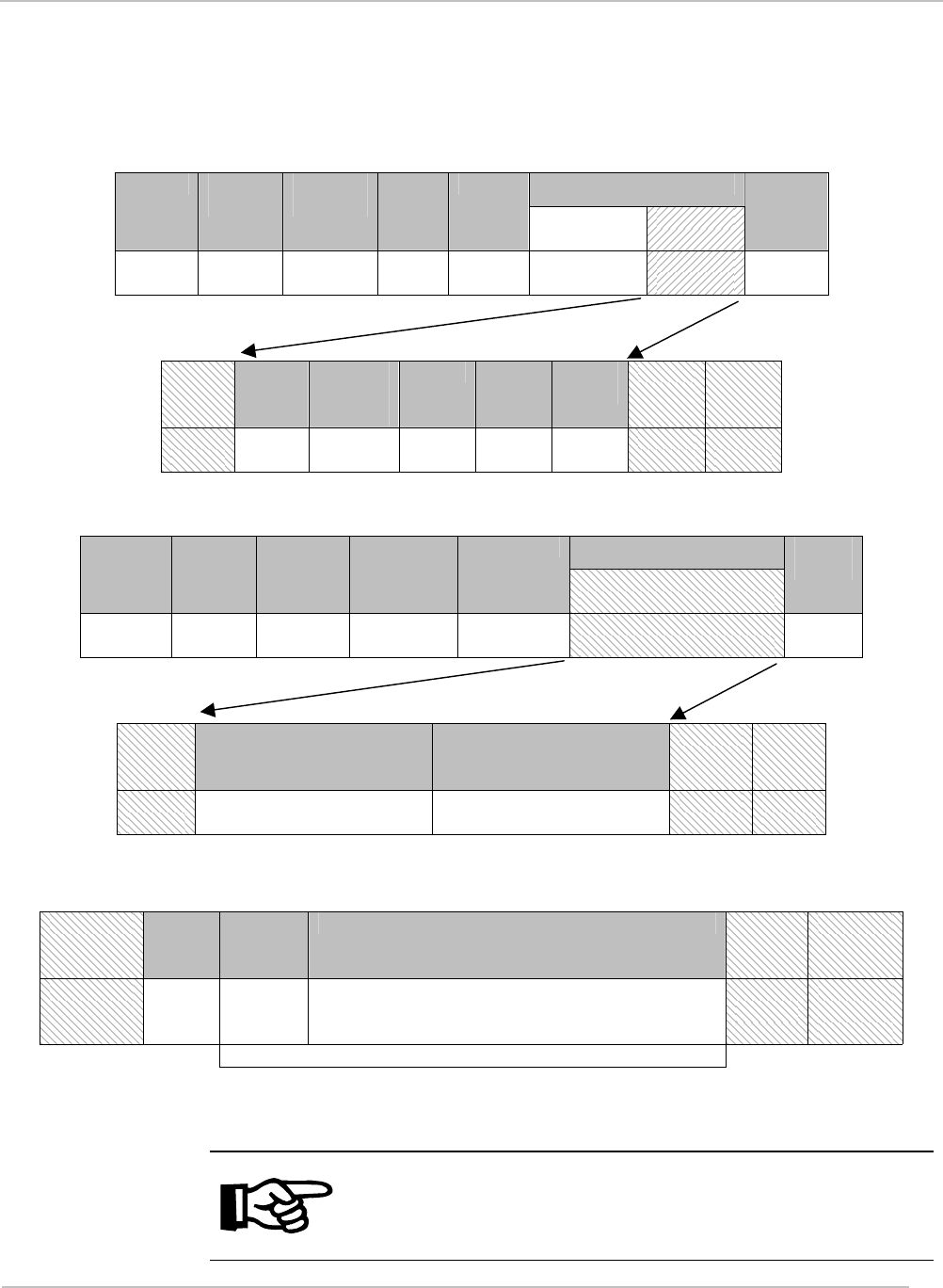
September 2002 S6350 Midrange Reader Module - Reference Guide
36
ISO Read Multiple Blocks: Command Code (23hex)
ISO Read Multiple Blocks Request Command Packet
ISO Command Data Header Packet
Length
Node
Address
Cmd
Flag
Cmd
Config.
Byte
Data
Check-
sum
‘01hex’ 2 bytes 2 bytes 1
byte
‘60hex’ Byte 0 bytes
1 - n
2 bytes
ISO Request Format
SOF Flags Read
Multiple
Blocks
UID 1st
Block
#
# of
blocks
CRC1
6
EOF
Not
Used
1 byte ‘23hex’ 8
bytes
1 byte 1 byte Not
Used
Not
Used
ISO Read Multiple Blocks Response Packet
ISO Response Data Header Packet
Length
Node
Address
Response
Flags
Command
Data
Check
sum
‘01hex’ 2 bytes 2 bytes 1 byte ‘60hex’ bytes
1 - m
2
bytes
Response when Error_flag is set
SOF Flags Error Code CRC16 EOF
Not
Used
1 byte 1 byte Not
Used
Not
Used
OR
Response when Error_flag is not set
SOF Flags Block
Security
Status
Data CRC16 EOF
Not
Used
1 byte 1 byte Block length Not
Used
Not
Used
Repeat as needed
Note:
The maximum number of data blocks which can be requested with
one ISO Read Multiple Blocks Command is 61.
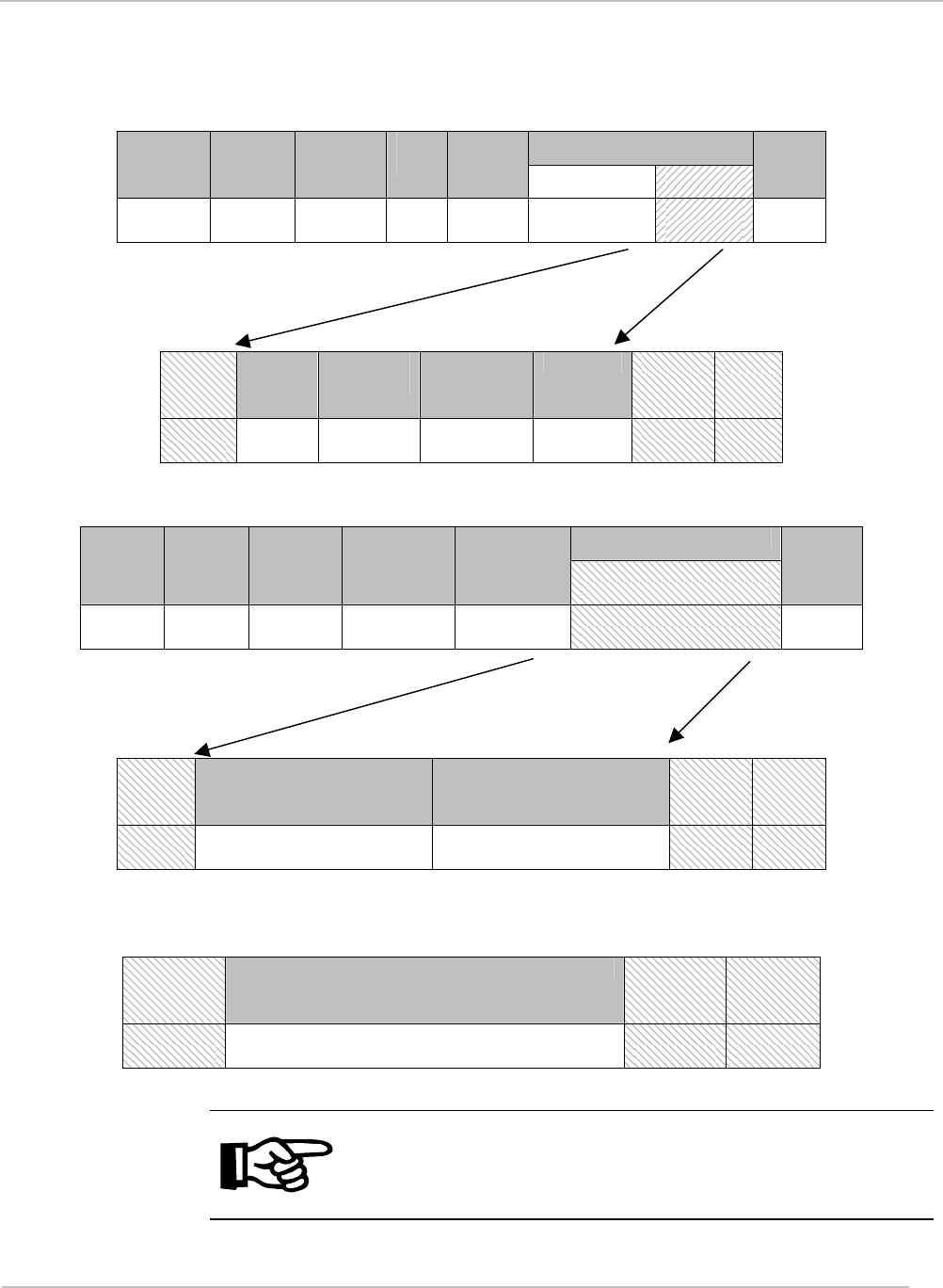
September 2002 S6350 Midrange Reader Module - Reference Guide
37
ISO Write AFI: Command Code (27hex)
ISO Write AFI Request Command Packet
ISO Command Data Header Packet
Length
Node
Address
Cmd
Flag
Cmd
Config. Byte Data
Chec
k-sum
‘01hex’ 2 bytes 2 bytes 1
byte
‘60hex’ Byte 0 bytes
1 - n
2
bytes
ISO Request Format
SOF *Flags Write
AFI
UID AFI CRC16 EOF
Not
Used
1 byte ‘27hex’ 8 bytes 1 byte Not
Used
Not
Used
ISO Write AFI Response Packet
ISO Response Data Header Packet
Length
Node
Address
Response
Flags
Command
Data
Check
sum
‘01hex’ 2 bytes 2 bytes 1 byte ‘60hex’ bytes
1 - m
2 bytes
Response when Error_flag is set
SOF Flags Error Code CRC16 EOF
Not
Used
1 byte 1 byte Not
Used
Not
Used
OR
Response when Error_flag is not set
SOF Flags CRC16 EOF
Not
Used
1 byte Not
Used
Not
Used
Note:
* Bit 7 of the ISO 15693 protocol Option_Flag must be set to 1 for
all Write and Lock commands to respond properly.
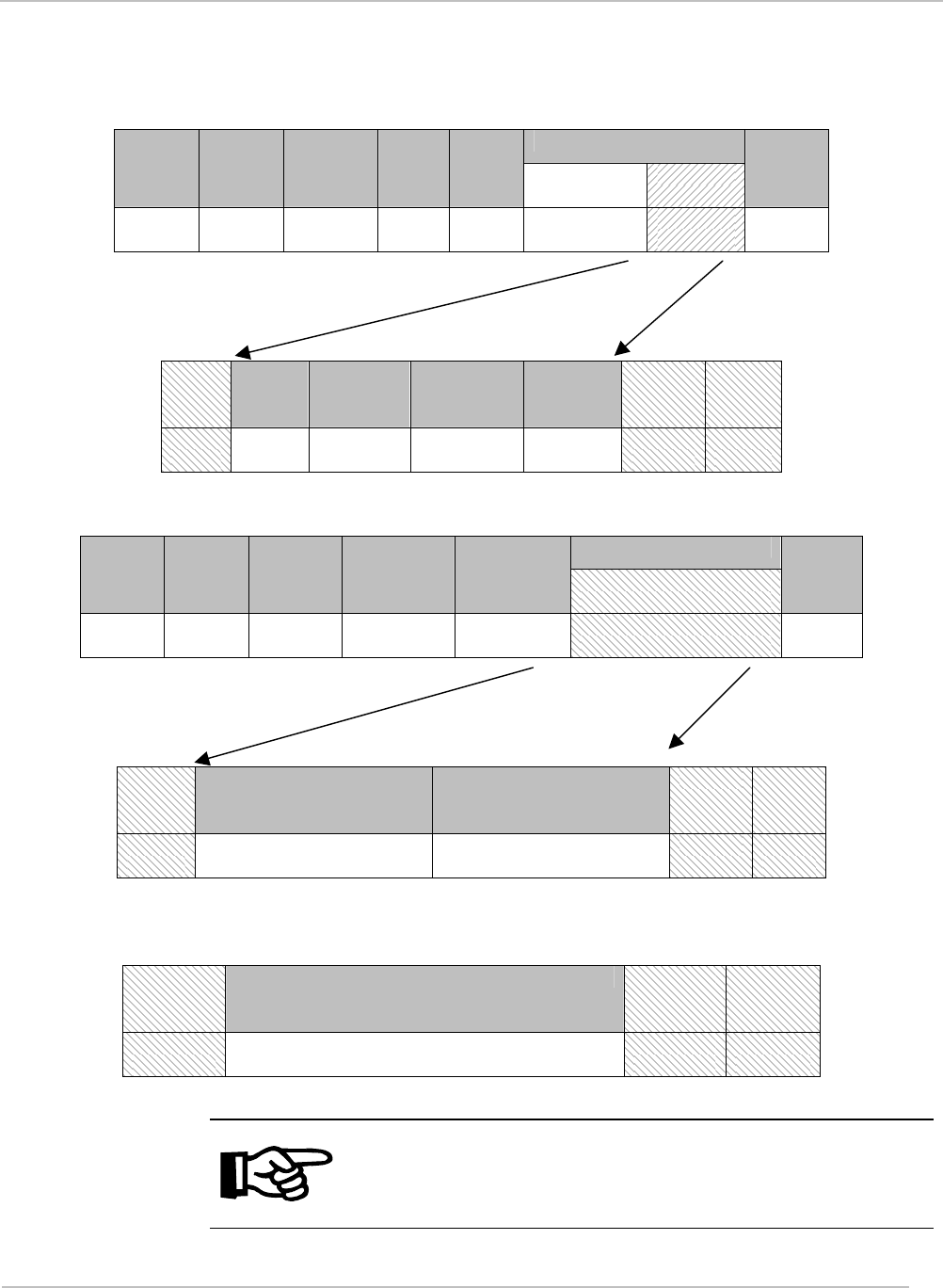
September 2002 S6350 Midrange Reader Module - Reference Guide
38
ISO Lock AFI: Command Code (28hex)
ISO Lock AFI Request Command Packet
ISO Command Data Header Packet
Length
Node
Address
Cmd
Flag
Cmd
Config.
Byte
Data
Check-
sum
‘01hex’ 2 bytes 2 bytes 1
byte
‘60hex’ Byte 0 bytes
1 - n
2 bytes
ISO Request Format
SOF *Flags Lock
AFI
UID AFI CRC16 EOF
Not
Used
1 byte ‘28hex’ 8 bytes 1 byte Not
Used
Not
Used
ISO Lock AFI Response Packet
ISO Response Data Header Packet
Length
Node
Address
Response
Flags
Command
Data
Check
sum
‘01hex’ 2 bytes 2 bytes 1 byte ‘60hex’ bytes
1 - m
2 bytes
Response when Error_flag is set
SOF Flags Error Code CRC16 EOF
Not
Used
1 byte 1 byte Not
Used
Not
Used
OR
Response when Error_flag is not set
SOF Flags CRC16 EOF
Not
Used
1 byte Not
Used
Not
Used
Note:
* Bit 7 of the ISO 15693 protocol Option_Flag must be set to 1 for
all Write and Lock commands to respond properly.
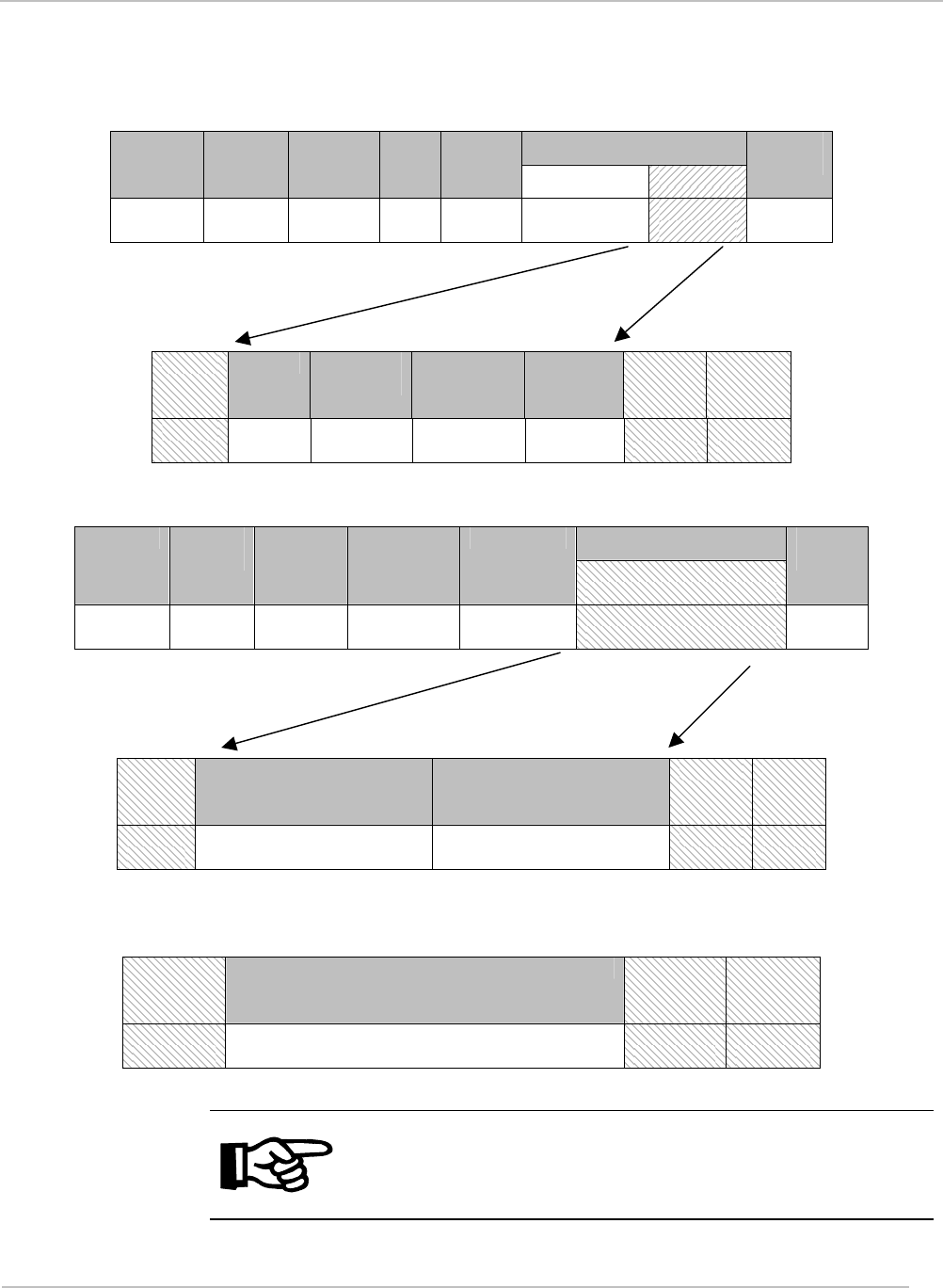
September 2002 S6350 Midrange Reader Module - Reference Guide
39
ISO Write DSFID: Command Code (29hex)
ISO Write DSFID Request Command Packet
ISO Command Data Header Packet
Length
Node
Address
Cmd
Flag
Cmd
Config. Byte Data
Check-
sum
‘01hex’ 2 bytes 2 bytes 1
byte
‘60hex’ Byte 0 bytes
1 - n
2 bytes
ISO Request Format
SOF *Flags Write
DSFID
UID DSFID CRC16 EOF
Not
Used
1 byte ‘29hex’ 8 bytes 1 byte Not
Used
Not
Used
ISO Write DSFID Response Packet
ISO Response Data Header Packet
Length
Node
Address
Response
Flags
Command
Data
Check
sum
‘01hex’ 2 bytes 2 bytes 1 byte ‘60hex’ bytes
1 - m
2 bytes
Response when Error_flag is set
SOF Flags Error Code CRC16 EOF
Not
Used
1 byte 1 byte Not
Used
Not
Used
OR
Response when Error_flag is not set
SOF Flags CRC16 EOF
Not
Used
1 byte Not
Used
Not
Used
Note:
* Bit 7 of the ISO 15693 protocol Option_Flag must be set to 1 for
all Write and Lock commands to respond properly.
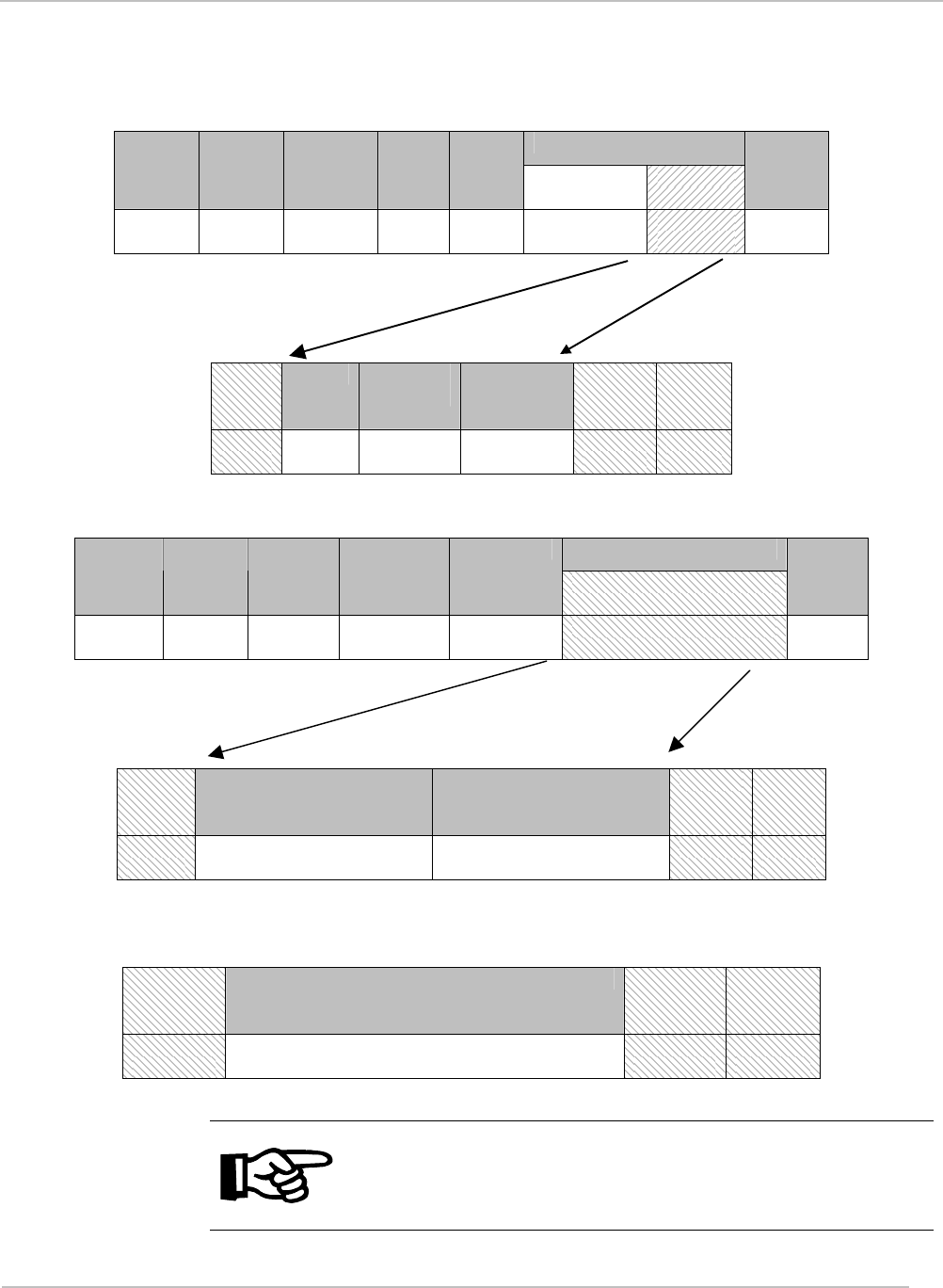
September 2002 S6350 Midrange Reader Module - Reference Guide
40
ISO Lock DSFID: Command Code (2Ahex)
ISO Lock DSFID Request Command Packet
ISO Command Data Header Packet
Length
Node
Address
Cmd
Flag
Cmd
Config.
Byte
Data
Check-
sum
‘01hex’ 2 bytes 2 bytes 1
byte
‘60hex’ Byte 0 bytes
1 - n
2 bytes
ISO Request Format
SOF *Flags Lock
DSFID
UID CRC16 EOF
Not
Used
1 byte ‘2Ahex’ 8 bytes Not
Used
Not
Used
ISO Lock DSFID Response Packet
ISO Response Data Header Packet
Length
Node
Address
Response
Flags
Command
Data
Check
sum
‘01hex’ 2 bytes 2 bytes 1 byte ‘60hex’ bytes
1 - m
2 bytes
Response when Error_flag is set
SOF Flags Error Code CRC16 EOF
Not
Used
1 byte 1 byte Not
Used
Not
Used
OR
Response when Error_flag is not set
SOF Flags CRC16 EOF
Not
Used
1 byte Not
Used
Not
Used
Note:
* Bit 7 of the ISO 15693 protocol Option_Flag must be set to 1 for
all Write and Lock commands to respond properly.
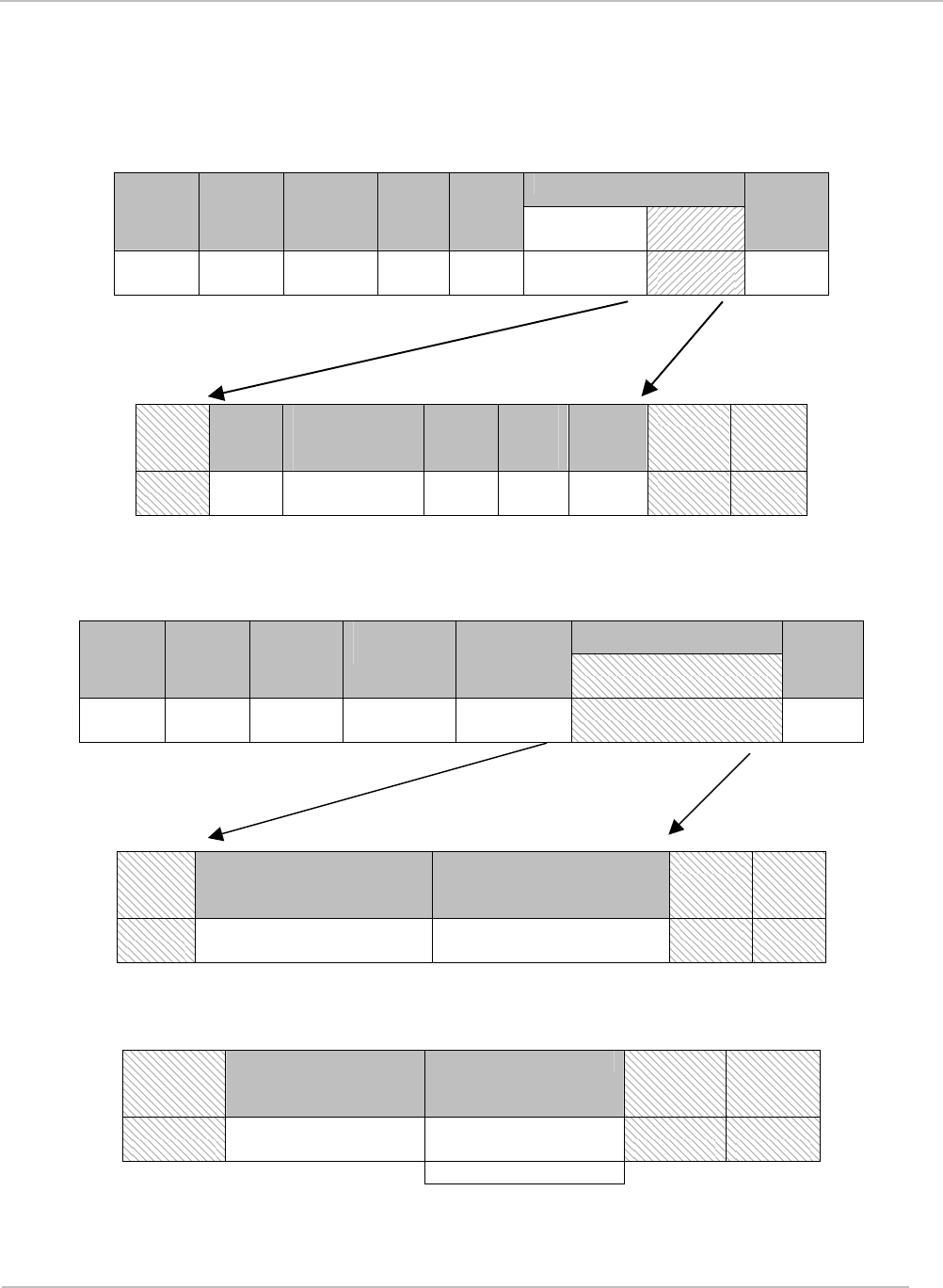
September 2002 S6350 Midrange Reader Module - Reference Guide
41
ISO Get Multiple Block Security Status: Command Code (2Chex)
ISO Get Multiple Block Security Status Request Command Packet
ISO Command Data Header Packet
Length
Node
Address
Cmd
Flag
Cmd
Config.
Byte
Data
Check-
sum
‘01hex’ 2 bytes 2 bytes 1
byte
‘60hex’ Byte 0 bytes
1 - n
2 bytes
ISO Request Format
SOF Flags Get Multiple
Block Security
Status
UID 1st
Block
#
# of
Blocks
CRC16 EOF
Not
Used
1 byte ‘2Chex’ 8
bytes
8
bytes
Not
Used
Not
Used
ISO Get Multiple Block Security Status Response Packet
ISO Response Data Header Packet
Length
Node
Address
Response
Flags
Command
Data
Check
sum
‘01hex’ 2 bytes 2 bytes 1 byte ‘60hex’ bytes
1 - m
2 bytes
Response when Error_flag is set
SOF Flags Error Code CRC16 EOF
Not
Used
1 byte 1 byte Not
Used
Not
Used
OR
Response when Error_flag is not set
SOF Flags Block Security Status CRC16 EOF
Not
Used
1 byte 1 byte Not
Used
Not
Used
Repeat as needed
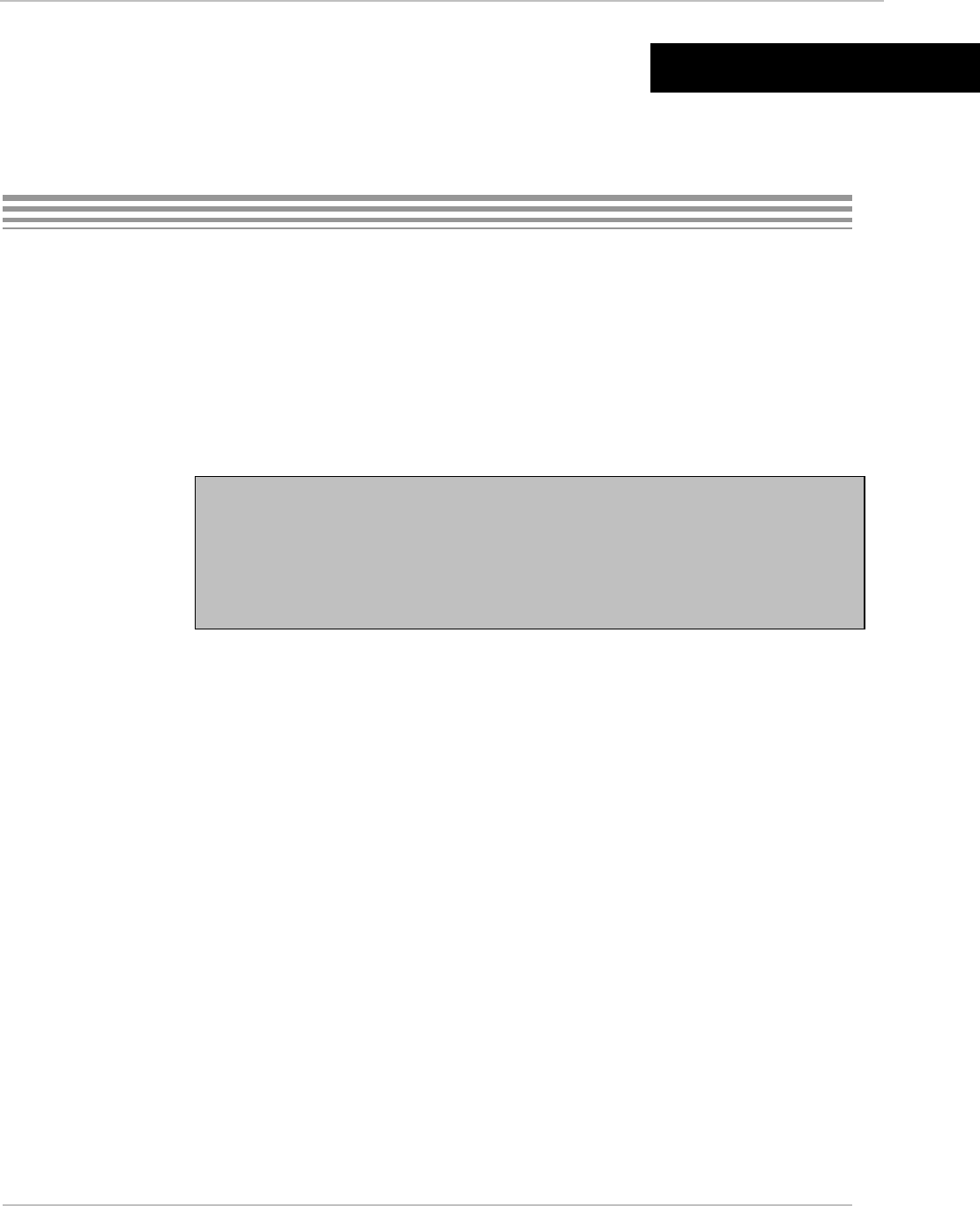
42
Regulatory and Warranty Notices
Topic Page
4.1 Regulatory Notes ............................................................................................. 43
4.2 FCC Notices (U.S.A.)....................................................................................... 43
4.3 R&TTE Conformity (Europe)........................................................................... 43
4.4 Warranty and Liability ...................................................................................... 43
Chapter 4

September 2002 Series 6350 Reader Reference Guide
43
4.1 Regulatory Notes
An RFID system comprises an RF transmission device, and is therefore subject to national and
international regulations.
Prior to operating the S6350 Midrange Reader Module together with antenna and power supply,
the required FCC, PTT or relevant government agency approval must be obtained. Sales, lease
or operation in some countries may be subject to prior approval by the government or other
organization.
4.2 FCC Notices (U.S.A.)
A typical system configuration containing the S6350 Midrange Reader Module has been tested
and found to comply with the limits for a Class A digital device, pursuant to Part 15 of the FCC
Rules.
It is the responsibility of the system integrators to get their complete system tested and to obtain
approvals from the appropriate local authorities before operating or selling this system.
4.3 R&TTE Conformity (Europe)
A typical system configuration containing the S6350 Midrange Reader Module has been tested
and found to comply with the requirements of the Telecommunication Terminal Equipment Act
(FTEG) and the R&TTE Directive 1999/5/EC. Any device or system incorporating the S6350
Midrange Reader Module in any other than the originally tested configuration needs to be
verified against the requirements of the Telecommunication Terminal Equipment Act (FTEG)
and the R&TTE Directive 1999/5/EC. A separate Declaration of Conformity must be issued by
the System Integrator or user of such a system prior to marketing and operating it in European
Community.
It is the responsibility of the system integrator to get their complete system tested and obtain
approvals from the appropriate local authorities before operating or selling the system.
4.4 Warranty and Liability
The "General Conditions of Sale and Delivery" of Texas Instruments Incorporated or a TI
subsidiary apply. Warranty and liability claims for defect products, injuries to persons and
property damages are void if they are the result of one or more of the following causes:
§ Improper use of the reader module.
§ Unauthorized assembly, operation and maintenance of the reader module.
§ Operation of the reader modules with defective and/or non-functioning safety and
protective equipment.
§ Failure to observe the instructions during transport, storage, assembly, operation,
maintenance and setting up of the reader modules.
§ Unauthorized changes to the reader modules.
§ Insufficient monitoring of the reader modules' operation or environmental conditions.
§ Improperly conducted repairs.
§ Catastrophes caused by foreign bodies and acts of God.
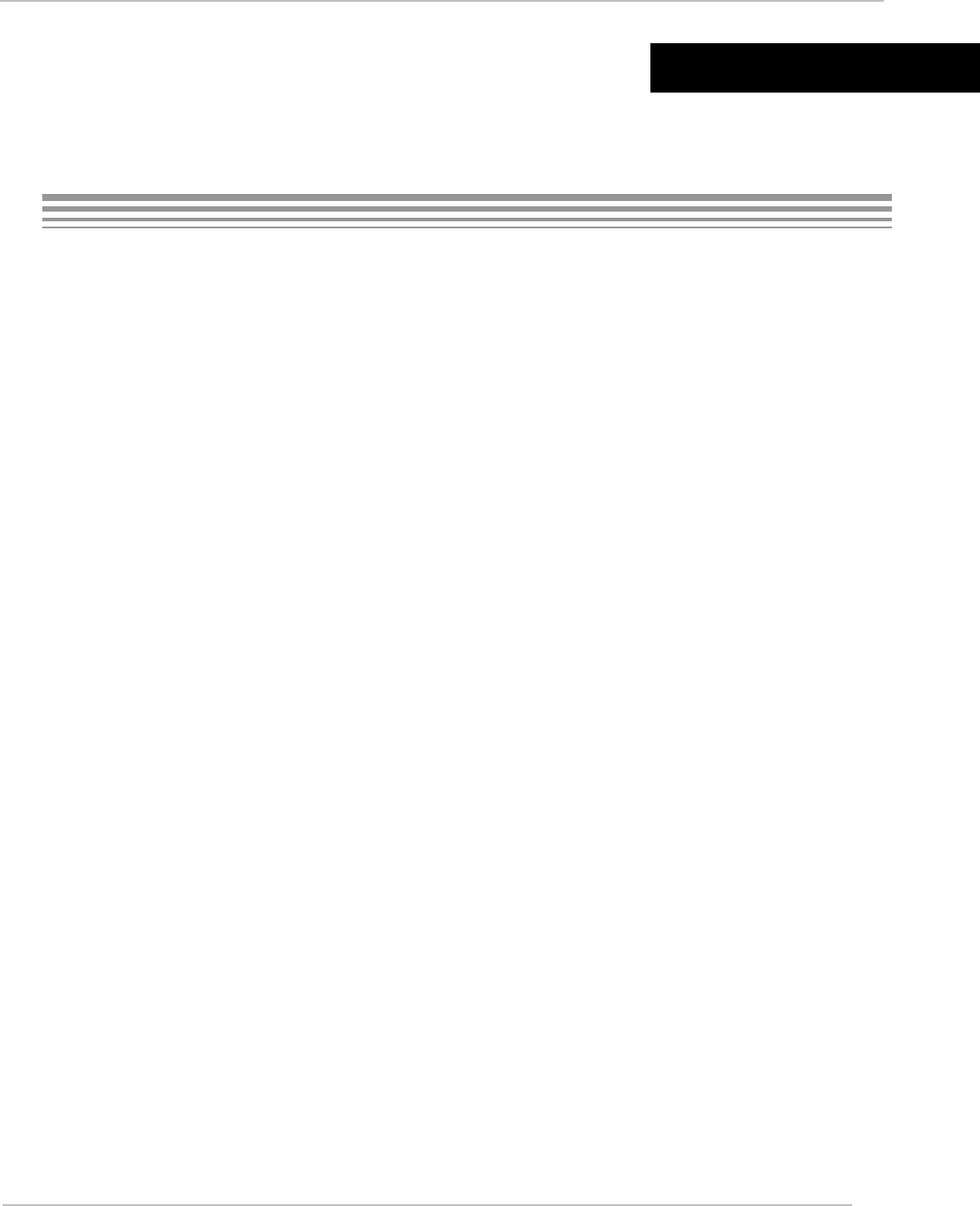
44
Downloading Data to FLASH Memory
The S 6350 Reader FLASH memory contains two areas: the application area for the Reader
application firmware and a boot-loader area for the boot-loader firmware. The boot-loader
memory is factory locked.
After a reset the boot-loader firmware runs the following sequence:
• Control registers are initialized
• IO ports are initialized
• Application memory is scanned and verified
• If the application memory checksums are valid then control is transferred to the
application memory
• If the checksums fail then the boot-loader takes control of the communications.
The boot-loader will only accept the following commands:
• Initiate FLASH Loader Command (D0 hex)
• Send Data to FLASH Command (D8hex)
• Read reader Version Command (F0hex)
The boot loader only operates at 57600 baud with 8 data bits, 1 start bit, 1 stop bit and no parity.
The application firmware will always accept the Initiate FLASH Loader Command (D0 hex).
When this command is received by the application firmware, control is transferred to the boot-
loader. If the boot-loader does not receive a Send Data to FLASH Command (D8hex) within 5
seconds of the Initiate FLASH Loader Command (D0 hex) then a system reset is generated.
The application firmware is provided in a single file and contains all the necessary checksums.
The file will always contain 29700 bytes of data.
The file must be sent to the reader in one session if any errors occur the whole file must be
resent. The file is sent in 225 segments, 132 bytes at a time (225 x 132 = 29700). Each segment
is sent using the Send Data to FLASH Command (D8hex). The 132 bytes of data are contained
in the data section of the packet.
Appendix A
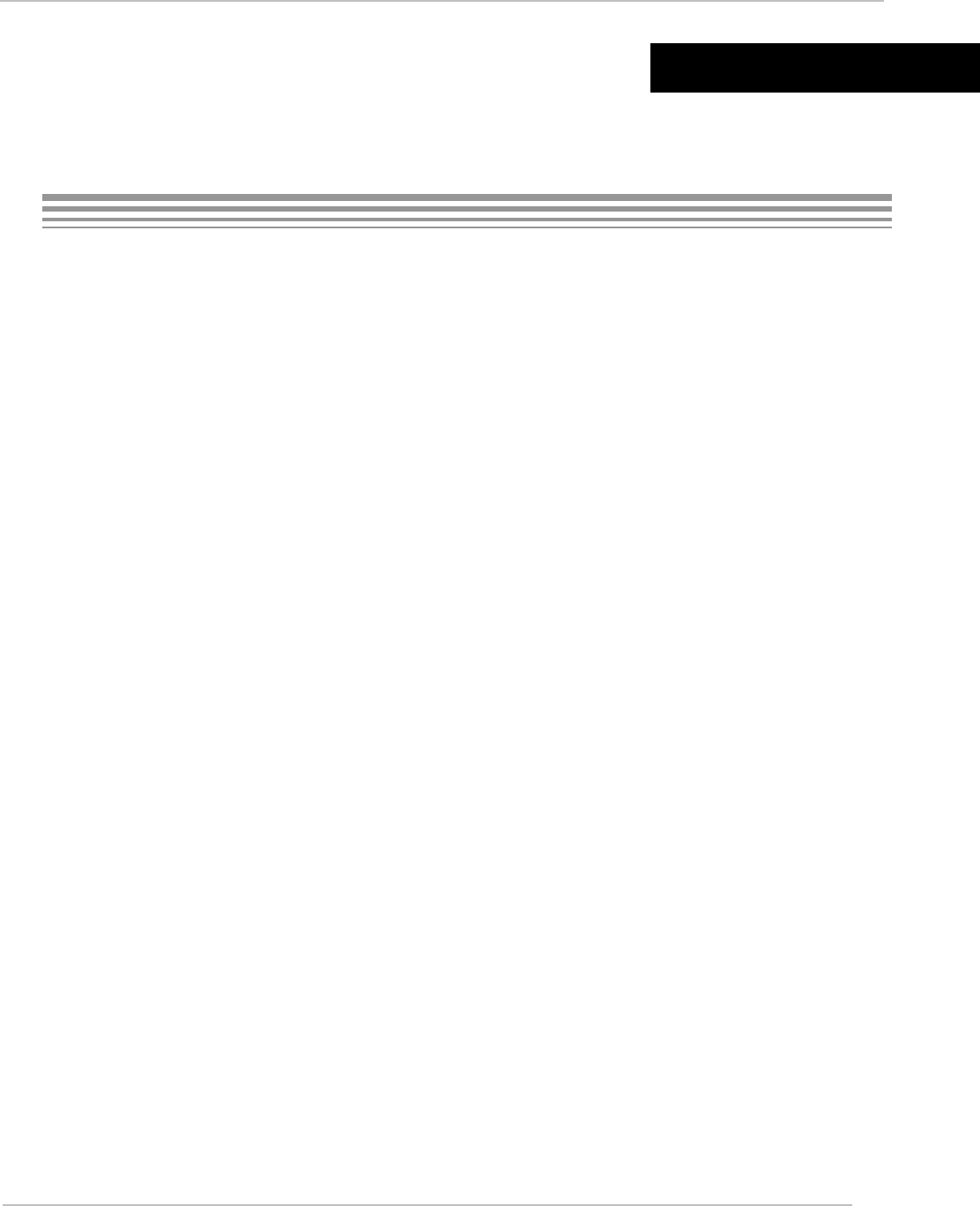
45
Error Codes
Code number Meaning
01hex Transponder not found
02hex Command not supported
03hex Packet BCC invalid
04hex Packet flags invalid for command
05hex General write failure
06hex Write failure due to locked block
07hex Transponder does not support function
0Fhex Undefined error
Appendix B
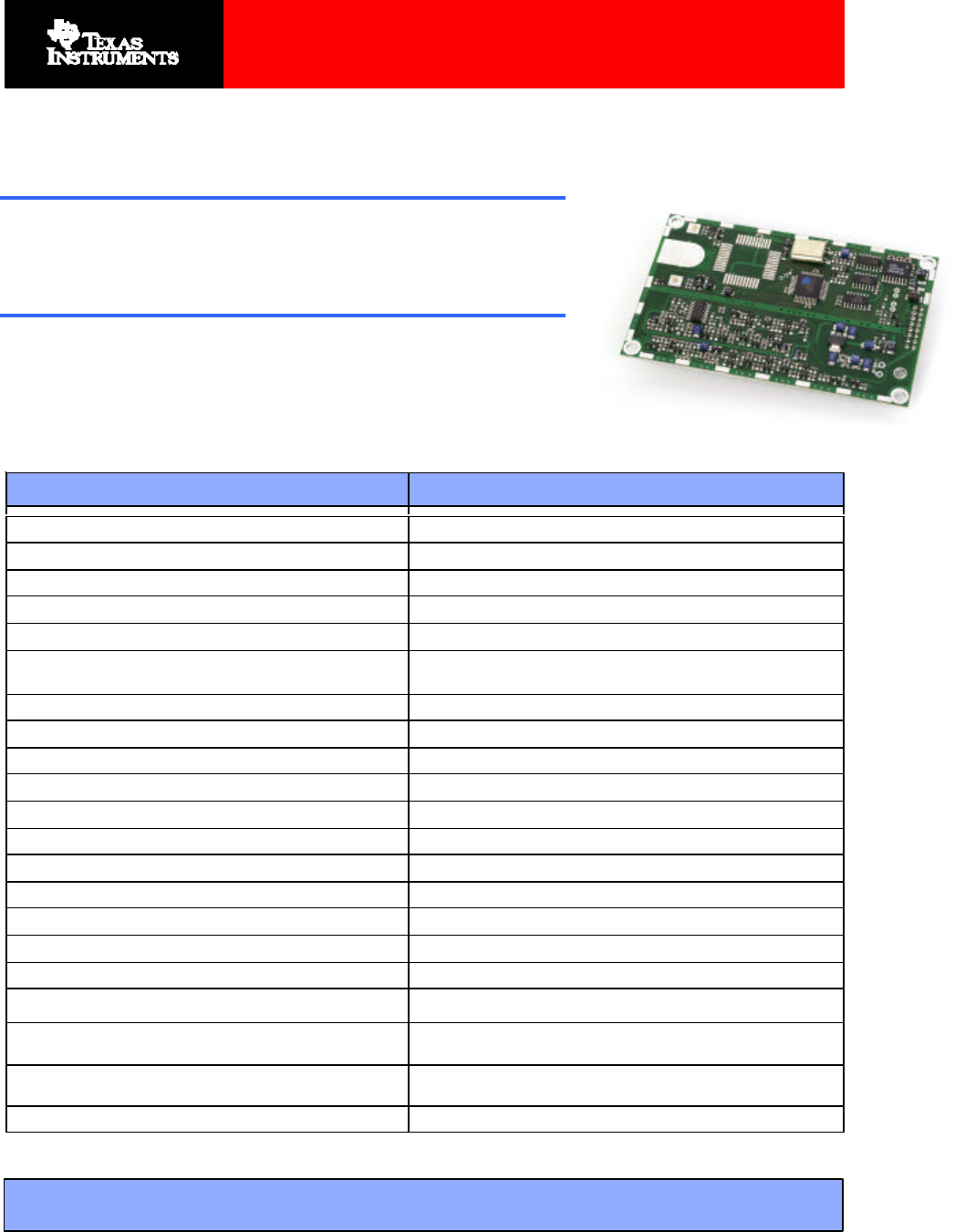
Texas Instruments reserves the right to change its products and services at any time without notice. TI provides customer assistance in various technical
areas, but does not have full access to data concerning the uses and applications of customers products. Therefore, TI assumes no responsibility for
customer product design or for infringement of patents and/or the rights of third parties, which may result from assistance provided by TI.
© Copyright 2001 Texas Instruments Incorporated. Data Sheet: 11-06-22-706 10/01
Specifications:
Part Number RI-STU-TRDC-02
Operating Frequency 13.56 MHz ± 7 kHz
Supported Transponders Tag-it HF, Tag-it HF-I & ISO 15693 compliant transponders
Supply Voltage 5 VDC ± .5VDC
Power Consumption 1250 mW Maximum
Transmitter Power 120 mW into 50 (Typical)
Transmitter Modulation AM 10% - 30% (set at 20% nominal) or 100% - Software
Selectable
Data Coding Mode 1 / 4 or 1 / 256
Input/Output 16-pin Header Connector
Antenna Connection 2 pins of 16-pin Header Connector
Antenna Impedance 50 ± 5 @ 13.56MHz
Antenna Q, Loaded 10 < Q < 30
Communication Interface RS232 (via 16-pin Header Connector)
Communication Parameters 57.6 K-baud, 8 data bits, 1 start bit, 1 stop bit & no parity
Communication Protocol Tag-it & ISO Host protocol
Memory Flash for downloadable firmware updates
Synchronization Protocol synchronization via I/O
Operating Temperature -20°C to +70°C
Storage Temperature -40°C to +85°C
Vibration 15 Hz to 500 Hz, 1g peak, 30 minutes sweep, logarithmic
(MIL-STD-810E, Method 514.4)
Dimensions 4.3” x 2.7” x 0.4”
109.22mm x 68.58mm x 10.2mm (metric)
Weight 1.09 oz (31 grams)
For more information, contact the sales office or distributor nearest you. This contact information can be found
on our web site at: http://www.ti-rfid.com
Data Sheet
HF Reader System Series 6000
S6350 Midrange Reader Module
RADIO FREQUENCY IDENTIFICATION SYSTEMS